First up, let me put it out there that I have absolutely no intention of becomming a yarn dyer. There are so many incredible dyers out there and I could never hope to attain the levels of greatness that they can achieve.
That said, I have a hunger to understand crafting skills and processes. I am very inquisitive and this all leads to me dabbling in lots of things - possibly too many! Dyeing is my latest finger in pie action and it doesn't have to stop at wool and yarns, you can try fabrics too.
So although I don't want to become a yarn dyer, what I am excited by is being able to dye up the 10g of just the right brown that I need for a colourwork project or 500g of the right shade of blue for a jumper...
To my current knowledge you can split yarn dyeing into three main categories:
- natural dyes (things taken from nature)
- food colourants such as icing or cake colourants or KoolAid
- professional dyes (often referred to as acid dyes)
I have now tried all three and I want to share the results with you in this blog post. As I have said, I am not an expert and at the end I will provide lots of links to other blog posts or sites where you can gain more detailed information. This will include pointers on Health and Safety - something to be very aware of when you are dyeing yarn or fabric.
My plan is to host #Fridayisdyeday on Instagram whereby other dye-curious folk can see what you can create from the comfort of your kitchen and join in.
The first #Fridayisdyeday is going to be on the 27th October 2017 and my hope is that it becomes a monthly thing (last Friday of every month). I may not be dyeing every month but if not, I will be showing off what I have been making with my dyed yarn.
Natural Dyeing
I was lucky enough to recieve this Natural Dyeing Starter Kit from DT Crafts as a Christmas present. It's a great starter kit containing lots of the standard natural dye stuffs such as madder, logwood, alum, gloves, apron etc. That same Christmas I also received Wild Color: A Complete Guide to Making and Using Natural Dyes by Jenny Dean (I have provided the Amazon link so that you have the ISBN). I subsequently found the Textile Handbook Natural Dyes by Linda Rudkin and between these resources and the internet, I feel like I am very well equiped for natural dyeing.
Using the starter kit I dyed some 100% linen with madder and got a beautiful gradient of colours as I exhausted the dye pot (exhauting means using up all of the dye) and if you add skeins of yarn in gradually each skein will have less dye to soak up and you can get the gradient.
I have recently started attending my local Spinners, Weavers and Dyers Guild (searchfor one locally to you if this is something that you are interested in - I thoroughly recommend it as there is a wealth of knowledge there) and that reignited my dyeing curiosity.
This time, rather than taking to my dye starter kit, I looked to nature to provide the dyestuff and gathered blackberries, acorns, onion skins (brown and red), silver birch bark, an oak gall and had already been saving some daffodil heads. Here are the results and recipes that I used:
For the following, the yarn was soaked the night before in water ( to maximise the uptake of dye) and then alum the next morning (alum is a mordant which helps to fix the dye to the yarn). For the alum I used 8 litres of water and 4 teaspoons of Potassium Aluminium Sulphate.
Blackberries - 200g to dye 100g of skinny Merino 4 ply and 100g of generic undyed wool. Blackberries were blended to a paste, brought to a simmer for 30 minutes, cooled and filtered through a jam seive to capture the liquid. The liquid was used as the dye stock and the yarn was placed in it for 45 minutes prior to letting it cool and rinsing the dye stock off. I could have reached a darker colour by leaving the yarn in the stock overnight but I really liked the silvery purple colour I gained.
Blackberries are 'fugitive' as a dye stock so repeated washing and exposure to sunlight will lead to the dye colour disappearing. The Blackberry dyed skinny Merino has already been made into a shawl which will see very few washes (if any at all) and will be kept in a cupboard when not in use.
It is apparently better to use fresh blackberries but frozen ones will also work. I actually added a few sprinklings of frozen mixed berries into the dye pot and it gave little areas of more intense colours in the aras where the whole berries were - the balck cherry spots were partiicularly obvious, as were the blackberry seeds that I kept on finding in the yarn afterwards...
Red onion skins (outer layers) - I had been collecting these for a number of months and I believe that older skins give better colours. It takes a long time to gather large quantities so if you wanted to dye up a lot, it may be worth befriending your local green grocer. I only managed to collect 20g of red onion skins which is enough to dye a mere 10g of skinny Merino wool.
I placed the skins in a small tuperware container for a week, turning them occassionally. On the day of dyeing I simmered the skins in the liquid for 30 minutes, drained the liquid from the skins and used it as the dye bath, keeping it on a low heat with the yarn in it for 45 minutes before cooling, draining and rinsing the yarn.
Brown onion skins (outer layers) - I used the exact same process as the red onion skins but had 30g so could dye up 15g of skinny Merino wool. I love the coppery tones that the brown onion skins gave and much prefer it to the dark brown that the red onion skins created.
Daffodil heads - These were collected in Spring time as the flowers were dyeing back. I dried them and used the same soaking and dyeing method as the onion skins but only kept the wool in the heated dye bath .for 30 minutes.
Hawthorn berries - two days before dye day I picked 100g of hawthorn berries and some leaves and twigs (the bark can act as an additional mordant) and blended it to a paste, added water and stored it in a tupperware container. This would have been enough to dye 100g of yarn but I used it all for 65g of skinny Merion wool. On dye day the solution was placed through a jam seive and the liquid was used in the dye bath. The wool was in the simmering dye bath for an hour before cooling, draining and rinsing.
Here are the results from my natural dyeing sessions so far:
Clockwise from top left are four skeins dyed with acorns, a skein dyed with an oak gall (grey skein), hawthorn berries, red onion skins, daffodil heads (yellow one), brown onion skins and two skeins dyed with birch bark.
With my most recent natural dyeing session I didn't use a mordant (apart for one skein) because I was using ingredients that naturally fix the dye onto the yarn (acrorns, birch bark and oak gall):
Acorns - I collected up 400g of acorns and submerged them in 3 litres of water for a week. On dye day the acorns and water were simmered for an hour, drained and the liquid was used as the dye bath. The yarn and dye solution was under gentle heat for 45 minutes before cooling. The colour wasn't as intense as I wanted, so I added 150ml of iron modifier (see notes below).
Birch Bark - same method as the acorns (soaked for a week before dyeing). I used 200g of bark to dye 200g of Merino 4 ply wool and added 100ml of irion modifier at the end of the process. This requires a gentle heat - do noy boil the bark.
Oak Gall - these are quite difficult to come by but I found on my driveway and so had to use it. They are very light but go a very long way. The 5g oak gall will dye at least 50g of yarn but I actually dyed 100g with it. Apparently it is better to use fresher galls and I found mine about a week before I used it for dyeing.
I crushed the gall down in a mortar and pestle and added the gall to water. The water was then simmered for an hour before seiving and using the liquid as the dye bath. The yarn was in the dye bath for 30 minutes before I added 250ml of iron modifier because I wanted quite a dark grey colour.
Adding an iron modifier - I used iron as a modifier which basically changes or intensifies the colour. For the oak gall dyed skein I removed the yarn, added the iron solution, mixed it through thoroughly and then placed the yarn back in and heated the solution again for five minutes or so. That gave a lovely even change of colour across the skein.
With the acorn and birch skeins I wanted to get tonal shifts throughout the skeins and so poured the modifier into the pots and then swished the yarns around. This meant that certain parts of the skein had greater access to the modified solutiona and for longer, making it darker in some areas.
You can see that one of the birch bark skeins is darker than the other and that is because I soaked one skein in alum mordant and not the other. This shows you the diffrences you can gain by adding mordants. Both skeins were in the same pot when the iron modifier was added.
So, what's next up in my natural dye pan?
Well, firstly my friend Ros and I were given a load of old natural dye solutions by somebody in the Alsager Spinners, Weavers and Dyers Guild and I rather fancy triyng to get blue dye perfected. I also created some mordant from rhubarb leaves (oxalic acid so be careful) which I want to play around with as it can create a nice soft green colour in its own right.
I also have some fresh turmeric root which I have popped into my freezer until I am ready to use it (tomorrow) and my 'vegetable' patch is full of nasturtium flowers. They have bright orange and yellow flowers that look like they could be prefect for the dye pot...
Dyeing with food colourants - this only works on animal fibres, not plant based fibres.
This is the dyeing technique that I have done the least amount with, not because it isn't effective but because I have only done a little taster in advance of writing this blog post. What I can say is that it was really easy, the process gave very saturated colours and it can be done with ingredients that you probably already have in your store cupboard.
I used Wilton icing dyes (the internet tells me that these are really concentrated compared to food colourings and can therefore be better value for money). I bought a pot of teal at a recent yarn festival. I then went to my cake baking shelf and found a pack of eight Wilton icing dyes that I found in TK Maxx for £6 - bargain.
I only wanted to dye up 10g of skinny Merino because I needed a specific shade of brown for a project. I achieved this by:
Mixing 0.3g of colourant (I used Wilton green and red to make brown and you need 3g of dye concentrate per 100g of yarn) with 100ml of hot water to disperse the colourant. Filling my dye pot with enough water to dye the 10g of wool and adding the dye solution alongside 10ml of white vinegar (100ml per 100g of yarn). I checked the solution colour by dipping a little bit of my yarn to see if I liked the tone of the brown (knowing that it would eventually be darker when heated and the dye bath had been exhausted).
Add the pre-soaked wool to the dye bath and bring it to a simmer. Keep on the heat until the dye has been exahusted or you have reached the colur you want. The photos below show measuring out, how the yarn looked when I checked the tone and the dye pot before and after it was exhausted.
You don't have to heat the dye solution up, you can also prepare it as I did and leave it in a glass jar for solar dyeing. The jar shoudl eb left in a warm sunny place for a few days. This is a very environmentally friendly way of dyeing your yarn.
Dyeing with professional dyes (my information is based on Procion acid dyes)
You begin by soaking your yarn in water (the night before) and add the fixers (mordants) to this soaking bath. You need 25g of citric acid (or 100ml white vinegar), 25g salt and 3 litres of water for each 100g of yarn for animal fibres. I used citric acid and dyed 100g of Merino 4 ply.
Remove the yarn from the soaking bath bath so that you can add the dye solution and mix it through thoroughly. Add your yarn and heat the solution on the hob until the dye has exhausted.
I added my dye solution to the dye bath in 10ml additions. It is better to have less and keep on adding than over do it. Once it's in there you can't take it out! I was after quite a subtle moss green colour which was achieved with 80ml of solution (solution is made from one teaspoon of dye powder to 250ml of water).
There are other ways of dyeing yarn such as sock/yarn blanks. The one below was soaked in the citric acid/ water solution, squeezed out and put on some cling film. I added sprinkles of my dye powder rather than making up a liquid solution. This is great fun to do and can create some amazing results as the sprinkles start to saturate into the yarn blank. The dye is 'set' by wrapping the yarn blank up in the clingfilm (making sure that the yarn isn't folded over itself and there is clingfilm inbetween) and placing it in the microwave for 1 minute at a time. You can also use a steamer.
Whatever your heat method is, be careful - the yarn is extremely hot and wet which can easily burn you. The dye pot that I use is specifiaclly used for dyeing yarn - it never has and never will be used for cooking food. The microwave that I set the sock blank and silk in belongs to my friend Bec and she has a separate dyeing microwave in her dye studio. Please see the Health and Safety tips and information at the bottom of the blog.

Here are the Procion colurs I used on the yarn blank and the picture on the right shows the yarn strands unwound.
This blank is knitted double stranded and is 75% Bluefaced Leicester and 25% Nylon. The double strands mean that as I pull one strand from the other they should be almost identical and I can make matching socks form the one yarn blank.
I also used premixed liquid solutions on some silk that I had presoaked in the citric acid/ salt solution. All I did was splash the dye onto the silk as though I was adding vinegar to my chips. That too was set in the microwave and the results are fantastic:
Hopefully that gives you a few ideas for dyeing your own yarn. I recommend giving all three dyeing techniques a go to see if you favour one over the other. With natural dyeing the results can vary wildly so each time is a gamble because you neevr quite know what you are going to get.
I haven't even begun to scratch the dye surface with this blog post. Tomorrow is #Fridayisdyeday so search for that on Instagram and you will see what we managed to dye up and please use #Fridayisdyeday so that we can all see your process and outcomes.
Below are some web links that you may fidn useful if you want to give dyeing a go.
I would Iove to see where your dyeing adventures lead you to.
Fay x
Good luck!
Fay x
Web references for natural dyeing:
http://tutorials.knitpicks.com/natural-dye/
http://www.countrysmallholding.com/how-to-s/lifestyle/plants-to-dye-for-1-3493360
http://knitwhatyouexpected.blogspot.co.uk/2013/03/how-to-dye-wool-with-natural-dyes.html
Just try a google search for yarn/ wool, natural dyeing and type of plant, flower, fruit, tree or ingredient that you have access to. The chances are that somebody has tried dyeing with it and blogged about it for others to learn from. For example a quick search has just yielded this post on dyeing with turmeric root and I will be putting it to the test tomorrow: https://www.timberpress.com/blog/2014/10/natural-plant-dyes-4-ways-to-use-turmeric/
If you like the look of this and want more formal information then Wild Colour by Jenny Dean is always the first book that I pick up for natural dyeing techniques. It is a fantastic reference book and gives great detail onthe techniques to use.
Web references for dyeing with food colourants:
http://www.instructables.com/id/How-to-Dye-Yarn-with-Food-Coloring/ this is a really excellent and detailed blog on the process.
https://blog.loveknitting.com/how-to-dye-wool-and-other-fibers-with-food-coloring/
http://www.dyeyouryarn.com/wilton-general.html
http://www.dtcrafts.co.uk/dyesFixers/koolAid/dyingIntroKoolAid.html for dying with KoolAid
Web refernces for dyeing with professional dyes:
I have provided a link to the dyes that I use. If you use dye from another manufacturer it is best to follow their specific instructions.
http://www.dtcrafts.co.uk/dyesFixers/procion/dyeingIntroProcion.html
Health and Safety tips for dyeing yarn:
Here are some pointers and further web links for you to look at:
- Wear an approved dust mask when handling powders so you don't inhale dye or chemical dust. Inhaling powders and dusts of any kind is not good for you. Inhaling is the main way these type of things can get into your body. If you work with dyes and chemicals for a living, upgrade yourself to a good Deluxe Rubber Respirator.
- Wipe up areas where you have been using powdered dyes or chemicals with a damp old towel afterwards, to pick up any stray powder so it won't get into or on stuff.
- If there is any chance of getting the dyes or chemicals in your eyes, wear protective goggles.
- Wear rubber gloves so that you don't or absorb stuff through your skin .
- Provide adequate ventilation if fumes or excessive powder dusts are present.
- Don't breathe fumes. Dust masks don't help with fumes. Deluxe Rubber Respirators will keep you from breathing dusts, mists and vapors with the proper filters.
- Don't use cooking or eating utensils to prepare dyes, you must have separate dye pots, tongs etc.
- Keep dyes and all chemicals away from unsupervised children and pets.
- If you experience an adverse reaction from using any product, stop using it at once. Allergies and chemical sensitivities are unique to individuals and impossible to predict.
https://www.interweave.com/article/spinning/safety-first-dyeing-safety-felicia-lo/
https://www.youtube.com/watch?v=xjakPxqVv-8
https://www.dharmatrading.com/home/safety-information.html?lnav=default.html









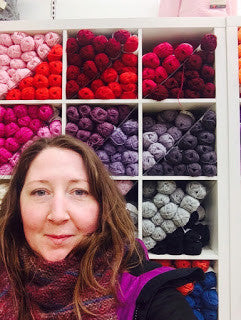

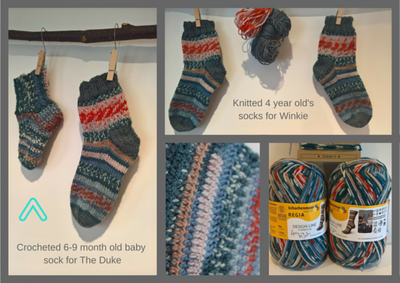
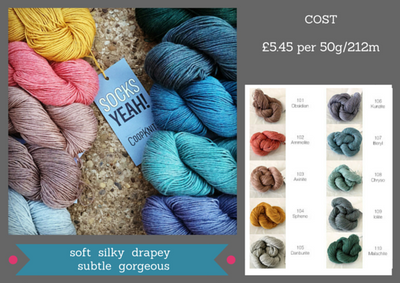
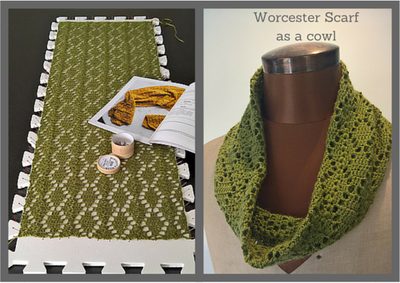
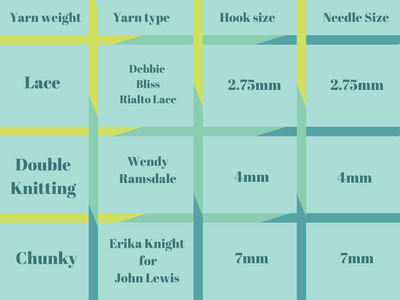
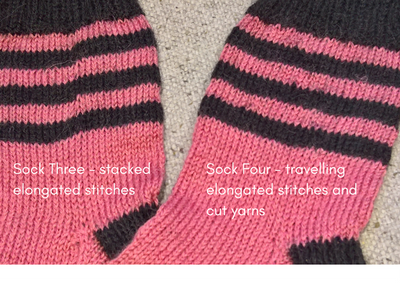
https://www.acerthailnd.com/
https://www.acerthailnd.com/huaythai
https://www.acerthailnd.com/contact
https://github.com/turingaicloud/quickstart/issues/10
https://github.com/kvspb/nginx-auth-ldap/issues/259
https://github.com/Kr1s77/FgSurfing/issues/2
https://github.com/stawel/ht301_hacklib/issues/17
https://sistacafe.com/summaries/preview/219483
https://sistacafe.com/summaries/preview/219515
https://sistacafe.com/summaries/preview/219516
https://sistacafe.com/summaries/preview/219517
https://sistacafe.com/summaries/preview/219522
https://sistacafe.com/summaries/preview/219527
https://sistacafe.com/summaries/preview/219528
https://sistacafe.com/summaries/preview/219529
https://sistacafe.com/summaries/preview/219530
https://sistacafe.com/summaries/preview/219531
https://sistacafe.com/summaries/preview/219532
https://sistacafe.com/summaries/preview/219534
https://sistacafe.com/summaries/preview/219537
https://sistacafe.com/summaries/preview/219539
https://sistacafe.com/summaries/preview/219540
https://sistacafe.com/summaries/preview/219544
https://sistacafe.com/summaries/preview/219545
https://sistacafe.com/summaries/preview/219546
https://sistacafe.com/summaries/preview/219547
https://sistacafe.com/summaries/preview/219548
https://sistacafe.com/summaries/preview/219549
https://sistacafe.com/summaries/preview/219550
https://sistacafe.com/summaries/preview/219551
https://sistacafe.com/summaries/preview/219560
https://sistacafe.com/summaries/preview/219561
https://sistacafe.com/summaries/preview/219562
https://sistacafe.com/summaries/preview/219574
https://sistacafe.com/summaries/preview/219580
https://sistacafe.com/summaries/preview/219583
https://sistacafe.com/summaries/preview/219585
https://sistacafe.com/summaries/preview/219486
https://sistacafe.com/summaries/preview/219484
https://sistacafe.com/summaries/preview/219490
https://sistacafe.com/summaries/preview/219496
https://sistacafe.com/summaries/preview/219491
https://sistacafe.com/summaries/preview/219492
https://sistacafe.com/summaries/preview/219495
https://sistacafe.com/summaries/preview/219494
https://sistacafe.com/summaries/preview/219497
https://sistacafe.com/summaries/preview/219498
https://sistacafe.com/summaries/preview/219499
https://sistacafe.com/summaries/preview/219493
https://sistacafe.com/summaries/preview/219500
https://sistacafe.com/summaries/preview/219501
https://sistacafe.com/summaries/preview/219502
https://sistacafe.com/summaries/preview/219503
https://sistacafe.com/summaries/preview/219504
https://sistacafe.com/summaries/preview/219505
https://sistacafe.com/summaries/preview/219506
https://sistacafe.com/summaries/preview/219507
https://sistacafe.com/summaries/preview/219519
https://sistacafe.com/summaries/preview/219518
https://sistacafe.com/summaries/preview/219520
https://sistacafe.com/summaries/preview/219523
https://sistacafe.com/summaries/preview/219526
https://sistacafe.com/summaries/preview/219524
https://sistacafe.com/summaries/preview/219525
https://sistacafe.com/summaries/preview/219521
https://sistacafe.com/summaries/preview/219536
https://sistacafe.com/summaries/preview/219555
https://sistacafe.com/summaries/preview/219576
https://sistacafe.com/summaries/preview/219579
https://sistacafe.com/summaries/preview/219556
https://sistacafe.com/summaries/preview/219558
https://sistacafe.com/summaries/preview/219557
https://sistacafe.com/summaries/preview/219559
https://sistacafe.com/summaries/preview/219564
https://sistacafe.com/summaries/preview/219565
https://sistacafe.com/summaries/preview/219566
https://sistacafe.com/summaries/preview/219570
https://sistacafe.com/summaries/preview/219568
https://sistacafe.com/summaries/preview/219575
https://sistacafe.com/summaries/preview/219577
https://sistacafe.com/summaries/preview/219582
https://sistacafe.com/summaries/preview/219581
https://sistacafe.com/summaries/preview/219567
https://sistacafe.com/summaries/preview/219578
https://sistacafe.com/summaries/preview/219571
https://sistacafe.com/summaries/preview/219569
https://sistacafe.com/summaries/preview/219589
https://sistacafe.com/summaries/preview/219593
https://sistacafe.com/summaries/preview/219595
https://sistacafe.com/summaries/preview/219619
https://sistacafe.com/summaries/preview/219620
https://sistacafe.com/summaries/preview/219621
https://sistacafe.com/summaries/preview/219622
https://sistacafe.com/summaries/preview/219623
https://sistacafe.com/summaries/preview/219624
https://sistacafe.com/summaries/preview/219625
https://sistacafe.com/summaries/preview/219626
https://sistacafe.com/summaries/preview/219627
https://sistacafe.com/summaries/preview/219628
https://sistacafe.com/summaries/preview/219629
https://sistacafe.com/summaries/preview/219630
https://sistacafe.com/summaries/preview/219631
https://sistacafe.com/summaries/preview/219632
https://sistacafe.com/summaries/preview/219633
https://sistacafe.com/summaries/preview/219634
https://sistacafe.com/summaries/preview/219635
https://sistacafe.com/summaries/preview/219637
https://sistacafe.com/summaries/preview/219638
https://sistacafe.com/summaries/preview/219639
https://sistacafe.com/summaries/preview/219640
https://sistacafe.com/summaries/preview/219641
https://sistacafe.com/summaries/preview/219642
https://sistacafe.com/summaries/preview/219645
https://sistacafe.com/summaries/preview/219659
https://sistacafe.com/summaries/preview/219660
https://sistacafe.com/summaries/preview/219666
https://sistacafe.com/summaries/preview/219667
https://sistacafe.com/summaries/preview/219668
https://sistacafe.com/summaries/preview/219669
https://sistacafe.com/summaries/preview/219670
https://sistacafe.com/summaries/preview/219604
https://sistacafe.com/summaries/preview/219605
https://sistacafe.com/summaries/preview/219606
https://sistacafe.com/summaries/preview/219610
https://sistacafe.com/summaries/preview/219608
https://sistacafe.com/summaries/preview/219607
https://sistacafe.com/summaries/preview/219612
https://sistacafe.com/summaries/preview/219609
https://sistacafe.com/summaries/preview/219611
https://sistacafe.com/summaries/preview/219613
https://sistacafe.com/summaries/preview/219614
https://sistacafe.com/summaries/preview/219618
https://sistacafe.com/summaries/preview/219616
https://sistacafe.com/summaries/preview/219617
https://sistacafe.com/summaries/preview/219615
https://sistacafe.com/summaries/preview/219654
https://sistacafe.com/summaries/preview/219651
https://sistacafe.com/summaries/preview/219653
https://sistacafe.com/summaries/preview/219650
https://sistacafe.com/summaries/preview/219657
https://sistacafe.com/summaries/preview/219658
https://sistacafe.com/summaries/preview/219652
https://sistacafe.com/summaries/preview/219655
https://sistacafe.com/summaries/preview/219663
https://sistacafe.com/summaries/preview/219665
https://sistacafe.com/summaries/preview/219662
https://sistacafe.com/summaries/preview/219661
https://sistacafe.com/summaries/preview/219649
https://sistacafe.com/summaries/preview/219664
https://sistacafe.com/summaries/preview/219656
https://sistacafe.com/summaries/preview/219646
https://sistacafe.com/summaries/preview/219644
https://sistacafe.com/summaries/preview/219647
https://sistacafe.com/summaries/preview/219671
https://sistacafe.com/summaries/preview/219672
https://sistacafe.com/summaries/preview/219673
https://sistacafe.com/summaries/preview/219674
https://sistacafe.com/summaries/preview/219675
https://sistacafe.com/summaries/preview/219676
https://sistacafe.com/summaries/preview/219677
https://sistacafe.com/summaries/preview/219678
https://sistacafe.com/summaries/preview/219679
https://sistacafe.com/summaries/preview/219680
https://sistacafe.com/summaries/preview/219681
https://sistacafe.com/summaries/preview/219682
https://sistacafe.com/summaries/preview/219683
https://sistacafe.com/summaries/preview/219684
https://sistacafe.com/summaries/preview/219685
https://sistacafe.com/summaries/preview/219686
https://sistacafe.com/summaries/preview/219687
https://sistacafe.com/summaries/preview/219688
https://sistacafe.com/summaries/preview/219689
https://sistacafe.com/summaries/preview/219690
https://sistacafe.com/summaries/preview/219691
https://sistacafe.com/summaries/preview/219692
https://sistacafe.com/summaries/preview/219693
https://sistacafe.com/summaries/preview/219694
https://sistacafe.com/summaries/preview/219695
https://sistacafe.com/summaries/preview/219696
https://sistacafe.com/summaries/preview/219697
https://sistacafe.com/summaries/preview/219698
https://sistacafe.com/summaries/preview/219699
https://sistacafe.com/summaries/preview/219700
https://sistacafe.com/summaries/preview/219701
https://sistacafe.com/summaries/preview/219702
https://sistacafe.com/summaries/preview/219709
https://sistacafe.com/summaries/preview/219710
https://sistacafe.com/summaries/preview/219711
https://sistacafe.com/summaries/preview/219712
https://sistacafe.com/summaries/preview/219713
https://sistacafe.com/summaries/preview/219714
https://sistacafe.com/summaries/preview/219715
https://sistacafe.com/summaries/preview/219716
https://sistacafe.com/summaries/preview/219717
https://sistacafe.com/summaries/preview/219718
https://sistacafe.com/summaries/preview/219719
https://sistacafe.com/summaries/preview/219720
https://sistacafe.com/summaries/preview/219721
https://sistacafe.com/summaries/preview/219722
https://sistacafe.com/summaries/preview/219723
https://sistacafe.com/summaries/preview/219724
https://sistacafe.com/summaries/preview/219725
https://sistacafe.com/summaries/preview/219726
https://sistacafe.com/summaries/preview/219727
https://sistacafe.com/summaries/preview/219729
https://sistacafe.com/summaries/preview/219730
https://sistacafe.com/summaries/preview/219731
https://sistacafe.com/summaries/preview/219740
https://sistacafe.com/summaries/preview/219741
https://sistacafe.com/summaries/preview/219742
https://sistacafe.com/summaries/preview/219743
https://sistacafe.com/summaries/preview/219750
https://sistacafe.com/summaries/preview/219751
https://sistacafe.com/summaries/preview/219752
https://sistacafe.com/summaries/preview/219753
https://sistacafe.com/summaries/preview/219703
https://sistacafe.com/summaries/preview/219705
https://sistacafe.com/summaries/preview/219707
https://sistacafe.com/summaries/preview/219708
https://sistacafe.com/summaries/preview/219706
https://sistacafe.com/summaries/preview/219732
https://sistacafe.com/summaries/preview/219704
https://sistacafe.com/summaries/preview/219733
https://sistacafe.com/summaries/preview/219734
https://sistacafe.com/summaries/preview/219735
https://sistacafe.com/summaries/preview/219737
https://sistacafe.com/summaries/preview/219739
https://sistacafe.com/summaries/preview/219738
https://sistacafe.com/summaries/preview/219736
https://sistacafe.com/summaries/preview/219744
https://sistacafe.com/summaries/preview/219745
https://sistacafe.com/summaries/preview/219748
https://sistacafe.com/summaries/preview/219746
https://sistacafe.com/summaries/preview/219749
https://sistacafe.com/summaries/preview/219747
https://sistacafe.com/summaries/preview/219761
https://sistacafe.com/summaries/preview/219763
https://sistacafe.com/summaries/preview/219762
https://sistacafe.com/summaries/preview/219760
https://sistacafe.com/summaries/preview/219756
https://sistacafe.com/summaries/preview/219755
https://sistacafe.com/summaries/preview/219754
https://sistacafe.com/summaries/preview/219758
https://sistacafe.com/summaries/preview/219757
https://sistacafe.com/summaries/preview/219759
https://sistacafe.com/summaries/preview/219765
https://sistacafe.com/summaries/preview/219766
https://sistacafe.com/summaries/preview/219767
https://sistacafe.com/summaries/preview/219768
https://sistacafe.com/summaries/preview/219769
https://sistacafe.com/summaries/preview/219770
https://sistacafe.com/summaries/preview/219771
https://sistacafe.com/summaries/preview/219772
https://sistacafe.com/summaries/preview/219773
https://sistacafe.com/summaries/preview/219774
https://sistacafe.com/summaries/preview/219775
https://sistacafe.com/summaries/preview/219776
https://sistacafe.com/summaries/preview/219777
https://sistacafe.com/summaries/preview/219778
https://sistacafe.com/summaries/preview/219779
https://sistacafe.com/summaries/preview/219780
https://sistacafe.com/summaries/preview/219781
https://sistacafe.com/summaries/preview/219782
https://sistacafe.com/summaries/preview/219783
https://sistacafe.com/summaries/preview/219784
https://sistacafe.com/summaries/preview/219785
https://sistacafe.com/summaries/preview/219786
https://sistacafe.com/summaries/preview/219787
https://sistacafe.com/summaries/preview/219788
https://sistacafe.com/summaries/preview/219789
https://sistacafe.com/summaries/preview/219790
https://sistacafe.com/summaries/preview/219791
https://sistacafe.com/summaries/preview/219792
https://sistacafe.com/summaries/preview/219793
https://sistacafe.com/summaries/preview/219794
https://sistacafe.com/summaries/preview/219795
https://sistacafe.com/summaries/preview/219796
https://sistacafe.com/summaries/preview/219797
https://sistacafe.com/summaries/preview/219806
https://sistacafe.com/summaries/preview/219807
https://sistacafe.com/summaries/preview/219808
https://sistacafe.com/summaries/preview/219809
https://sistacafe.com/summaries/preview/219810
https://sistacafe.com/summaries/preview/219811
https://sistacafe.com/summaries/preview/219812
https://sistacafe.com/summaries/preview/219813
https://sistacafe.com/summaries/preview/219814
https://sistacafe.com/summaries/preview/219815
https://sistacafe.com/summaries/preview/219816
https://sistacafe.com/summaries/preview/219817
https://sistacafe.com/summaries/preview/219818
https://sistacafe.com/summaries/preview/219819
https://sistacafe.com/summaries/preview/219820
https://sistacafe.com/summaries/preview/219822
https://sistacafe.com/summaries/preview/219823
https://sistacafe.com/summaries/preview/219824
https://sistacafe.com/summaries/preview/219825
https://sistacafe.com/summaries/preview/219826
https://sistacafe.com/summaries/preview/219878
https://sistacafe.com/summaries/preview/219880
https://sistacafe.com/summaries/preview/219881
https://sistacafe.com/summaries/preview/219885
https://sistacafe.com/summaries/preview/219886
https://sistacafe.com/summaries/preview/219890
https://sistacafe.com/summaries/preview/219891
https://sistacafe.com/summaries/preview/219892
https://sistacafe.com/summaries/preview/219893
https://sistacafe.com/summaries/preview/219894
https://sistacafe.com/summaries/preview/219803
https://sistacafe.com/summaries/preview/219800
https://sistacafe.com/summaries/preview/219801
https://sistacafe.com/summaries/preview/219802
https://sistacafe.com/summaries/preview/219828
https://sistacafe.com/summaries/preview/219827
https://sistacafe.com/summaries/preview/219805
https://sistacafe.com/summaries/preview/219834
https://sistacafe.com/summaries/preview/219833
https://sistacafe.com/summaries/preview/219829
https://sistacafe.com/summaries/preview/219804
https://sistacafe.com/summaries/preview/219831
https://sistacafe.com/summaries/preview/219839
https://sistacafe.com/summaries/preview/219842
https://sistacafe.com/summaries/preview/219836
https://sistacafe.com/summaries/preview/219832
https://sistacafe.com/summaries/preview/219837
https://sistacafe.com/summaries/preview/219838
https://sistacafe.com/summaries/preview/219841
https://sistacafe.com/summaries/preview/219835
https://sistacafe.com/summaries/preview/219843
https://sistacafe.com/summaries/preview/219845
https://sistacafe.com/summaries/preview/219844
https://sistacafe.com/summaries/preview/219847
https://sistacafe.com/summaries/preview/219846
https://sistacafe.com/summaries/preview/219848
https://sistacafe.com/summaries/preview/219830
https://sistacafe.com/summaries/preview/219849
https://sistacafe.com/summaries/preview/219850
https://sistacafe.com/summaries/preview/219851
https://sistacafe.com/summaries/preview/219852
https://sistacafe.com/summaries/preview/219853
https://sistacafe.com/summaries/preview/219854
https://sistacafe.com/summaries/preview/219855
https://sistacafe.com/summaries/preview/219856
https://sistacafe.com/summaries/preview/219857
https://sistacafe.com/summaries/preview/219858
https://sistacafe.com/summaries/preview/219859
https://sistacafe.com/summaries/preview/219860
https://sistacafe.com/summaries/preview/219861
https://sistacafe.com/summaries/preview/219862
https://sistacafe.com/summaries/preview/219863
https://sistacafe.com/summaries/preview/219864
https://sistacafe.com/summaries/preview/219865
https://sistacafe.com/summaries/preview/219866
https://sistacafe.com/summaries/preview/219867
https://sistacafe.com/summaries/preview/219868
https://sistacafe.com/summaries/preview/219869
https://sistacafe.com/summaries/preview/219870
https://sistacafe.com/summaries/preview/219871
https://sistacafe.com/summaries/preview/219872
https://sistacafe.com/summaries/preview/219873
https://sistacafe.com/summaries/preview/219874
https://sistacafe.com/summaries/preview/219875
https://sistacafe.com/summaries/preview/219876
https://sistacafe.com/summaries/preview/219877
https://sistacafe.com/summaries/preview/219879
https://sistacafe.com/summaries/preview/219882
https://sistacafe.com/summaries/preview/219883
https://sistacafe.com/summaries/preview/219884
https://sistacafe.com/summaries/preview/219887
https://sistacafe.com/summaries/preview/219888
https://sistacafe.com/summaries/preview/219889
https://sistacafe.com/summaries/preview/219896
https://sistacafe.com/summaries/preview/219897
https://sistacafe.com/summaries/preview/219898
https://sistacafe.com/summaries/preview/219899
https://sistacafe.com/summaries/preview/219900
https://sistacafe.com/summaries/preview/219901
https://sistacafe.com/summaries/preview/219902
https://sistacafe.com/summaries/preview/219903
https://sistacafe.com/summaries/preview/219904
https://sistacafe.com/summaries/preview/219905
https://sistacafe.com/summaries/preview/219906
https://sistacafe.com/summaries/preview/219907
https://sistacafe.com/summaries/preview/219908
https://sistacafe.com/summaries/preview/219909
https://sistacafe.com/summaries/preview/219910
https://sistacafe.com/summaries/preview/219911
https://sistacafe.com/summaries/preview/219912
https://sistacafe.com/summaries/preview/219913
https://sistacafe.com/summaries/preview/219914
https://sistacafe.com/summaries/preview/219915
https://sistacafe.com/summaries/preview/219916
https://sistacafe.com/summaries/preview/219917
https://sistacafe.com/summaries/preview/219918
https://sistacafe.com/summaries/preview/219919
https://sistacafe.com/summaries/preview/219920
https://sistacafe.com/summaries/preview/219921
https://sistacafe.com/summaries/preview/219922
https://sistacafe.com/summaries/preview/219923
https://sistacafe.com/summaries/preview/219924
https://sistacafe.com/summaries/preview/219925
https://sistacafe.com/summaries/preview/219926
https://sistacafe.com/summaries/preview/219927
https://sistacafe.com/summaries/preview/219934
https://sistacafe.com/summaries/preview/219928
https://sistacafe.com/summaries/preview/219930
https://sistacafe.com/summaries/preview/219932
https://sistacafe.com/summaries/preview/219929
https://sistacafe.com/summaries/preview/219941
https://sistacafe.com/summaries/preview/219938
https://sistacafe.com/summaries/preview/219940
https://sistacafe.com/summaries/preview/219950
https://sistacafe.com/summaries/preview/219945
https://sistacafe.com/summaries/preview/219942
https://sistacafe.com/summaries/preview/219937
https://sistacafe.com/summaries/preview/219935
https://sistacafe.com/summaries/preview/219931
https://sistacafe.com/summaries/preview/219936
https://sistacafe.com/summaries/preview/219933
https://sistacafe.com/summaries/preview/219948
https://sistacafe.com/summaries/preview/219947
https://sistacafe.com/summaries/preview/219949
https://sistacafe.com/summaries/preview/219939
https://sistacafe.com/summaries/preview/219944
https://sistacafe.com/summaries/preview/219946
https://sistacafe.com/summaries/preview/219943
https://sistacafe.com/summaries/preview/219955
https://sistacafe.com/summaries/preview/219954
https://sistacafe.com/summaries/preview/219953
https://sistacafe.com/summaries/preview/219952
https://sistacafe.com/summaries/preview/219993
https://sistacafe.com/summaries/preview/219958
https://sistacafe.com/summaries/preview/219960
https://sistacafe.com/summaries/preview/219961
https://sistacafe.com/summaries/preview/219962
https://sistacafe.com/summaries/preview/219963
https://sistacafe.com/summaries/preview/219965
https://sistacafe.com/summaries/preview/219968
https://sistacafe.com/summaries/preview/219969
https://sistacafe.com/summaries/preview/219970
https://sistacafe.com/summaries/preview/219971
https://sistacafe.com/summaries/preview/219972
https://sistacafe.com/summaries/preview/219973
https://sistacafe.com/summaries/preview/219974
https://sistacafe.com/summaries/preview/219975
https://sistacafe.com/summaries/preview/219976
https://sistacafe.com/summaries/preview/219977
https://sistacafe.com/summaries/preview/219978
https://sistacafe.com/summaries/preview/219979
https://sistacafe.com/summaries/preview/219980
https://sistacafe.com/summaries/preview/219981
https://sistacafe.com/summaries/preview/219982
https://sistacafe.com/summaries/preview/219983
https://sistacafe.com/summaries/preview/219985
https://sistacafe.com/summaries/preview/219986
https://sistacafe.com/summaries/preview/219987
https://sistacafe.com/summaries/preview/219988
https://sistacafe.com/summaries/preview/219989
https://sistacafe.com/summaries/preview/219990
https://sistacafe.com/summaries/preview/219991
https://sistacafe.com/summaries/preview/219992
https://sistacafe.com/summaries/preview/220000
https://sistacafe.com/summaries/preview/220001
https://sistacafe.com/summaries/preview/220002
https://sistacafe.com/summaries/preview/220003
https://sistacafe.com/summaries/preview/220004
https://sistacafe.com/summaries/preview/220005
https://sistacafe.com/summaries/preview/220006
https://sistacafe.com/summaries/preview/220007
https://sistacafe.com/summaries/preview/220008
https://sistacafe.com/summaries/preview/220009
https://sistacafe.com/summaries/preview/220010
https://sistacafe.com/summaries/preview/220011
https://sistacafe.com/summaries/preview/220012
https://sistacafe.com/summaries/preview/220013
https://sistacafe.com/summaries/preview/220014
https://sistacafe.com/summaries/preview/220015
https://sistacafe.com/summaries/preview/220016
https://sistacafe.com/summaries/preview/220017
https://sistacafe.com/summaries/preview/220018
https://sistacafe.com/summaries/preview/220019
https://sistacafe.com/summaries/preview/220080
https://sistacafe.com/summaries/preview/220081
https://sistacafe.com/summaries/preview/220082
https://sistacafe.com/summaries/preview/220083
https://sistacafe.com/summaries/preview/220084
https://sistacafe.com/summaries/preview/220085
https://sistacafe.com/summaries/preview/220086
https://sistacafe.com/summaries/preview/220087
https://sistacafe.com/summaries/preview/220088
https://sistacafe.com/summaries/preview/220089
https://sistacafe.com/summaries/preview/219994
https://sistacafe.com/summaries/preview/219995
https://sistacafe.com/summaries/preview/219997
https://sistacafe.com/summaries/preview/219996
https://sistacafe.com/summaries/preview/220022
https://sistacafe.com/summaries/preview/219998
https://sistacafe.com/summaries/preview/220021
https://sistacafe.com/summaries/preview/220020
https://sistacafe.com/summaries/preview/220023
https://sistacafe.com/summaries/preview/220024
https://sistacafe.com/summaries/preview/220025
https://sistacafe.com/summaries/preview/220026
https://sistacafe.com/summaries/preview/220027
https://sistacafe.com/summaries/preview/220028
https://sistacafe.com/summaries/preview/220029
https://sistacafe.com/summaries/preview/220030
https://sistacafe.com/summaries/preview/220031
https://sistacafe.com/summaries/preview/220032
https://sistacafe.com/summaries/preview/220033
https://sistacafe.com/summaries/preview/220034
https://sistacafe.com/summaries/preview/220035
https://sistacafe.com/summaries/preview/220036
https://sistacafe.com/summaries/preview/220037
https://sistacafe.com/summaries/preview/220038
https://sistacafe.com/summaries/preview/220039
https://sistacafe.com/summaries/preview/220040
https://sistacafe.com/summaries/preview/220041
https://sistacafe.com/summaries/preview/220042
https://sistacafe.com/summaries/preview/220043
https://sistacafe.com/summaries/preview/220044
https://sistacafe.com/summaries/preview/220048
https://sistacafe.com/summaries/preview/220051
https://sistacafe.com/summaries/preview/220049
https://sistacafe.com/summaries/preview/220052
https://sistacafe.com/summaries/preview/220050
https://sistacafe.com/summaries/preview/220054
https://sistacafe.com/summaries/preview/220055
https://sistacafe.com/summaries/preview/220060
https://sistacafe.com/summaries/preview/220056
https://sistacafe.com/summaries/preview/220065
https://sistacafe.com/summaries/preview/220057
https://sistacafe.com/summaries/preview/220078
https://sistacafe.com/summaries/preview/220066
https://sistacafe.com/summaries/preview/220053
https://sistacafe.com/summaries/preview/220068
https://sistacafe.com/summaries/preview/220059
https://sistacafe.com/summaries/preview/220069
https://sistacafe.com/summaries/preview/220077
https://sistacafe.com/summaries/preview/220062
https://sistacafe.com/summaries/preview/220071
https://sistacafe.com/summaries/preview/220063
https://sistacafe.com/summaries/preview/220072
https://sistacafe.com/summaries/preview/220064
https://sistacafe.com/summaries/preview/220076
https://sistacafe.com/summaries/preview/220073
https://sistacafe.com/summaries/preview/220067
https://sistacafe.com/summaries/preview/220074
https://sistacafe.com/summaries/preview/220070
https://sistacafe.com/summaries/preview/220075
https://sistacafe.com/summaries/preview/220079
https://sistacafe.com/summaries/preview/220102
https://sistacafe.com/summaries/preview/220106
https://sistacafe.com/summaries/preview/220107
https://sistacafe.com/summaries/preview/220108
https://sistacafe.com/summaries/preview/220109
https://sistacafe.com/summaries/preview/220110
https://sistacafe.com/summaries/preview/220111
https://sistacafe.com/summaries/preview/220112
https://sistacafe.com/summaries/preview/220113
https://sistacafe.com/summaries/preview/220114
https://sistacafe.com/summaries/preview/220092
https://sistacafe.com/summaries/preview/220094
https://sistacafe.com/summaries/preview/220097
https://sistacafe.com/summaries/preview/220098
https://sistacafe.com/summaries/preview/220099
https://sistacafe.com/summaries/preview/220100
https://sistacafe.com/summaries/preview/220101
https://sistacafe.com/summaries/preview/220096
https://sistacafe.com/summaries/preview/220103
https://sistacafe.com/summaries/preview/220104
https://sistacafe.com/summaries/preview/220048
https://sistacafe.com/summaries/preview/220050
https://sistacafe.com/summaries/preview/220051
https://sistacafe.com/summaries/preview/219882
https://sistacafe.com/summaries/preview/219852
https://sistacafe.com/summaries/preview/219853
https://sistacafe.com/summaries/preview/219856
https://www.readawrite.com/a/98daef69f8e29be4e41605c2c9a62c2b
https://www.readawrite.com/a/8efddb48243391e719153a8c549d1f56
https://www.readawrite.com/a/6a1ecf276db5ae5ce023a1f46061d209
https://www.readawrite.com/a/f3ebcc921b2d723e76076155dee60c11
https://www.readawrite.com/a/a2ab0a5ec243058c7001190af93559d2
https://www.readawrite.com/a/4159a0f386e527b85670136912a8104f
https://www.readawrite.com/a/30972df3c8bb679f2dcc74f43445195f
https://www.readawrite.com/a/f290608acdddf792e4c29385db6b9154
https://www.readawrite.com/a/f1e3410841babfa25c3d5fe720283195
https://www.readawrite.com/a/d0497f18d2b558c6fc4541b15e81ee4a
https://www.readawrite.com/a/c8a33281a5a1ac6726d6a390d7ab5327
https://www.readawrite.com/a/57509a190a774f17b3e2d05f4e57abed
https://www.readawrite.com/a/2cfb4b82853e0ee6f2036b1c16eac0e1
https://www.readawrite.com/a/f968817c5963f1176389978fe301b027
https://www.readawrite.com/a/a55ef62192c50800b209a29b7cfd8119
https://www.readawrite.com/a/d0497f18d2b558c6fc4541b15e81ee4a
https://www.readawrite.com/a/c8a33281a5a1ac6726d6a390d7ab5327
https://www.readawrite.com/a/57509a190a774f17b3e2d05f4e57abed
https://www.readawrite.com/a/2cfb4b82853e0ee6f2036b1c16eac0e1
https://www.readawrite.com/a/f968817c5963f1176389978fe301b027
https://www.readawrite.com/a/a55ef62192c50800b209a29b7cfd8119
https://www.readawrite.com/a/30972df3c8bb679f2dcc74f43445195f
https://www.readawrite.com/a/f290608acdddf792e4c29385db6b9154
https://www.readawrite.com/a/f1e3410841babfa25c3d5fe720283195
https://www.readawrite.com/a/98daef69f8e29be4e41605c2c9a62c2b
https://www.readawrite.com/a/8efddb48243391e719153a8c549d1f56
https://www.readawrite.com/a/6a1ecf276db5ae5ce023a1f46061d209
https://www.readawrite.com/a/f3ebcc921b2d723e76076155dee60c11
https://www.readawrite.com/a/a2ab0a5ec243058c7001190af93559d2
https://www.readawrite.com/a/4159a0f386e527b85670136912a8104f
https://www.readawrite.com/a/59f023855f12efceba8617bb9eabd4a9
https://www.readawrite.com/a/983769f53fbe82f2d456823f5ef0b816
https://www.readawrite.com/a/4bde3f64395c50c712af6f06ca4eff36
https://www.readawrite.com/a/ab3d0efe648b908e632da3740dea3581
https://www.readawrite.com/a/41367b34654f6f8cd51db158edf6fbc5
https://www.readawrite.com/a/3bba04c5de0c3603bb23699473070123
https://www.readawrite.com/a/cf5cd4f9f04a10b176109da4bc60b191
https://laylo.com/laylo-mcrsfpl/eXodIbh8
https://laylo.com/laylo-aveacdq/V44hucnu
https://laylo.com/laylo-b8gyoxb/f3mF6t3n
https://laylo.com/laylo-hqaljwf/IaaGjl32
https://laylo.com/laylo-agh9th0/EaQPZzAl
https://laylo.com/laylo-bohg6js/IUDbzDoM
https://laylo.com/laylo-vkoobrk/CKmAReJk
https://laylo.com/laylo-5l2wkrm/sJsrZIIe
https://laylo.com/laylo-pdtwoyi/gCnYnHye
https://laylo.com/laylo-wj2httn/fP11GFdH
https://laylo.com/laylo-dd2jlvi/pWt2oFRh
https://laylo.com/laylo-zrzmu5r/9KfK1rqb
https://laylo.com/laylo-xlhpojy/WcqKrrEk
https://laylo.com/laylo-mjua1ua/gQSmja9Y
https://laylo.com/laylo-kxdaiye/nG0BTww3
https://laylo.com/laylo-5pewzmo/fNvSVtns
https://laylo.com/laylo-fxja5b9/3GYJJmHk
https://laylo.com/laylo-gsn1jpy/3zWiUqay
https://laylo.com/laylo-txzsajm/c8aw7FEI
https://laylo.com/laylo-rwixilg/m97cocXu
https://laylo.com/laylo-s1dvbjy/z5kK1N6N
https://laylo.com/laylo-cbitamk/YfyTa4k0
https://laylo.com/laylo-ztzn6ae/Uf9EFIwT
https://laylo.com/laylo-kvbmwxa/xmS7DGkf
https://laylo.com/laylo-axxnwor/3zqwpCDC
https://laylo.com/laylo-qkkfeo1/u8jC8kgX
https://laylo.com/laylo-vdt3i2e/QDM87tQc
https://laylo.com/laylo-u3aotk5/r8Dc8C9b
https://laylo.com/laylo-n3rrfwp/8keTr148
https://laylo.com/laylo-vnxnv9k/F9XZPGCD
https://laylo.com/laylo-droxuqb/v62KHKpa
https://laylo.com/laylo-j7efaw6/rCZ2kUjZ
https://laylo.com/laylo-xmis9bn/vZ2qtsE0
https://laylo.com/laylo-pj84sqj/Hrnpo3Ni
https://laylo.com/laylo-pyynebq/lQXaofD1
https://laylo.com/laylo-allzmkv/kL9Vh1cc
https://laylo.com/laylo-allzmkv/kYsyzJdb
https://laylo.com/laylo-allzmkv/UUz4VXFO
https://laylo.com/laylo-allzmkv/Q7XRHibn
https://laylo.com/laylo-9pt7n87/eM91EHJu
https://laylo.com/laylo-9pt7n87/8S7cr4mX
https://laylo.com/laylo-9pt7n87/C5LCSTp4
https://laylo.com/laylo-9pt7n87/DdktasXz
https://laylo.com/laylo-lzczuj3/CKpN5lkB
https://laylo.com/laylo-lzczuj3/mRR7SM0L
https://laylo.com/laylo-lzczuj3/RhbOaCDm
https://laylo.com/laylo-9pt7n87/c1EfdtIK
https://laylo.com/laylo-9pt7n87/hMOWqGEf
https://laylo.com/laylo-9pt7n87/WCTHq0h4
https://laylo.com/laylo-xu4xfge/lOdBq7JL
https://laylo.com/laylo-xu4xfge/bvouDNhz
https://laylo.com/laylo-xu4xfge/Mw1I58vU
https://laylo.com/laylo-ven748x/pmz94337
https://laylo.com/laylo-ven748x/bzt2k1cU
https://laylo.com/laylo-ven748x/VbyS2Mne
https://laylo.com/laylo-ven748x/3BMqvsDD
https://laylo.com/laylo-zpthte9/mHevk9bX
https://laylo.com/laylo-zpthte9/tZcqgiw8
https://laylo.com/laylo-zpthte9/YyREQgTt
https://laylo.com/laylo-zpthte9/RWlYcrWu
https://laylo.com/laylo-iun1wgq/RBqMZ87M
https://laylo.com/laylo-iun1wgq/7oQEoHQt
https://laylo.com/laylo-iun1wgq/I99YCQ79
https://laylo.com/laylo-iun1wgq/iu344OMm
https://laylo.com/laylo-iun1wgq/WKLeqZ6n
https://laylo.com/laylo-pzuvkep/hHAoyjqb
https://laylo.com/laylo-pzuvkep/chAzia35
https://laylo.com/laylo-pzuvkep/ouyLNJsN
https://laylo.com/laylo-pzuvkep/zgJPxJbd
https://laylo.com/laylo-pzuvkep/nz5BWypb
https://laylo.com/laylo-ec9ihej/oMhYPnNT
https://laylo.com/laylo-ec9ihej/pHXeElFh
https://laylo.com/laylo-ec9ihej/El5edAjG
https://laylo.com/laylo-ec9ihej/rOZOJIVZ
https://laylo.com/laylo-ec9ihej/o0jPjCbg
https://laylo.com/laylo-azj1i8q/OMnl9aI7
https://laylo.com/laylo-azj1i8q/cQtdn7Rm
https://laylo.com/laylo-azj1i8q/BkkokSuy
https://laylo.com/laylo-azj1i8q/vSrckRg8
https://laylo.com/laylo-azj1i8q/RtLSPyS6
https://laylo.com/laylo-1lepwzt/t0Yg5tuP
https://laylo.com/laylo-ohiflqv/ITwGJPfq
https://laylo.com/laylo-hrnjg1m/vlGofcxL
https://laylo.com/laylo-qpzuuvz/ogbfs7NR
https://laylo.com/laylo-pmuwhts/VFQrBBGG
https://laylo.com/laylo-rmajsvz/nBxTrZYV
https://laylo.com/laylo-mr3ggdw/ACDshRfW
https://laylo.com/laylo-em8zo21/5Cms9YTw
https://laylo.com/laylo-dzgoqnr/J4jCCTHs
https://laylo.com/laylo-r6zrcwm/xLv3Ds5f
https://laylo.com/laylo-ekl9lwn/1BAdzkx8
https://laylo.com/laylo-hdvfhx6/7TA56Otx
https://laylo.com/laylo-qemtvpz/hCpTQJEC
https://laylo.com/laylo-ugglfiu/arO770EO
https://laylo.com/laylo-yutxaxq/f0NnOxMX
https://laylo.com/laylo-kngugmd/wMFDOxcc
https://laylo.com/laylo-yplgt5j/GBFCFTt0
https://laylo.com/laylo-irqnbfc/qkbjKriE
https://laylo.com/laylo-tzn2fxa/gchOYQ0E
https://laylo.com/laylo-lqwtzsu/MLBjfTtX
https://laylo.com/laylo-ud629kw/mP8GdUG5
https://laylo.com/laylo-rc7mk4o/jVDeesOy
https://laylo.com/laylo-vpybkax/m80JCGj3
https://laylo.com/laylo-h0xppme/tbGNzVZs
https://laylo.com/laylo-yxuw4x3/750E9loL
https://laylo.com/laylo-vlu6jce/CX5lC0m3
https://laylo.com/laylo-tjyufrn/i0ZhVhnM
https://laylo.com/laylo-5o0o7lc/QEeEgJZX
https://laylo.com/laylo-dfgbo9f/CPCuGqE8
https://laylo.com/laylo-69nrgtz/AxyQmWOo
https://laylo.com/laylo-dk1tycl/qomkYxnz
https://laylo.com/laylo-fshhjvt/B7bCHKpU
https://laylo.com/laylo-4lccwsp/agLo1oHq
https://laylo.com/laylo-dbzcwwx/fX753b9p
https://laylo.com/laylo-l4ukbky/rwUdsopR
https://laylo.com/laylo-4wqdazx/mIajbTSV
https://laylo.com/laylo-b42db9i/Mr82W2be
https://laylo.com/laylo-si7crb3/6f86Jqqh
https://laylo.com/laylo-fshhjvt/HhctXMxP
https://laylo.com/laylo-fnw7mlo/wFbWJpY7
https://laylo.com/laylo-f9hvl17/CgeLtE68
https://laylo.com/laylo-apu79ti/WCz46SJN
https://laylo.com/laylo-5xfolxo/XDyAnHiJ
https://laylo.com/laylo-mkp8k1a/rMbx3xoN
https://laylo.com/laylo-0hdch72/1kH5pwkm
https://laylo.com/laylo-uljqzmu/NYl5jfGj
https://laylo.com/laylo-3a172v2/pqctWS66
https://laylo.com/laylo-72q9osc/5JbHIqm4
https://laylo.com/laylo-rf5wunr/E1jx9hai
https://laylo.com/laylo-54gt5hu/uoGLfZs3
https://laylo.com/laylo-49ylq77/trQIcrJM
https://laylo.com/laylo-dlsog6f/r8bK0yw6
https://laylo.com/laylo-8jsfhk9/UAznnTmY
https://laylo.com/laylo-99zprcv/RxFpIHeh
https://laylo.com/laylo-rzo6bmp/SCkxbN9G
https://laylo.com/laylo-l4axgvy/VBsKMC4w
https://laylo.com/laylo-luy5fs6/Qt8fM4UW
https://laylo.com/laylo-xqt9xvj/otWs8ekw
https://laylo.com/laylo-btwb0sh/G4TetqLM
https://laylo.com/laylo-49wtrxb/obqO5oCe
https://laylo.com/laylo-oaok3s4/eSCOVwEC
https://laylo.com/laylo-bwakvtt/XupcEQ87
https://laylo.com/laylo-odgslrn/tskRqt9T
https://laylo.com/laylo-qsymosj/SLYA1sqQ
https://laylo.com/laylo-vbybkty/zw0A72wf
https://laylo.com/laylo-lt0iptd/EzYObala
https://laylo.com/laylo-wrkbq6k/XZdnra27
https://laylo.com/laylo-wtjs7wl/SDSsqwvc
https://laylo.com/laylo-x6l4vhb/IPTWJAyz
https://laylo.com/laylo-wwzxyp7/oAnHwTqd
https://laylo.com/laylo-6kiw78x/nGbRVXCS
https://laylo.com/laylo-9hsmqxh/Z1THZe9n
https://laylo.com/laylo-huhftfs/0hxboqph
https://laylo.com/laylo-1sgy04k/Tg08mA5v
https://laylo.com/laylo-lvr8rri/Jduwn0MY
https://laylo.com/laylo-gtsn2cf/bMxH1lZd
https://laylo.com/laylo-764wbw3/ISv3MgDk
https://laylo.com/laylo-8twd6t1/LYtqU79t
https://laylo.com/laylo-2gfyz3o/dAUib2mX
https://laylo.com/laylo-jbzok3a/do1riwgP
https://laylo.com/laylo-bmidket/rhY0PwCO
https://laylo.com/laylo-gadt9a9/t5NPHDwf
https://laylo.com/laylo-7axyyit/nlet0SpY
https://laylo.com/laylo-i2nqvwn/HVwIcDZt
https://laylo.com/laylo-ttaymqy/faUNsjfs
https://laylo.com/laylo-wah1brq/MTa2JZ1M
https://laylo.com/laylo-5wl0czv/oESq2xnu
https://laylo.com/laylo-den5ddc/JpoVXbs7
https://laylo.com/laylo-h9ogogp/PqNjMQLw
https://laylo.com/laylo-d6gn5ip/iHAP0MET
https://laylo.com/laylo-wcgrlxq/LnaJTv08
https://laylo.com/laylo-ywzprsw/DV1b4w5U
https://laylo.com/laylo-hjfzer3/eXeie4Ax
https://laylo.com/laylo-ljtfixo/oEdiCaoK
https://laylo.com/laylo-nauvkf6/B70imnMf
https://laylo.com/laylo-piueopc/3qLOcxVe
https://laylo.com/laylo-3aldotp/wm9XrpBG
https://laylo.com/laylo-vwz5olb/lf2B8Rk4
https://laylo.com/laylo-tn7jws5/3oHcaYr1
https://laylo.com/laylo-cpnscgn/Vy1HS9V9
https://laylo.com/laylo-hfyeaqj/peTtcdJ7
https://laylo.com/laylo-lvlnjjl/74Quc5p5
https://laylo.com/laylo-6cxttt4/gd8hLarr
https://laylo.com/laylo-u7rq55r/YjAS7nIV
https://laylo.com/laylo-vbayno4/rrYXSR0p
https://laylo.com/laylo-gnsyrrf/Q2z2LnVw
https://laylo.com/laylo-auswqju/Dovp7oUL
https://laylo.com/laylo-i92sed8/7VpEW2bf
https://laylo.com/laylo-4fjdilf/UUBUEKLs
https://laylo.com/laylo-s1np2kw/NIBeVnXQ
https://laylo.com/laylo-cpaxmbb/aJHdrVhD
https://laylo.com/laylo-flrjx7n/iJTqsZDM
https://laylo.com/laylo-wnpy8ee/BNM7MtxQ
https://laylo.com/laylo-vfzxyn5/0F4Knfcv
https://laylo.com/laylo-yf9t7xl/SJ7HYMLG
https://laylo.com/laylo-df4oskf/MJriUV7X
https://laylo.com/laylo-gjdrpgr/yfCSSweu
https://laylo.com/laylo-azkucdd/1vM34QRg
https://laylo.com/laylo-mazphwg/QnTsdpNc
https://laylo.com/laylo-2tybazd/q01ulqt6
https://laylo.com/laylo-7itph7r/nhmpzZap
https://laylo.com/laylo-7itph7r/LsWytkrE
https://laylo.com/laylo-7itph7r/OggJX8Bu
https://laylo.com/laylo-7itph7r/O1XZQbiE
https://laylo.com/laylo-7itph7r/b6eDHzUb
https://laylo.com/laylo-spbyhth/FW42Uc4y
https://laylo.com/laylo-spbyhth/JbDUhovM
https://laylo.com/laylo-spbyhth/JtrGK1en
https://laylo.com/laylo-spbyhth/yOsJpDrE
https://laylo.com/laylo-spbyhth/aYo0ERwf
https://laylo.com/laylo-9ntelby/5H1H1oFG
https://laylo.com/laylo-9ntelby/CoJ1q0uq
https://laylo.com/laylo-9ntelby/ViKtXNy3
https://laylo.com/laylo-9ntelby/g8YZEuDH
https://laylo.com/laylo-9ntelby/OfGCarPm
https://laylo.com/laylo-i9ij2oi/TcaQcTKP
https://laylo.com/laylo-i9ij2oi/AwX2ylD8
https://laylo.com/laylo-i9ij2oi/XIFrYBbD
https://laylo.com/laylo-i9ij2oi/AhG3uou4
https://laylo.com/laylo-i9ij2oi/VnkU6dWH
https://laylo.com/laylo-ufzhzcv/6sqt6kIA
https://laylo.com/laylo-ufzhzcv/QWy1bSSd
https://laylo.com/laylo-ufzhzcv/UTD5e43e
https://laylo.com/laylo-ufzhzcv/rcn6FOEo
https://laylo.com/laylo-ufzhzcv/laaYHeMt
https://laylo.com/laylo-mo0ggiy/NPTTnRu4
https://laylo.com/laylo-mo0ggiy/1JmiLkWw
https://laylo.com/laylo-0zetz06/RyuM9r3f
https://laylo.com/laylo-0zetz06/Mk0YBWRB
https://laylo.com/laylo-0zetz06/nHkIyXet
https://laylo.com/laylo-0zetz06/tQS9hoT1
https://laylo.com/laylo-0zetz06/zs3PSDiM
https://laylo.com/laylo-mo0ggiy/IVvPlEVQ
https://laylo.com/laylo-mo0ggiy/ldMPkz5J
https://laylo.com/laylo-mo0ggiy/Ghizfx7A
https://laylo.com/laylo-omps4cy/8yWhSw2h
https://laylo.com/laylo-omps4cy/MoRRQh37
https://laylo.com/laylo-omps4cy/Xe7xX7yT
https://laylo.com/laylo-omps4cy/xgZrUzbu
https://laylo.com/laylo-omps4cy/gwUWZEzV
https://laylo.com/laylo-qxbldrl/zEJKJhEK
https://laylo.com/laylo-cwmbdwu/xS6xwh39
https://laylo.com/laylo-qrryk1p/QINTMgeN
https://laylo.com/laylo-147mu4n/fMNL8wUn
https://laylo.com/laylo-db0wwgp/6JtcYVq6
https://laylo.com/laylo-wkhzwnu/VFNXO5YN
https://laylo.com/laylo-9z0i2et/8qz6cbLx
https://laylo.com/laylo-wef6zb9/kXiL8pnp
https://laylo.com/laylo-bj2ey7u/KFmVpZo9
https://laylo.com/laylo-jlfccyx/6WVqv07W
https://laylo.com/laylo-x6l4vhb/9ymbb1Iz
https://laylo.com/laylo-wwzxyp7/eYCvw13S
https://laylo.com/laylo-6kiw78x/RdpXSeLF
https://laylo.com/laylo-9hsmqxh/gcN1aRI5
https://laylo.com/laylo-huhftfs/K73nsJUf
https://laylo.com/laylo-1sgy04k/D59uxJFa
https://laylo.com/laylo-lvr8rri/F290oeo9
https://laylo.com/laylo-2gfyz3o/hZTWuNY0
https://laylo.com/laylo-gtsn2cf/acmOofZ9
https://laylo.com/laylo-764wbw3/64zsIfjf
https://laylo.com/laylo-jbzok3a/ir1U76LH
https://laylo.com/laylo-8twd6t1/5×8k3wEz
https://laylo.com/laylo-8jsfhk9/g1J28tbM
https://laylo.com/laylo-99zprcv/xJ9p1Tuk
https://laylo.com/laylo-rzo6bmp/z6urM1dP
https://laylo.com/laylo-l4axgvy/2fkP925I
https://laylo.com/laylo-luy5fs6/hghQC5CJ
https://laylo.com/laylo-xqt9xvj/Eib8HawY
https://laylo.com/laylo-btwb0sh/88zvoSBV
https://laylo.com/laylo-49wtrxb/9p8JSN2O
https://laylo.com/laylo-wtjs7wl/C9RscMUs
https://laylo.com/laylo-wrkbq6k/yimhPTms
https://laylo.com/laylo-lt0iptd/PcrZtzys
https://laylo.com/laylo-vbybkty/PAe4WOdw
https://laylo.com/laylo-qsymosj/pj6mSFBJ
https://laylo.com/laylo-odgslrn/BVbVhlmY
https://laylo.com/laylo-bwakvtt/3NUMfenO
https://laylo.com/laylo-oaok3s4/CMPgqQRg
https://laylo.com/laylo-ffxqkbe/DijMxq7l
https://laylo.com/laylo-ri4oatr/HAsQEddj
https://laylo.com/laylo-fnw7mlo/YrgyGIXF
https://laylo.com/laylo-h0xppme/PuZN4c9q
https://laylo.com/laylo-tjyufrn/fIXVEuAR
https://laylo.com/laylo-b42db9i/YBiqTuWN
https://laylo.com/laylo-vlu6jce/7LEBnAZF
https://laylo.com/laylo-yxuw4x3/jLY0TUKx
https://laylo.com/laylo-5o0o7lc/ipy5aGHz
https://laylo.com/laylo-dfgbo9f/i0KjP6De
https://laylo.com/laylo-4lccwsp/wrf5Gt2F
https://laylo.com/laylo-yutxaxq/BKqAowxq
https://laylo.com/laylo-kngugmd/jlL6R4gV
https://laylo.com/laylo-vpybkax/7fJUQLuy
https://laylo.com/laylo-ugglfiu/C29VNfEv
https://laylo.com/laylo-yplgt5j/GbizjJNC
https://laylo.com/laylo-ud629kw/elEFZiKy
https://laylo.com/laylo-irqnbfc/fpH3G8Oj
https://laylo.com/laylo-lqwtzsu/QnPNglcZ
https://laylo.com/laylo-tzn2fxa/nX9wjdAa
https://laylo.com/laylo-dk1tycl/PLdMFOj6
https://laylo.com/laylo-fshhjvt/w9R0sczH
https://laylo.com/laylo-si7crb3/bR4ivjfL
https://laylo.com/laylo-69nrgtz/ov5Rv79G
https://laylo.com/laylo-dbzcwwx/t0MRtcIv
https://laylo.com/laylo-fshhjvt/l8WwYPvF
https://laylo.com/laylo-4wqdazx/Dy1kWEIO
https://laylo.com/laylo-l4ukbky/aU8ucqlg
https://laylo.com/laylo-rc7mk4o/jVDeesOy
https://laylo.com/laylo-qemtvpz/Y85Ljyt7
https://laylo.com/laylo-ohiflqv/92y9phUr
https://laylo.com/laylo-1lepwzt/WwsPYtqH
https://laylo.com/laylo-em8zo21/kgRZCl6D
https://laylo.com/laylo-hrnjg1m/G2oNbxll
https://laylo.com/laylo-mr3ggdw/D3gyr8M9
https://laylo.com/laylo-rmajsvz/TxRx9pwq
https://laylo.com/laylo-pmuwhts/q9UtbToq
https://laylo.com/laylo-dzgoqnr/UnhMCxxN
https://laylo.com/laylo-r6zrcwm/0cXkCx7r
https://laylo.com/laylo-ekl9lwn/p2bWHXmL
https://laylo.com/laylo-hdvfhx6/r7dijHTr
https://laylo.com/laylo-qpzuuvz/60ChQfkl
https://laylo.com/laylo-7itph7r/ga2LOZKw
https://laylo.com/laylo-7itph7r/elhsNcQt
https://laylo.com/laylo-7itph7r/xxbYU4RL
https://laylo.com/laylo-7itph7r/a5br5qUc
https://laylo.com/laylo-0zetz06/Y4ACMo7M
https://laylo.com/laylo-0zetz06/3lEEHkWe
https://laylo.com/laylo-0zetz06/8fAQMjGB
https://laylo.com/laylo-0zetz06/6bzZEJt2
https://laylo.com/laylo-0zetz06/aks3E7No
https://laylo.com/laylo-i9ij2oi/WGA3KrCI
https://laylo.com/laylo-i9ij2oi/bgtspCgU
https://laylo.com/laylo-mygnzjs/IEeXQ0TV
https://laylo.com/laylo-mygnzjs/y3czX8Fh
https://laylo.com/laylo-mygnzjs/zXZTePiH
https://laylo.com/laylo-mygnzjs/YZ7esboR
https://laylo.com/laylo-mygnzjs/vNJhc3bu
https://laylo.com/laylo-omps4cy/e3Weeh70
https://laylo.com/laylo-omps4cy/K6fZs3Mv
https://laylo.com/laylo-omps4cy/JwbnfXGg
https://laylo.com/laylo-omps4cy/mhmzDM1P
https://laylo.com/laylo-omps4cy/TExiDAUj
https://laylo.com/laylo-mo0ggiy/Q9PEIhra
https://laylo.com/laylo-mo0ggiy/KYzjIqrf
https://laylo.com/laylo-mo0ggiy/xiEZdejh
https://laylo.com/laylo-mo0ggiy/Nya8HTDL
https://laylo.com/laylo-ufzhzcv/7UCEBRgs
https://laylo.com/laylo-ufzhzcv/ZBRZTKq4
https://laylo.com/laylo-ufzhzcv/GITJjZqI
https://laylo.com/laylo-spbyhth/0y0tBFFZ
https://laylo.com/laylo-spbyhth/rdrDm76C
https://laylo.com/laylo-spbyhth/VW3TT4AA
https://laylo.com/laylo-spbyhth/uVqhJVv8
https://laylo.com/laylo-spbyhth/RZFPizkH
https://laylo.com/laylo-9ntelby/QQpzY0fc
https://laylo.com/laylo-9ntelby/2JYe2BCR
https://laylo.com/laylo-9ntelby/UmgmKqud
https://laylo.com/laylo-9ntelby/tKXkVfLe
https://laylo.com/laylo-9ntelby/2oeOJjIq
https://laylo.com/laylo-spbyhth/FsrGncX9
https://laylo.com/laylo-omps4cy/2VVacwyr
https://laylo.com/laylo-ig5bpkf/6d6iGCki
https://laylo.com/laylo-gfvj8lw/FrbWANsD
https://laylo.com/laylo-fu6o3pz/W3BKGWxC
https://laylo.com/laylo-mwssx3e/EglV4gTo
https://laylo.com/laylo-x0tmyas/8wd1QXkj
https://laylo.com/laylo-o2lifhq/fmjzDzem
https://laylo.com/laylo-kjmc6yv/gv0aO6zL
https://laylo.com/laylo-fugench/vFt4th5a
https://laylo.com/laylo-3ioh0bf/swMKnkA3
https://laylo.com/laylo-cef07pq/Ro1WENJE
https://laylo.com/laylo-robxxdt/4IxqU4az
https://laylo.com/laylo-mqqejtf/hC6bAD5S
https://laylo.com/laylo-zybvlsp/gviBTHLk
https://laylo.com/laylo-kid7qef/p8gGqxJT
https://laylo.com/laylo-wfw18qe/X2fDpSDr
https://laylo.com/laylo-acaathm/HKLDPCdM
https://laylo.com/laylo-9nwzhxl/iaKEjtDd
https://laylo.com/laylo-aelusjr/x5VujiZd
https://laylo.com/laylo-ahp3wkz/g7H09gn1
https://laylo.com/laylo-vx9tr1u/XLY4qlco
https://laylo.com/laylo-cx5tjxy/WPKaMOAJ
https://laylo.com/laylo-ov6xlfs/pUlZy6xf
https://laylo.com/laylo-glqzctp/sJV9gcQ8
https://laylo.com/laylo-jzeog8p/IwG45n9X
https://laylo.com/laylo-fcybzpp/XjdWUdxt
https://laylo.com/laylo-snvtxyx/XsmKgieK
https://laylo.com/laylo-6hbjojy/E5oSq0Rx
https://laylo.com/laylo-ufb3cdi/zqJHnifn
https://laylo.com/laylo-hgsgkjl/g9QDL75A
https://laylo.com/laylo-xxuoqqq/Hk5QHMD5
https://laylo.com/laylo-bd6bq6o/CC9ZIMWG
https://laylo.com/laylo-cx1ebzf/glc5Frwi
https://laylo.com/laylo-5kxlp5j/C90tgoof
https://laylo.com/laylo-aardhhz/X2LfmUve
https://laylo.com/laylo-kifj58d/PcjSZ3O4
https://laylo.com/laylo-0i4wmow/w2mQX4qc
https://laylo.com/laylo-p8y6dsf/JyLSIdmY
https://laylo.com/laylo-yn3uwux/eTnhL3pf
https://laylo.com/laylo-ven748x/TwzBW8ph
https://laylo.com/laylo-4ceoukf/iDxActTl
https://laylo.com/laylo-tn7jws5/UBW5oEMb
https://laylo.com/laylo-azkucdd/hjoRRtLU
https://laylo.com/laylo-5wl0czv/86q1JN4t
https://laylo.com/laylo-d6gn5ip/9wGSuwBD
https://laylo.com/laylo-s1np2kw/v7KpjCgG
https://laylo.com/laylo-wcgrlxq/V8RkUjOr
https://laylo.com/laylo-i2nqvwn/UDHjaWYb
https://laylo.com/laylo-7axyyit/8gLGDWXo
https://laylo.com/laylo-piueopc/mg0rXxvB
https://laylo.com/laylo-ljtfixo/KqK9Qrxu
https://laylo.com/laylo-cpaxmbb/2W7GTxNo
https://laylo.com/laylo-ttaymqy/zaEiRrmg
https://laylo.com/laylo-vwz5olb/VLiyL8kX
https://laylo.com/laylo-6cxttt4/A5JPZL9k
https://laylo.com/laylo-i92sed8/NnuMTXLm
https://laylo.com/laylo-gnsyrrf/gLjKAG8R
https://laylo.com/laylo-cpnscgn/nNT9WShS
https://laylo.com/laylo-hfyeaqj/8NqTsMQB
https://laylo.com/laylo-df4oskf/tQfSXIK1
https://laylo.com/laylo-gjdrpgr/s9LgE9QF
https://laylo.com/laylo-4fjdilf/oaLt3A7O
https://laylo.com/laylo-yf9t7xl/8Zx1EZR0
https://laylo.com/laylo-wnpy8ee/TlvUSD9y
https://laylo.com/laylo-h9ogogp/Rxv3hITU
https://laylo.com/laylo-vfzxyn5/Vl5z4sOj
https://laylo.com/laylo-hjfzer3/IbILP7UH
https://laylo.com/laylo-den5ddc/hxRDpYeg
https://laylo.com/laylo-nauvkf6/6fXojGyv
https://laylo.com/laylo-gadt9a9/vyIkeEUe
https://laylo.com/laylo-auswqju/hbqakHJO
https://laylo.com/laylo-3aldotp/p3IxgJdl
https://laylo.com/laylo-wah1brq/70YcXnH6
https://laylo.com/laylo-u7rq55r/nqWhwkZs
https://laylo.com/laylo-2tybazd/6v6IjbjP
https://laylo.com/laylo-ywzprsw/dGmFx8Lb
https://laylo.com/laylo-vbayno4/XVIfGm1L
https://laylo.com/laylo-mazphwg/Lu2FfWXn
https://laylo.com/laylo-flrjx7n/1L7WEd52
https://laylo.com/laylo-mazphwg/Lu2FfWXn
https://laylo.com/laylo-bmidket/AmApIdZC
https://laylo.com/laylo-zgnmrho/VOuGIxBP
https://laylo.com/laylo-76bxb8z/jYr7pk4f
https://laylo.com/laylo-zgnmrho/mHdl7CSW
https://laylo.com/laylo-76bxb8z/SNWhZvCB
https://laylo.com/laylo-zgnmrho/dZ9X6i2D
https://laylo.com/laylo-76bxb8z/kCIDeKQO
https://laylo.com/laylo-zgnmrho/b6uKdIqT
https://laylo.com/laylo-76bxb8z/LRcSn2nz
https://laylo.com/laylo-zgnmrho/2MeFcjmj
https://laylo.com/laylo-76bxb8z/Fk5xHYXT
https://laylo.com/laylo-zgnmrho/lq3yj2vi
https://laylo.com/laylo-76bxb8z/rbv6zUdj
https://laylo.com/laylo-zgnmrho/od6w5OS8
https://laylo.com/laylo-76bxb8z/KAmPKcIv
https://laylo.com/laylo-76bxb8z/WgVgqyLC
https://laylo.com/laylo-zgnmrho/F7SRF36A
https://laylo.com/laylo-76bxb8z/ERx7dvp8
https://laylo.com/laylo-zgnmrho/euyM4Gfx
https://laylo.com/laylo-76bxb8z/fS7ZEug6
https://laylo.com/laylo-zgnmrho/Sxujo95D
https://laylo.com/laylo-76bxb8z/YUH83T68
https://laylo.com/laylo-6zwaqae/5teSJxPR
https://laylo.com/laylo-o4pmjna/mbFrBhYY
https://laylo.com/laylo-o4pmjna/i8c1BU0E
https://laylo.com/laylo-6zwaqae/01dPrRej
https://laylo.com/laylo-6zwaqae/0F2OW9T5
https://laylo.com/laylo-o4pmjna/98JCkOZe
https://laylo.com/laylo-o4pmjna/tAIocsS2
https://laylo.com/laylo-6zwaqae/oyfs1Gjj
https://laylo.com/laylo-o4pmjna/ZioFhpoA
https://laylo.com/laylo-6zwaqae/DlQQp2j9
https://laylo.com/laylo-o4pmjna/dGZdzgpy
https://laylo.com/laylo-6zwaqae/9mf0iHp0
https://laylo.com/laylo-o4pmjna/rJFSZ7hs
https://laylo.com/laylo-6zwaqae/Kbsgl88z
https://laylo.com/laylo-o4pmjna/YHWFuaiz
https://laylo.com/laylo-6zwaqae/HXDcsg9H
https://laylo.com/laylo-o4pmjna/PvtKSh3f
https://laylo.com/laylo-6zwaqae/CND58YXU
https://laylo.com/laylo-o4pmjna/4nzMF0Pq
https://sistacafe.com/summaries/preview/243089
https://sistacafe.com/summaries/preview/243108
https://sistacafe.com/summaries/preview/243125
https://sistacafe.com/summaries/preview/243141
https://sistacafe.com/summaries/preview/243157
https://sistacafe.com/summaries/preview/243171
https://sistacafe.com/summaries/preview/243181
https://sistacafe.com/summaries/preview/243195
https://sistacafe.com/summaries/preview/243206
https://sistacafe.com/summaries/preview/243219
https://sistacafe.com/summaries/preview/243246
https://sistacafe.com/summaries/preview/243264
https://sistacafe.com/summaries/preview/243286
https://sistacafe.com/summaries/preview/243294
https://sistacafe.com/summaries/preview/243302
https://sistacafe.com/summaries/preview/243314
https://sistacafe.com/summaries/preview/243322
https://sistacafe.com/summaries/preview/243332
https://sistacafe.com/summaries/preview/243340
https://sistacafe.com/summaries/preview/243349
https://sistacafe.com/summaries/preview/243262
https://sistacafe.com/summaries/preview/243269
https://sistacafe.com/summaries/preview/243275
https://sistacafe.com/summaries/preview/243282
https://sistacafe.com/summaries/preview/243288
https://sistacafe.com/summaries/preview/243401
https://sistacafe.com/summaries/preview/243434
https://sistacafe.com/summaries/preview/243433
https://sistacafe.com/summaries/preview/243431
https://sistacafe.com/summaries/preview/243430
https://sistacafe.com/summaries/preview/243437
https://sistacafe.com/summaries/preview/243439
https://sistacafe.com/summaries/preview/243394
https://sistacafe.com/summaries/preview/243395
https://sistacafe.com/summaries/preview/243442
https://sistacafe.com/summaries/preview/243387
https://sistacafe.com/summaries/preview/243449
https://sistacafe.com/summaries/preview/243448
https://sistacafe.com/summaries/preview/243446
https://sistacafe.com/summaries/preview/243444
https://sistacafe.com/summaries/preview/243709
https://sistacafe.com/summaries/preview/243742
https://sistacafe.com/summaries/preview/243700
https://sistacafe.com/summaries/preview/243763
https://sistacafe.com/summaries/preview/244024
https://sistacafe.com/summaries/preview/244099
https://sistacafe.com/summaries/preview/244032
https://sistacafe.com/summaries/preview/244097
https://sistacafe.com/summaries/preview/244038
https://sistacafe.com/summaries/preview/244065
https://sistacafe.com/summaries/preview/243995
https://sistacafe.com/summaries/preview/244002
https://sistacafe.com/summaries/preview/244110
https://sistacafe.com/summaries/preview/244010
https://sistacafe.com/summaries/preview/244012
https://sistacafe.com/summaries/preview/244018
https://sistacafe.com/summaries/preview/244054
https://sistacafe.com/summaries/preview/244050
https://sistacafe.com/summaries/preview/244047
https://sistacafe.com/summaries/preview/244043
https://www.acerthailnd.com/
https://www.acerthailnd.com/huaythai
https://www.acerthailnd.com/contact
https://github.com/turingaicloud/quickstart/issues/10
https://github.com/kvspb/nginx-auth-ldap/issues/259
https://github.com/Kr1s77/FgSurfing/issues/2
https://github.com/stawel/ht301_hacklib/issues/17
https://sistacafe.com/summaries/preview/219483
https://sistacafe.com/summaries/preview/219515
https://sistacafe.com/summaries/preview/219516
https://sistacafe.com/summaries/preview/219517
https://sistacafe.com/summaries/preview/219522
https://sistacafe.com/summaries/preview/219527
https://sistacafe.com/summaries/preview/219528
https://sistacafe.com/summaries/preview/219529
https://sistacafe.com/summaries/preview/219530
https://sistacafe.com/summaries/preview/219531
https://sistacafe.com/summaries/preview/219532
https://sistacafe.com/summaries/preview/219534
https://sistacafe.com/summaries/preview/219537
https://sistacafe.com/summaries/preview/219539
https://sistacafe.com/summaries/preview/219540
https://sistacafe.com/summaries/preview/219544
https://sistacafe.com/summaries/preview/219545
https://sistacafe.com/summaries/preview/219546
https://sistacafe.com/summaries/preview/219547
https://sistacafe.com/summaries/preview/219548
https://sistacafe.com/summaries/preview/219549
https://sistacafe.com/summaries/preview/219550
https://sistacafe.com/summaries/preview/219551
https://sistacafe.com/summaries/preview/219560
https://sistacafe.com/summaries/preview/219561
https://sistacafe.com/summaries/preview/219562
https://sistacafe.com/summaries/preview/219574
https://sistacafe.com/summaries/preview/219580
https://sistacafe.com/summaries/preview/219583
https://sistacafe.com/summaries/preview/219585
https://sistacafe.com/summaries/preview/219486
https://sistacafe.com/summaries/preview/219484
https://sistacafe.com/summaries/preview/219490
https://sistacafe.com/summaries/preview/219496
https://sistacafe.com/summaries/preview/219491
https://sistacafe.com/summaries/preview/219492
https://sistacafe.com/summaries/preview/219495
https://sistacafe.com/summaries/preview/219494
https://sistacafe.com/summaries/preview/219497
https://sistacafe.com/summaries/preview/219498
https://sistacafe.com/summaries/preview/219499
https://sistacafe.com/summaries/preview/219493
https://sistacafe.com/summaries/preview/219500
https://sistacafe.com/summaries/preview/219501
https://sistacafe.com/summaries/preview/219502
https://sistacafe.com/summaries/preview/219503
https://sistacafe.com/summaries/preview/219504
https://sistacafe.com/summaries/preview/219505
https://sistacafe.com/summaries/preview/219506
https://sistacafe.com/summaries/preview/219507
https://sistacafe.com/summaries/preview/219519
https://sistacafe.com/summaries/preview/219518
https://sistacafe.com/summaries/preview/219520
https://sistacafe.com/summaries/preview/219523
https://sistacafe.com/summaries/preview/219526
https://sistacafe.com/summaries/preview/219524
https://sistacafe.com/summaries/preview/219525
https://sistacafe.com/summaries/preview/219521
https://sistacafe.com/summaries/preview/219536
https://sistacafe.com/summaries/preview/219555
https://sistacafe.com/summaries/preview/219576
https://sistacafe.com/summaries/preview/219579
https://sistacafe.com/summaries/preview/219556
https://sistacafe.com/summaries/preview/219558
https://sistacafe.com/summaries/preview/219557
https://sistacafe.com/summaries/preview/219559
https://sistacafe.com/summaries/preview/219564
https://sistacafe.com/summaries/preview/219565
https://sistacafe.com/summaries/preview/219566
https://sistacafe.com/summaries/preview/219570
https://sistacafe.com/summaries/preview/219568
https://sistacafe.com/summaries/preview/219575
https://sistacafe.com/summaries/preview/219577
https://sistacafe.com/summaries/preview/219582
https://sistacafe.com/summaries/preview/219581
https://sistacafe.com/summaries/preview/219567
https://sistacafe.com/summaries/preview/219578
https://sistacafe.com/summaries/preview/219571
https://sistacafe.com/summaries/preview/219569
https://sistacafe.com/summaries/preview/219589
https://sistacafe.com/summaries/preview/219593
https://sistacafe.com/summaries/preview/219595
https://sistacafe.com/summaries/preview/219619
https://sistacafe.com/summaries/preview/219620
https://sistacafe.com/summaries/preview/219621
https://sistacafe.com/summaries/preview/219622
https://sistacafe.com/summaries/preview/219623
https://sistacafe.com/summaries/preview/219624
https://sistacafe.com/summaries/preview/219625
https://sistacafe.com/summaries/preview/219626
https://sistacafe.com/summaries/preview/219627
https://sistacafe.com/summaries/preview/219628
https://sistacafe.com/summaries/preview/219629
https://sistacafe.com/summaries/preview/219630
https://sistacafe.com/summaries/preview/219631
https://sistacafe.com/summaries/preview/219632
https://sistacafe.com/summaries/preview/219633
https://sistacafe.com/summaries/preview/219634
https://sistacafe.com/summaries/preview/219635
https://sistacafe.com/summaries/preview/219637
https://sistacafe.com/summaries/preview/219638
https://sistacafe.com/summaries/preview/219639
https://sistacafe.com/summaries/preview/219640
https://sistacafe.com/summaries/preview/219641
https://sistacafe.com/summaries/preview/219642
https://sistacafe.com/summaries/preview/219645
https://sistacafe.com/summaries/preview/219659
https://sistacafe.com/summaries/preview/219660
https://sistacafe.com/summaries/preview/219666
https://sistacafe.com/summaries/preview/219667
https://sistacafe.com/summaries/preview/219668
https://sistacafe.com/summaries/preview/219669
https://sistacafe.com/summaries/preview/219670
https://sistacafe.com/summaries/preview/219604
https://sistacafe.com/summaries/preview/219605
https://sistacafe.com/summaries/preview/219606
https://sistacafe.com/summaries/preview/219610
https://sistacafe.com/summaries/preview/219608
https://sistacafe.com/summaries/preview/219607
https://sistacafe.com/summaries/preview/219612
https://sistacafe.com/summaries/preview/219609
https://sistacafe.com/summaries/preview/219611
https://sistacafe.com/summaries/preview/219613
https://sistacafe.com/summaries/preview/219614
https://sistacafe.com/summaries/preview/219618
https://sistacafe.com/summaries/preview/219616
https://sistacafe.com/summaries/preview/219617
https://sistacafe.com/summaries/preview/219615
https://sistacafe.com/summaries/preview/219654
https://sistacafe.com/summaries/preview/219651
https://sistacafe.com/summaries/preview/219653
https://sistacafe.com/summaries/preview/219650
https://sistacafe.com/summaries/preview/219657
https://sistacafe.com/summaries/preview/219658
https://sistacafe.com/summaries/preview/219652
https://sistacafe.com/summaries/preview/219655
https://sistacafe.com/summaries/preview/219663
https://sistacafe.com/summaries/preview/219665
https://sistacafe.com/summaries/preview/219662
https://sistacafe.com/summaries/preview/219661
https://sistacafe.com/summaries/preview/219649
https://sistacafe.com/summaries/preview/219664
https://sistacafe.com/summaries/preview/219656
https://sistacafe.com/summaries/preview/219646
https://sistacafe.com/summaries/preview/219644
https://sistacafe.com/summaries/preview/219647
https://sistacafe.com/summaries/preview/219671
https://sistacafe.com/summaries/preview/219672
https://sistacafe.com/summaries/preview/219673
https://sistacafe.com/summaries/preview/219674
https://sistacafe.com/summaries/preview/219675
https://sistacafe.com/summaries/preview/219676
https://sistacafe.com/summaries/preview/219677
https://sistacafe.com/summaries/preview/219678
https://sistacafe.com/summaries/preview/219679
https://sistacafe.com/summaries/preview/219680
https://sistacafe.com/summaries/preview/219681
https://sistacafe.com/summaries/preview/219682
https://sistacafe.com/summaries/preview/219683
https://sistacafe.com/summaries/preview/219684
https://sistacafe.com/summaries/preview/219685
https://sistacafe.com/summaries/preview/219686
https://sistacafe.com/summaries/preview/219687
https://sistacafe.com/summaries/preview/219688
https://sistacafe.com/summaries/preview/219689
https://sistacafe.com/summaries/preview/219690
https://sistacafe.com/summaries/preview/219691
https://sistacafe.com/summaries/preview/219692
https://sistacafe.com/summaries/preview/219693
https://sistacafe.com/summaries/preview/219694
https://sistacafe.com/summaries/preview/219695
https://sistacafe.com/summaries/preview/219696
https://sistacafe.com/summaries/preview/219697
https://sistacafe.com/summaries/preview/219698
https://sistacafe.com/summaries/preview/219699
https://sistacafe.com/summaries/preview/219700
https://sistacafe.com/summaries/preview/219701
https://sistacafe.com/summaries/preview/219702
https://sistacafe.com/summaries/preview/219709
https://sistacafe.com/summaries/preview/219710
https://sistacafe.com/summaries/preview/219711
https://sistacafe.com/summaries/preview/219712
https://sistacafe.com/summaries/preview/219713
https://sistacafe.com/summaries/preview/219714
https://sistacafe.com/summaries/preview/219715
https://sistacafe.com/summaries/preview/219716
https://sistacafe.com/summaries/preview/219717
https://sistacafe.com/summaries/preview/219718
https://sistacafe.com/summaries/preview/219719
https://sistacafe.com/summaries/preview/219720
https://sistacafe.com/summaries/preview/219721
https://sistacafe.com/summaries/preview/219722
https://sistacafe.com/summaries/preview/219723
https://sistacafe.com/summaries/preview/219724
https://sistacafe.com/summaries/preview/219725
https://sistacafe.com/summaries/preview/219726
https://sistacafe.com/summaries/preview/219727
https://sistacafe.com/summaries/preview/219729
https://sistacafe.com/summaries/preview/219730
https://sistacafe.com/summaries/preview/219731
https://sistacafe.com/summaries/preview/219740
https://sistacafe.com/summaries/preview/219741
https://sistacafe.com/summaries/preview/219742
https://sistacafe.com/summaries/preview/219743
https://sistacafe.com/summaries/preview/219750
https://sistacafe.com/summaries/preview/219751
https://sistacafe.com/summaries/preview/219752
https://sistacafe.com/summaries/preview/219753
https://sistacafe.com/summaries/preview/219703
https://sistacafe.com/summaries/preview/219705
https://sistacafe.com/summaries/preview/219707
https://sistacafe.com/summaries/preview/219708
https://sistacafe.com/summaries/preview/219706
https://sistacafe.com/summaries/preview/219732
https://sistacafe.com/summaries/preview/219704
https://sistacafe.com/summaries/preview/219733
https://sistacafe.com/summaries/preview/219734
https://sistacafe.com/summaries/preview/219735
https://sistacafe.com/summaries/preview/219737
https://sistacafe.com/summaries/preview/219739
https://sistacafe.com/summaries/preview/219738
https://sistacafe.com/summaries/preview/219736
https://sistacafe.com/summaries/preview/219744
https://sistacafe.com/summaries/preview/219745
https://sistacafe.com/summaries/preview/219748
https://sistacafe.com/summaries/preview/219746
https://sistacafe.com/summaries/preview/219749
https://sistacafe.com/summaries/preview/219747
https://sistacafe.com/summaries/preview/219761
https://sistacafe.com/summaries/preview/219763
https://sistacafe.com/summaries/preview/219762
https://sistacafe.com/summaries/preview/219760
https://sistacafe.com/summaries/preview/219756
https://sistacafe.com/summaries/preview/219755
https://sistacafe.com/summaries/preview/219754
https://sistacafe.com/summaries/preview/219758
https://sistacafe.com/summaries/preview/219757
https://sistacafe.com/summaries/preview/219759
https://sistacafe.com/summaries/preview/219765
https://sistacafe.com/summaries/preview/219766
https://sistacafe.com/summaries/preview/219767
https://sistacafe.com/summaries/preview/219768
https://sistacafe.com/summaries/preview/219769
https://sistacafe.com/summaries/preview/219770
https://sistacafe.com/summaries/preview/219771
https://sistacafe.com/summaries/preview/219772
https://sistacafe.com/summaries/preview/219773
https://sistacafe.com/summaries/preview/219774
https://sistacafe.com/summaries/preview/219775
https://sistacafe.com/summaries/preview/219776
https://sistacafe.com/summaries/preview/219777
https://sistacafe.com/summaries/preview/219778
https://sistacafe.com/summaries/preview/219779
https://sistacafe.com/summaries/preview/219780
https://sistacafe.com/summaries/preview/219781
https://sistacafe.com/summaries/preview/219782
https://sistacafe.com/summaries/preview/219783
https://sistacafe.com/summaries/preview/219784
https://sistacafe.com/summaries/preview/219785
https://sistacafe.com/summaries/preview/219786
https://sistacafe.com/summaries/preview/219787
https://sistacafe.com/summaries/preview/219788
https://sistacafe.com/summaries/preview/219789
https://sistacafe.com/summaries/preview/219790
https://sistacafe.com/summaries/preview/219791
https://sistacafe.com/summaries/preview/219792
https://sistacafe.com/summaries/preview/219793
https://sistacafe.com/summaries/preview/219794
https://sistacafe.com/summaries/preview/219795
https://sistacafe.com/summaries/preview/219796
https://sistacafe.com/summaries/preview/219797
https://sistacafe.com/summaries/preview/219806
https://sistacafe.com/summaries/preview/219807
https://sistacafe.com/summaries/preview/219808
https://sistacafe.com/summaries/preview/219809
https://sistacafe.com/summaries/preview/219810
https://sistacafe.com/summaries/preview/219811
https://sistacafe.com/summaries/preview/219812
https://sistacafe.com/summaries/preview/219813
https://sistacafe.com/summaries/preview/219814
https://sistacafe.com/summaries/preview/219815
https://sistacafe.com/summaries/preview/219816
https://sistacafe.com/summaries/preview/219817
https://sistacafe.com/summaries/preview/219818
https://sistacafe.com/summaries/preview/219819
https://sistacafe.com/summaries/preview/219820
https://sistacafe.com/summaries/preview/219822
https://sistacafe.com/summaries/preview/219823
https://sistacafe.com/summaries/preview/219824
https://sistacafe.com/summaries/preview/219825
https://sistacafe.com/summaries/preview/219826
https://sistacafe.com/summaries/preview/219878
https://sistacafe.com/summaries/preview/219880
https://sistacafe.com/summaries/preview/219881
https://sistacafe.com/summaries/preview/219885
https://sistacafe.com/summaries/preview/219886
https://sistacafe.com/summaries/preview/219890
https://sistacafe.com/summaries/preview/219891
https://sistacafe.com/summaries/preview/219892
https://sistacafe.com/summaries/preview/219893
https://sistacafe.com/summaries/preview/219894
https://sistacafe.com/summaries/preview/219803
https://sistacafe.com/summaries/preview/219800
https://sistacafe.com/summaries/preview/219801
https://sistacafe.com/summaries/preview/219802
https://sistacafe.com/summaries/preview/219828
https://sistacafe.com/summaries/preview/219827
https://sistacafe.com/summaries/preview/219805
https://sistacafe.com/summaries/preview/219834
https://sistacafe.com/summaries/preview/219833
https://sistacafe.com/summaries/preview/219829
https://sistacafe.com/summaries/preview/219804
https://sistacafe.com/summaries/preview/219831
https://sistacafe.com/summaries/preview/219839
https://sistacafe.com/summaries/preview/219842
https://sistacafe.com/summaries/preview/219836
https://sistacafe.com/summaries/preview/219832
https://sistacafe.com/summaries/preview/219837
https://sistacafe.com/summaries/preview/219838
https://sistacafe.com/summaries/preview/219841
https://sistacafe.com/summaries/preview/219835
https://sistacafe.com/summaries/preview/219843
https://sistacafe.com/summaries/preview/219845
https://sistacafe.com/summaries/preview/219844
https://sistacafe.com/summaries/preview/219847
https://sistacafe.com/summaries/preview/219846
https://sistacafe.com/summaries/preview/219848
https://sistacafe.com/summaries/preview/219830
https://sistacafe.com/summaries/preview/219849
https://sistacafe.com/summaries/preview/219850
https://sistacafe.com/summaries/preview/219851
https://sistacafe.com/summaries/preview/219852
https://sistacafe.com/summaries/preview/219853
https://sistacafe.com/summaries/preview/219854
https://sistacafe.com/summaries/preview/219855
https://sistacafe.com/summaries/preview/219856
https://sistacafe.com/summaries/preview/219857
https://sistacafe.com/summaries/preview/219858
https://sistacafe.com/summaries/preview/219859
https://sistacafe.com/summaries/preview/219860
https://sistacafe.com/summaries/preview/219861
https://sistacafe.com/summaries/preview/219862
https://sistacafe.com/summaries/preview/219863
https://sistacafe.com/summaries/preview/219864
https://sistacafe.com/summaries/preview/219865
https://sistacafe.com/summaries/preview/219866
https://sistacafe.com/summaries/preview/219867
https://sistacafe.com/summaries/preview/219868
https://sistacafe.com/summaries/preview/219869
https://sistacafe.com/summaries/preview/219870
https://sistacafe.com/summaries/preview/219871
https://sistacafe.com/summaries/preview/219872
https://sistacafe.com/summaries/preview/219873
https://sistacafe.com/summaries/preview/219874
https://sistacafe.com/summaries/preview/219875
https://sistacafe.com/summaries/preview/219876
https://sistacafe.com/summaries/preview/219877
https://sistacafe.com/summaries/preview/219879
https://sistacafe.com/summaries/preview/219882
https://sistacafe.com/summaries/preview/219883
https://sistacafe.com/summaries/preview/219884
https://sistacafe.com/summaries/preview/219887
https://sistacafe.com/summaries/preview/219888
https://sistacafe.com/summaries/preview/219889
https://sistacafe.com/summaries/preview/219896
https://sistacafe.com/summaries/preview/219897
https://sistacafe.com/summaries/preview/219898
https://sistacafe.com/summaries/preview/219899
https://sistacafe.com/summaries/preview/219900
https://sistacafe.com/summaries/preview/219901
https://sistacafe.com/summaries/preview/219902
https://sistacafe.com/summaries/preview/219903
https://sistacafe.com/summaries/preview/219904
https://sistacafe.com/summaries/preview/219905
https://sistacafe.com/summaries/preview/219906
https://sistacafe.com/summaries/preview/219907
https://sistacafe.com/summaries/preview/219908
https://sistacafe.com/summaries/preview/219909
https://sistacafe.com/summaries/preview/219910
https://sistacafe.com/summaries/preview/219911
https://sistacafe.com/summaries/preview/219912
https://sistacafe.com/summaries/preview/219913
https://sistacafe.com/summaries/preview/219914
https://sistacafe.com/summaries/preview/219915
https://sistacafe.com/summaries/preview/219916
https://sistacafe.com/summaries/preview/219917
https://sistacafe.com/summaries/preview/219918
https://sistacafe.com/summaries/preview/219919
https://sistacafe.com/summaries/preview/219920
https://sistacafe.com/summaries/preview/219921
https://sistacafe.com/summaries/preview/219922
https://sistacafe.com/summaries/preview/219923
https://sistacafe.com/summaries/preview/219924
https://sistacafe.com/summaries/preview/219925
https://sistacafe.com/summaries/preview/219926
https://sistacafe.com/summaries/preview/219927
https://sistacafe.com/summaries/preview/219934
https://sistacafe.com/summaries/preview/219928
https://sistacafe.com/summaries/preview/219930
https://sistacafe.com/summaries/preview/219932
https://sistacafe.com/summaries/preview/219929
https://sistacafe.com/summaries/preview/219941
https://sistacafe.com/summaries/preview/219938
https://sistacafe.com/summaries/preview/219940
https://sistacafe.com/summaries/preview/219950
https://sistacafe.com/summaries/preview/219945
https://sistacafe.com/summaries/preview/219942
https://sistacafe.com/summaries/preview/219937
https://sistacafe.com/summaries/preview/219935
https://sistacafe.com/summaries/preview/219931
https://sistacafe.com/summaries/preview/219936
https://sistacafe.com/summaries/preview/219933
https://sistacafe.com/summaries/preview/219948
https://sistacafe.com/summaries/preview/219947
https://sistacafe.com/summaries/preview/219949
https://sistacafe.com/summaries/preview/219939
https://sistacafe.com/summaries/preview/219944
https://sistacafe.com/summaries/preview/219946
https://sistacafe.com/summaries/preview/219943
https://sistacafe.com/summaries/preview/219955
https://sistacafe.com/summaries/preview/219954
https://sistacafe.com/summaries/preview/219953
https://sistacafe.com/summaries/preview/219952
https://sistacafe.com/summaries/preview/219993
https://sistacafe.com/summaries/preview/219958
https://sistacafe.com/summaries/preview/219960
https://sistacafe.com/summaries/preview/219961
https://sistacafe.com/summaries/preview/219962
https://sistacafe.com/summaries/preview/219963
https://sistacafe.com/summaries/preview/219965
https://sistacafe.com/summaries/preview/219968
https://sistacafe.com/summaries/preview/219969
https://sistacafe.com/summaries/preview/219970
https://sistacafe.com/summaries/preview/219971
https://sistacafe.com/summaries/preview/219972
https://sistacafe.com/summaries/preview/219973
https://sistacafe.com/summaries/preview/219974
https://sistacafe.com/summaries/preview/219975
https://sistacafe.com/summaries/preview/219976
https://sistacafe.com/summaries/preview/219977
https://sistacafe.com/summaries/preview/219978
https://sistacafe.com/summaries/preview/219979
https://sistacafe.com/summaries/preview/219980
https://sistacafe.com/summaries/preview/219981
https://sistacafe.com/summaries/preview/219982
https://sistacafe.com/summaries/preview/219983
https://sistacafe.com/summaries/preview/219985
https://sistacafe.com/summaries/preview/219986
https://sistacafe.com/summaries/preview/219987
https://sistacafe.com/summaries/preview/219988
https://sistacafe.com/summaries/preview/219989
https://sistacafe.com/summaries/preview/219990
https://sistacafe.com/summaries/preview/219991
https://sistacafe.com/summaries/preview/219992
https://sistacafe.com/summaries/preview/220000
https://sistacafe.com/summaries/preview/220001
https://sistacafe.com/summaries/preview/220002
https://sistacafe.com/summaries/preview/220003
https://sistacafe.com/summaries/preview/220004
https://sistacafe.com/summaries/preview/220005
https://sistacafe.com/summaries/preview/220006
https://sistacafe.com/summaries/preview/220007
https://sistacafe.com/summaries/preview/220008
https://sistacafe.com/summaries/preview/220009
https://sistacafe.com/summaries/preview/220010
https://sistacafe.com/summaries/preview/220011
https://sistacafe.com/summaries/preview/220012
https://sistacafe.com/summaries/preview/220013
https://sistacafe.com/summaries/preview/220014
https://sistacafe.com/summaries/preview/220015
https://sistacafe.com/summaries/preview/220016
https://sistacafe.com/summaries/preview/220017
https://sistacafe.com/summaries/preview/220018
https://sistacafe.com/summaries/preview/220019
https://sistacafe.com/summaries/preview/220080
https://sistacafe.com/summaries/preview/220081
https://sistacafe.com/summaries/preview/220082
https://sistacafe.com/summaries/preview/220083
https://sistacafe.com/summaries/preview/220084
https://sistacafe.com/summaries/preview/220085
https://sistacafe.com/summaries/preview/220086
https://sistacafe.com/summaries/preview/220087
https://sistacafe.com/summaries/preview/220088
https://sistacafe.com/summaries/preview/220089
https://sistacafe.com/summaries/preview/219994
https://sistacafe.com/summaries/preview/219995
https://sistacafe.com/summaries/preview/219997
https://sistacafe.com/summaries/preview/219996
https://sistacafe.com/summaries/preview/220022
https://sistacafe.com/summaries/preview/219998
https://sistacafe.com/summaries/preview/220021
https://sistacafe.com/summaries/preview/220020
https://sistacafe.com/summaries/preview/220023
https://sistacafe.com/summaries/preview/220024
https://sistacafe.com/summaries/preview/220025
https://sistacafe.com/summaries/preview/220026
https://sistacafe.com/summaries/preview/220027
https://sistacafe.com/summaries/preview/220028
https://sistacafe.com/summaries/preview/220029
https://sistacafe.com/summaries/preview/220030
https://sistacafe.com/summaries/preview/220031
https://sistacafe.com/summaries/preview/220032
https://sistacafe.com/summaries/preview/220033
https://sistacafe.com/summaries/preview/220034
https://sistacafe.com/summaries/preview/220035
https://sistacafe.com/summaries/preview/220036
https://sistacafe.com/summaries/preview/220037
https://sistacafe.com/summaries/preview/220038
https://sistacafe.com/summaries/preview/220039
https://sistacafe.com/summaries/preview/220040
https://sistacafe.com/summaries/preview/220041
https://sistacafe.com/summaries/preview/220042
https://sistacafe.com/summaries/preview/220043
https://sistacafe.com/summaries/preview/220044
https://sistacafe.com/summaries/preview/220048
https://sistacafe.com/summaries/preview/220051
https://sistacafe.com/summaries/preview/220049
https://sistacafe.com/summaries/preview/220052
https://sistacafe.com/summaries/preview/220050
https://sistacafe.com/summaries/preview/220054
https://sistacafe.com/summaries/preview/220055
https://sistacafe.com/summaries/preview/220060
https://sistacafe.com/summaries/preview/220056
https://sistacafe.com/summaries/preview/220065
https://sistacafe.com/summaries/preview/220057
https://sistacafe.com/summaries/preview/220078
https://sistacafe.com/summaries/preview/220066
https://sistacafe.com/summaries/preview/220053
https://sistacafe.com/summaries/preview/220068
https://sistacafe.com/summaries/preview/220059
https://sistacafe.com/summaries/preview/220069
https://sistacafe.com/summaries/preview/220077
https://sistacafe.com/summaries/preview/220062
https://sistacafe.com/summaries/preview/220071
https://sistacafe.com/summaries/preview/220063
https://sistacafe.com/summaries/preview/220072
https://sistacafe.com/summaries/preview/220064
https://sistacafe.com/summaries/preview/220076
https://sistacafe.com/summaries/preview/220073
https://sistacafe.com/summaries/preview/220067
https://sistacafe.com/summaries/preview/220074
https://sistacafe.com/summaries/preview/220070
https://sistacafe.com/summaries/preview/220075
https://sistacafe.com/summaries/preview/220079
https://sistacafe.com/summaries/preview/220102
https://sistacafe.com/summaries/preview/220106
https://sistacafe.com/summaries/preview/220107
https://sistacafe.com/summaries/preview/220108
https://sistacafe.com/summaries/preview/220109
https://sistacafe.com/summaries/preview/220110
https://sistacafe.com/summaries/preview/220111
https://sistacafe.com/summaries/preview/220112
https://sistacafe.com/summaries/preview/220113
https://sistacafe.com/summaries/preview/220114
https://sistacafe.com/summaries/preview/220092
https://sistacafe.com/summaries/preview/220094
https://sistacafe.com/summaries/preview/220097
https://sistacafe.com/summaries/preview/220098
https://sistacafe.com/summaries/preview/220099
https://sistacafe.com/summaries/preview/220100
https://sistacafe.com/summaries/preview/220101
https://sistacafe.com/summaries/preview/220096
https://sistacafe.com/summaries/preview/220103
https://sistacafe.com/summaries/preview/220104
https://sistacafe.com/summaries/preview/220048
https://sistacafe.com/summaries/preview/220050
https://sistacafe.com/summaries/preview/220051
https://sistacafe.com/summaries/preview/219882
https://sistacafe.com/summaries/preview/219852
https://sistacafe.com/summaries/preview/219853
https://sistacafe.com/summaries/preview/219856
https://www.readawrite.com/a/98daef69f8e29be4e41605c2c9a62c2b
https://www.readawrite.com/a/8efddb48243391e719153a8c549d1f56
https://www.readawrite.com/a/6a1ecf276db5ae5ce023a1f46061d209
https://www.readawrite.com/a/f3ebcc921b2d723e76076155dee60c11
https://www.readawrite.com/a/a2ab0a5ec243058c7001190af93559d2
https://www.readawrite.com/a/4159a0f386e527b85670136912a8104f
https://www.readawrite.com/a/30972df3c8bb679f2dcc74f43445195f
https://www.readawrite.com/a/f290608acdddf792e4c29385db6b9154
https://www.readawrite.com/a/f1e3410841babfa25c3d5fe720283195
https://www.readawrite.com/a/d0497f18d2b558c6fc4541b15e81ee4a
https://www.readawrite.com/a/c8a33281a5a1ac6726d6a390d7ab5327
https://www.readawrite.com/a/57509a190a774f17b3e2d05f4e57abed
https://www.readawrite.com/a/2cfb4b82853e0ee6f2036b1c16eac0e1
https://www.readawrite.com/a/f968817c5963f1176389978fe301b027
https://www.readawrite.com/a/a55ef62192c50800b209a29b7cfd8119
https://www.readawrite.com/a/d0497f18d2b558c6fc4541b15e81ee4a
https://www.readawrite.com/a/c8a33281a5a1ac6726d6a390d7ab5327
https://www.readawrite.com/a/57509a190a774f17b3e2d05f4e57abed
https://www.readawrite.com/a/2cfb4b82853e0ee6f2036b1c16eac0e1
https://www.readawrite.com/a/f968817c5963f1176389978fe301b027
https://www.readawrite.com/a/a55ef62192c50800b209a29b7cfd8119
https://www.readawrite.com/a/30972df3c8bb679f2dcc74f43445195f
https://www.readawrite.com/a/f290608acdddf792e4c29385db6b9154
https://www.readawrite.com/a/f1e3410841babfa25c3d5fe720283195
https://www.readawrite.com/a/98daef69f8e29be4e41605c2c9a62c2b
https://www.readawrite.com/a/8efddb48243391e719153a8c549d1f56
https://www.readawrite.com/a/6a1ecf276db5ae5ce023a1f46061d209
https://www.readawrite.com/a/f3ebcc921b2d723e76076155dee60c11
https://www.readawrite.com/a/a2ab0a5ec243058c7001190af93559d2
https://www.readawrite.com/a/4159a0f386e527b85670136912a8104f
https://www.readawrite.com/a/59f023855f12efceba8617bb9eabd4a9
https://www.readawrite.com/a/983769f53fbe82f2d456823f5ef0b816
https://www.readawrite.com/a/4bde3f64395c50c712af6f06ca4eff36
https://www.readawrite.com/a/ab3d0efe648b908e632da3740dea3581
https://www.readawrite.com/a/41367b34654f6f8cd51db158edf6fbc5
https://www.readawrite.com/a/3bba04c5de0c3603bb23699473070123
https://www.readawrite.com/a/cf5cd4f9f04a10b176109da4bc60b191
https://laylo.com/laylo-mcrsfpl/eXodIbh8
https://laylo.com/laylo-aveacdq/V44hucnu
https://laylo.com/laylo-b8gyoxb/f3mF6t3n
https://laylo.com/laylo-hqaljwf/IaaGjl32
https://laylo.com/laylo-agh9th0/EaQPZzAl
https://laylo.com/laylo-bohg6js/IUDbzDoM
https://laylo.com/laylo-vkoobrk/CKmAReJk
https://laylo.com/laylo-5l2wkrm/sJsrZIIe
https://laylo.com/laylo-pdtwoyi/gCnYnHye
https://laylo.com/laylo-wj2httn/fP11GFdH
https://laylo.com/laylo-dd2jlvi/pWt2oFRh
https://laylo.com/laylo-zrzmu5r/9KfK1rqb
https://laylo.com/laylo-xlhpojy/WcqKrrEk
https://laylo.com/laylo-mjua1ua/gQSmja9Y
https://laylo.com/laylo-kxdaiye/nG0BTww3
https://laylo.com/laylo-5pewzmo/fNvSVtns
https://laylo.com/laylo-fxja5b9/3GYJJmHk
https://laylo.com/laylo-gsn1jpy/3zWiUqay
https://laylo.com/laylo-txzsajm/c8aw7FEI
https://laylo.com/laylo-rwixilg/m97cocXu
https://laylo.com/laylo-s1dvbjy/z5kK1N6N
https://laylo.com/laylo-cbitamk/YfyTa4k0
https://laylo.com/laylo-ztzn6ae/Uf9EFIwT
https://laylo.com/laylo-kvbmwxa/xmS7DGkf
https://laylo.com/laylo-axxnwor/3zqwpCDC
https://laylo.com/laylo-qkkfeo1/u8jC8kgX
https://laylo.com/laylo-vdt3i2e/QDM87tQc
https://laylo.com/laylo-u3aotk5/r8Dc8C9b
https://laylo.com/laylo-n3rrfwp/8keTr148
https://laylo.com/laylo-vnxnv9k/F9XZPGCD
https://laylo.com/laylo-droxuqb/v62KHKpa
https://laylo.com/laylo-j7efaw6/rCZ2kUjZ
https://laylo.com/laylo-xmis9bn/vZ2qtsE0
https://laylo.com/laylo-pj84sqj/Hrnpo3Ni
https://laylo.com/laylo-pyynebq/lQXaofD1
https://laylo.com/laylo-allzmkv/kL9Vh1cc
https://laylo.com/laylo-allzmkv/kYsyzJdb
https://laylo.com/laylo-allzmkv/UUz4VXFO
https://laylo.com/laylo-allzmkv/Q7XRHibn
https://laylo.com/laylo-9pt7n87/eM91EHJu
https://laylo.com/laylo-9pt7n87/8S7cr4mX
https://laylo.com/laylo-9pt7n87/C5LCSTp4
https://laylo.com/laylo-9pt7n87/DdktasXz
https://laylo.com/laylo-lzczuj3/CKpN5lkB
https://laylo.com/laylo-lzczuj3/mRR7SM0L
https://laylo.com/laylo-lzczuj3/RhbOaCDm
https://laylo.com/laylo-9pt7n87/c1EfdtIK
https://laylo.com/laylo-9pt7n87/hMOWqGEf
https://laylo.com/laylo-9pt7n87/WCTHq0h4
https://laylo.com/laylo-xu4xfge/lOdBq7JL
https://laylo.com/laylo-xu4xfge/bvouDNhz
https://laylo.com/laylo-xu4xfge/Mw1I58vU
https://laylo.com/laylo-ven748x/pmz94337
https://laylo.com/laylo-ven748x/bzt2k1cU
https://laylo.com/laylo-ven748x/VbyS2Mne
https://laylo.com/laylo-ven748x/3BMqvsDD
https://laylo.com/laylo-zpthte9/mHevk9bX
https://laylo.com/laylo-zpthte9/tZcqgiw8
https://laylo.com/laylo-zpthte9/YyREQgTt
https://laylo.com/laylo-zpthte9/RWlYcrWu
https://laylo.com/laylo-iun1wgq/RBqMZ87M
https://laylo.com/laylo-iun1wgq/7oQEoHQt
https://laylo.com/laylo-iun1wgq/I99YCQ79
https://laylo.com/laylo-iun1wgq/iu344OMm
https://laylo.com/laylo-iun1wgq/WKLeqZ6n
https://laylo.com/laylo-pzuvkep/hHAoyjqb
https://laylo.com/laylo-pzuvkep/chAzia35
https://laylo.com/laylo-pzuvkep/ouyLNJsN
https://laylo.com/laylo-pzuvkep/zgJPxJbd
https://laylo.com/laylo-pzuvkep/nz5BWypb
https://laylo.com/laylo-ec9ihej/oMhYPnNT
https://laylo.com/laylo-ec9ihej/pHXeElFh
https://laylo.com/laylo-ec9ihej/El5edAjG
https://laylo.com/laylo-ec9ihej/rOZOJIVZ
https://laylo.com/laylo-ec9ihej/o0jPjCbg
https://laylo.com/laylo-azj1i8q/OMnl9aI7
https://laylo.com/laylo-azj1i8q/cQtdn7Rm
https://laylo.com/laylo-azj1i8q/BkkokSuy
https://laylo.com/laylo-azj1i8q/vSrckRg8
https://laylo.com/laylo-azj1i8q/RtLSPyS6
https://laylo.com/laylo-1lepwzt/t0Yg5tuP
https://laylo.com/laylo-ohiflqv/ITwGJPfq
https://laylo.com/laylo-hrnjg1m/vlGofcxL
https://laylo.com/laylo-qpzuuvz/ogbfs7NR
https://laylo.com/laylo-pmuwhts/VFQrBBGG
https://laylo.com/laylo-rmajsvz/nBxTrZYV
https://laylo.com/laylo-mr3ggdw/ACDshRfW
https://laylo.com/laylo-em8zo21/5Cms9YTw
https://laylo.com/laylo-dzgoqnr/J4jCCTHs
https://laylo.com/laylo-r6zrcwm/xLv3Ds5f
https://laylo.com/laylo-ekl9lwn/1BAdzkx8
https://laylo.com/laylo-hdvfhx6/7TA56Otx
https://laylo.com/laylo-qemtvpz/hCpTQJEC
https://laylo.com/laylo-ugglfiu/arO770EO
https://laylo.com/laylo-yutxaxq/f0NnOxMX
https://laylo.com/laylo-kngugmd/wMFDOxcc
https://laylo.com/laylo-yplgt5j/GBFCFTt0
https://laylo.com/laylo-irqnbfc/qkbjKriE
https://laylo.com/laylo-tzn2fxa/gchOYQ0E
https://laylo.com/laylo-lqwtzsu/MLBjfTtX
https://laylo.com/laylo-ud629kw/mP8GdUG5
https://laylo.com/laylo-rc7mk4o/jVDeesOy
https://laylo.com/laylo-vpybkax/m80JCGj3
https://laylo.com/laylo-h0xppme/tbGNzVZs
https://laylo.com/laylo-yxuw4x3/750E9loL
https://laylo.com/laylo-vlu6jce/CX5lC0m3
https://laylo.com/laylo-tjyufrn/i0ZhVhnM
https://laylo.com/laylo-5o0o7lc/QEeEgJZX
https://laylo.com/laylo-dfgbo9f/CPCuGqE8
https://laylo.com/laylo-69nrgtz/AxyQmWOo
https://laylo.com/laylo-dk1tycl/qomkYxnz
https://laylo.com/laylo-fshhjvt/B7bCHKpU
https://laylo.com/laylo-4lccwsp/agLo1oHq
https://laylo.com/laylo-dbzcwwx/fX753b9p
https://laylo.com/laylo-l4ukbky/rwUdsopR
https://laylo.com/laylo-4wqdazx/mIajbTSV
https://laylo.com/laylo-b42db9i/Mr82W2be
https://laylo.com/laylo-si7crb3/6f86Jqqh
https://laylo.com/laylo-fshhjvt/HhctXMxP
https://laylo.com/laylo-fnw7mlo/wFbWJpY7
https://laylo.com/laylo-f9hvl17/CgeLtE68
https://laylo.com/laylo-apu79ti/WCz46SJN
https://laylo.com/laylo-5xfolxo/XDyAnHiJ
https://laylo.com/laylo-mkp8k1a/rMbx3xoN
https://laylo.com/laylo-0hdch72/1kH5pwkm
https://laylo.com/laylo-uljqzmu/NYl5jfGj
https://laylo.com/laylo-3a172v2/pqctWS66
https://laylo.com/laylo-72q9osc/5JbHIqm4
https://laylo.com/laylo-rf5wunr/E1jx9hai
https://laylo.com/laylo-54gt5hu/uoGLfZs3
https://laylo.com/laylo-49ylq77/trQIcrJM
https://laylo.com/laylo-dlsog6f/r8bK0yw6
https://laylo.com/laylo-8jsfhk9/UAznnTmY
https://laylo.com/laylo-99zprcv/RxFpIHeh
https://laylo.com/laylo-rzo6bmp/SCkxbN9G
https://laylo.com/laylo-l4axgvy/VBsKMC4w
https://laylo.com/laylo-luy5fs6/Qt8fM4UW
https://laylo.com/laylo-xqt9xvj/otWs8ekw
https://laylo.com/laylo-btwb0sh/G4TetqLM
https://laylo.com/laylo-49wtrxb/obqO5oCe
https://laylo.com/laylo-oaok3s4/eSCOVwEC
https://laylo.com/laylo-bwakvtt/XupcEQ87
https://laylo.com/laylo-odgslrn/tskRqt9T
https://laylo.com/laylo-qsymosj/SLYA1sqQ
https://laylo.com/laylo-vbybkty/zw0A72wf
https://laylo.com/laylo-lt0iptd/EzYObala
https://laylo.com/laylo-wrkbq6k/XZdnra27
https://laylo.com/laylo-wtjs7wl/SDSsqwvc
https://laylo.com/laylo-x6l4vhb/IPTWJAyz
https://laylo.com/laylo-wwzxyp7/oAnHwTqd
https://laylo.com/laylo-6kiw78x/nGbRVXCS
https://laylo.com/laylo-9hsmqxh/Z1THZe9n
https://laylo.com/laylo-huhftfs/0hxboqph
https://laylo.com/laylo-1sgy04k/Tg08mA5v
https://laylo.com/laylo-lvr8rri/Jduwn0MY
https://laylo.com/laylo-gtsn2cf/bMxH1lZd
https://laylo.com/laylo-764wbw3/ISv3MgDk
https://laylo.com/laylo-8twd6t1/LYtqU79t
https://laylo.com/laylo-2gfyz3o/dAUib2mX
https://laylo.com/laylo-jbzok3a/do1riwgP
https://laylo.com/laylo-bmidket/rhY0PwCO
https://laylo.com/laylo-gadt9a9/t5NPHDwf
https://laylo.com/laylo-7axyyit/nlet0SpY
https://laylo.com/laylo-i2nqvwn/HVwIcDZt
https://laylo.com/laylo-ttaymqy/faUNsjfs
https://laylo.com/laylo-wah1brq/MTa2JZ1M
https://laylo.com/laylo-5wl0czv/oESq2xnu
https://laylo.com/laylo-den5ddc/JpoVXbs7
https://laylo.com/laylo-h9ogogp/PqNjMQLw
https://laylo.com/laylo-d6gn5ip/iHAP0MET
https://laylo.com/laylo-wcgrlxq/LnaJTv08
https://laylo.com/laylo-ywzprsw/DV1b4w5U
https://laylo.com/laylo-hjfzer3/eXeie4Ax
https://laylo.com/laylo-ljtfixo/oEdiCaoK
https://laylo.com/laylo-nauvkf6/B70imnMf
https://laylo.com/laylo-piueopc/3qLOcxVe
https://laylo.com/laylo-3aldotp/wm9XrpBG
https://laylo.com/laylo-vwz5olb/lf2B8Rk4
https://laylo.com/laylo-tn7jws5/3oHcaYr1
https://laylo.com/laylo-cpnscgn/Vy1HS9V9
https://laylo.com/laylo-hfyeaqj/peTtcdJ7
https://laylo.com/laylo-lvlnjjl/74Quc5p5
https://laylo.com/laylo-6cxttt4/gd8hLarr
https://laylo.com/laylo-u7rq55r/YjAS7nIV
https://laylo.com/laylo-vbayno4/rrYXSR0p
https://laylo.com/laylo-gnsyrrf/Q2z2LnVw
https://laylo.com/laylo-auswqju/Dovp7oUL
https://laylo.com/laylo-i92sed8/7VpEW2bf
https://laylo.com/laylo-4fjdilf/UUBUEKLs
https://laylo.com/laylo-s1np2kw/NIBeVnXQ
https://laylo.com/laylo-cpaxmbb/aJHdrVhD
https://laylo.com/laylo-flrjx7n/iJTqsZDM
https://laylo.com/laylo-wnpy8ee/BNM7MtxQ
https://laylo.com/laylo-vfzxyn5/0F4Knfcv
https://laylo.com/laylo-yf9t7xl/SJ7HYMLG
https://laylo.com/laylo-df4oskf/MJriUV7X
https://laylo.com/laylo-gjdrpgr/yfCSSweu
https://laylo.com/laylo-azkucdd/1vM34QRg
https://laylo.com/laylo-mazphwg/QnTsdpNc
https://laylo.com/laylo-2tybazd/q01ulqt6
https://laylo.com/laylo-7itph7r/nhmpzZap
https://laylo.com/laylo-7itph7r/LsWytkrE
https://laylo.com/laylo-7itph7r/OggJX8Bu
https://laylo.com/laylo-7itph7r/O1XZQbiE
https://laylo.com/laylo-7itph7r/b6eDHzUb
https://laylo.com/laylo-spbyhth/FW42Uc4y
https://laylo.com/laylo-spbyhth/JbDUhovM
https://laylo.com/laylo-spbyhth/JtrGK1en
https://laylo.com/laylo-spbyhth/yOsJpDrE
https://laylo.com/laylo-spbyhth/aYo0ERwf
https://laylo.com/laylo-9ntelby/5H1H1oFG
https://laylo.com/laylo-9ntelby/CoJ1q0uq
https://laylo.com/laylo-9ntelby/ViKtXNy3
https://laylo.com/laylo-9ntelby/g8YZEuDH
https://laylo.com/laylo-9ntelby/OfGCarPm
https://laylo.com/laylo-i9ij2oi/TcaQcTKP
https://laylo.com/laylo-i9ij2oi/AwX2ylD8
https://laylo.com/laylo-i9ij2oi/XIFrYBbD
https://laylo.com/laylo-i9ij2oi/AhG3uou4
https://laylo.com/laylo-i9ij2oi/VnkU6dWH
https://laylo.com/laylo-ufzhzcv/6sqt6kIA
https://laylo.com/laylo-ufzhzcv/QWy1bSSd
https://laylo.com/laylo-ufzhzcv/UTD5e43e
https://laylo.com/laylo-ufzhzcv/rcn6FOEo
https://laylo.com/laylo-ufzhzcv/laaYHeMt
https://laylo.com/laylo-mo0ggiy/NPTTnRu4
https://laylo.com/laylo-mo0ggiy/1JmiLkWw
https://laylo.com/laylo-0zetz06/RyuM9r3f
https://laylo.com/laylo-0zetz06/Mk0YBWRB
https://laylo.com/laylo-0zetz06/nHkIyXet
https://laylo.com/laylo-0zetz06/tQS9hoT1
https://laylo.com/laylo-0zetz06/zs3PSDiM
https://laylo.com/laylo-mo0ggiy/IVvPlEVQ
https://laylo.com/laylo-mo0ggiy/ldMPkz5J
https://laylo.com/laylo-mo0ggiy/Ghizfx7A
https://laylo.com/laylo-omps4cy/8yWhSw2h
https://laylo.com/laylo-omps4cy/MoRRQh37
https://laylo.com/laylo-omps4cy/Xe7xX7yT
https://laylo.com/laylo-omps4cy/xgZrUzbu
https://laylo.com/laylo-omps4cy/gwUWZEzV
https://laylo.com/laylo-qxbldrl/zEJKJhEK
https://laylo.com/laylo-cwmbdwu/xS6xwh39
https://laylo.com/laylo-qrryk1p/QINTMgeN
https://laylo.com/laylo-147mu4n/fMNL8wUn
https://laylo.com/laylo-db0wwgp/6JtcYVq6
https://laylo.com/laylo-wkhzwnu/VFNXO5YN
https://laylo.com/laylo-9z0i2et/8qz6cbLx
https://laylo.com/laylo-wef6zb9/kXiL8pnp
https://laylo.com/laylo-bj2ey7u/KFmVpZo9
https://laylo.com/laylo-jlfccyx/6WVqv07W
https://laylo.com/laylo-x6l4vhb/9ymbb1Iz
https://laylo.com/laylo-wwzxyp7/eYCvw13S
https://laylo.com/laylo-6kiw78x/RdpXSeLF
https://laylo.com/laylo-9hsmqxh/gcN1aRI5
https://laylo.com/laylo-huhftfs/K73nsJUf
https://laylo.com/laylo-1sgy04k/D59uxJFa
https://laylo.com/laylo-lvr8rri/F290oeo9
https://laylo.com/laylo-2gfyz3o/hZTWuNY0
https://laylo.com/laylo-gtsn2cf/acmOofZ9
https://laylo.com/laylo-764wbw3/64zsIfjf
https://laylo.com/laylo-jbzok3a/ir1U76LH
https://laylo.com/laylo-8twd6t1/5×8k3wEz
https://laylo.com/laylo-8jsfhk9/g1J28tbM
https://laylo.com/laylo-99zprcv/xJ9p1Tuk
https://laylo.com/laylo-rzo6bmp/z6urM1dP
https://laylo.com/laylo-l4axgvy/2fkP925I
https://laylo.com/laylo-luy5fs6/hghQC5CJ
https://laylo.com/laylo-xqt9xvj/Eib8HawY
https://laylo.com/laylo-btwb0sh/88zvoSBV
https://laylo.com/laylo-49wtrxb/9p8JSN2O
https://laylo.com/laylo-wtjs7wl/C9RscMUs
https://laylo.com/laylo-wrkbq6k/yimhPTms
https://laylo.com/laylo-lt0iptd/PcrZtzys
https://laylo.com/laylo-vbybkty/PAe4WOdw
https://laylo.com/laylo-qsymosj/pj6mSFBJ
https://laylo.com/laylo-odgslrn/BVbVhlmY
https://laylo.com/laylo-bwakvtt/3NUMfenO
https://laylo.com/laylo-oaok3s4/CMPgqQRg
https://laylo.com/laylo-ffxqkbe/DijMxq7l
https://laylo.com/laylo-ri4oatr/HAsQEddj
https://laylo.com/laylo-fnw7mlo/YrgyGIXF
https://laylo.com/laylo-h0xppme/PuZN4c9q
https://laylo.com/laylo-tjyufrn/fIXVEuAR
https://laylo.com/laylo-b42db9i/YBiqTuWN
https://laylo.com/laylo-vlu6jce/7LEBnAZF
https://laylo.com/laylo-yxuw4x3/jLY0TUKx
https://laylo.com/laylo-5o0o7lc/ipy5aGHz
https://laylo.com/laylo-dfgbo9f/i0KjP6De
https://laylo.com/laylo-4lccwsp/wrf5Gt2F
https://laylo.com/laylo-yutxaxq/BKqAowxq
https://laylo.com/laylo-kngugmd/jlL6R4gV
https://laylo.com/laylo-vpybkax/7fJUQLuy
https://laylo.com/laylo-ugglfiu/C29VNfEv
https://laylo.com/laylo-yplgt5j/GbizjJNC
https://laylo.com/laylo-ud629kw/elEFZiKy
https://laylo.com/laylo-irqnbfc/fpH3G8Oj
https://laylo.com/laylo-lqwtzsu/QnPNglcZ
https://laylo.com/laylo-tzn2fxa/nX9wjdAa
https://laylo.com/laylo-dk1tycl/PLdMFOj6
https://laylo.com/laylo-fshhjvt/w9R0sczH
https://laylo.com/laylo-si7crb3/bR4ivjfL
https://laylo.com/laylo-69nrgtz/ov5Rv79G
https://laylo.com/laylo-dbzcwwx/t0MRtcIv
https://laylo.com/laylo-fshhjvt/l8WwYPvF
https://laylo.com/laylo-4wqdazx/Dy1kWEIO
https://laylo.com/laylo-l4ukbky/aU8ucqlg
https://laylo.com/laylo-rc7mk4o/jVDeesOy
https://laylo.com/laylo-qemtvpz/Y85Ljyt7
https://laylo.com/laylo-ohiflqv/92y9phUr
https://laylo.com/laylo-1lepwzt/WwsPYtqH
https://laylo.com/laylo-em8zo21/kgRZCl6D
https://laylo.com/laylo-hrnjg1m/G2oNbxll
https://laylo.com/laylo-mr3ggdw/D3gyr8M9
https://laylo.com/laylo-rmajsvz/TxRx9pwq
https://laylo.com/laylo-pmuwhts/q9UtbToq
https://laylo.com/laylo-dzgoqnr/UnhMCxxN
https://laylo.com/laylo-r6zrcwm/0cXkCx7r
https://laylo.com/laylo-ekl9lwn/p2bWHXmL
https://laylo.com/laylo-hdvfhx6/r7dijHTr
https://laylo.com/laylo-qpzuuvz/60ChQfkl
https://laylo.com/laylo-7itph7r/ga2LOZKw
https://laylo.com/laylo-7itph7r/elhsNcQt
https://laylo.com/laylo-7itph7r/xxbYU4RL
https://laylo.com/laylo-7itph7r/a5br5qUc
https://laylo.com/laylo-0zetz06/Y4ACMo7M
https://laylo.com/laylo-0zetz06/3lEEHkWe
https://laylo.com/laylo-0zetz06/8fAQMjGB
https://laylo.com/laylo-0zetz06/6bzZEJt2
https://laylo.com/laylo-0zetz06/aks3E7No
https://laylo.com/laylo-i9ij2oi/WGA3KrCI
https://laylo.com/laylo-i9ij2oi/bgtspCgU
https://laylo.com/laylo-mygnzjs/IEeXQ0TV
https://laylo.com/laylo-mygnzjs/y3czX8Fh
https://laylo.com/laylo-mygnzjs/zXZTePiH
https://laylo.com/laylo-mygnzjs/YZ7esboR
https://laylo.com/laylo-mygnzjs/vNJhc3bu
https://laylo.com/laylo-omps4cy/e3Weeh70
https://laylo.com/laylo-omps4cy/K6fZs3Mv
https://laylo.com/laylo-omps4cy/JwbnfXGg
https://laylo.com/laylo-omps4cy/mhmzDM1P
https://laylo.com/laylo-omps4cy/TExiDAUj
https://laylo.com/laylo-mo0ggiy/Q9PEIhra
https://laylo.com/laylo-mo0ggiy/KYzjIqrf
https://laylo.com/laylo-mo0ggiy/xiEZdejh
https://laylo.com/laylo-mo0ggiy/Nya8HTDL
https://laylo.com/laylo-ufzhzcv/7UCEBRgs
https://laylo.com/laylo-ufzhzcv/ZBRZTKq4
https://laylo.com/laylo-ufzhzcv/GITJjZqI
https://laylo.com/laylo-spbyhth/0y0tBFFZ
https://laylo.com/laylo-spbyhth/rdrDm76C
https://laylo.com/laylo-spbyhth/VW3TT4AA
https://laylo.com/laylo-spbyhth/uVqhJVv8
https://laylo.com/laylo-spbyhth/RZFPizkH
https://laylo.com/laylo-9ntelby/QQpzY0fc
https://laylo.com/laylo-9ntelby/2JYe2BCR
https://laylo.com/laylo-9ntelby/UmgmKqud
https://laylo.com/laylo-9ntelby/tKXkVfLe
https://laylo.com/laylo-9ntelby/2oeOJjIq
https://laylo.com/laylo-spbyhth/FsrGncX9
https://laylo.com/laylo-omps4cy/2VVacwyr
https://laylo.com/laylo-ig5bpkf/6d6iGCki
https://laylo.com/laylo-gfvj8lw/FrbWANsD
https://laylo.com/laylo-fu6o3pz/W3BKGWxC
https://laylo.com/laylo-mwssx3e/EglV4gTo
https://laylo.com/laylo-x0tmyas/8wd1QXkj
https://laylo.com/laylo-o2lifhq/fmjzDzem
https://laylo.com/laylo-kjmc6yv/gv0aO6zL
https://laylo.com/laylo-fugench/vFt4th5a
https://laylo.com/laylo-3ioh0bf/swMKnkA3
https://laylo.com/laylo-cef07pq/Ro1WENJE
https://laylo.com/laylo-robxxdt/4IxqU4az
https://laylo.com/laylo-mqqejtf/hC6bAD5S
https://laylo.com/laylo-zybvlsp/gviBTHLk
https://laylo.com/laylo-kid7qef/p8gGqxJT
https://laylo.com/laylo-wfw18qe/X2fDpSDr
https://laylo.com/laylo-acaathm/HKLDPCdM
https://laylo.com/laylo-9nwzhxl/iaKEjtDd
https://laylo.com/laylo-aelusjr/x5VujiZd
https://laylo.com/laylo-ahp3wkz/g7H09gn1
https://laylo.com/laylo-vx9tr1u/XLY4qlco
https://laylo.com/laylo-cx5tjxy/WPKaMOAJ
https://laylo.com/laylo-ov6xlfs/pUlZy6xf
https://laylo.com/laylo-glqzctp/sJV9gcQ8
https://laylo.com/laylo-jzeog8p/IwG45n9X
https://laylo.com/laylo-fcybzpp/XjdWUdxt
https://laylo.com/laylo-snvtxyx/XsmKgieK
https://laylo.com/laylo-6hbjojy/E5oSq0Rx
https://laylo.com/laylo-ufb3cdi/zqJHnifn
https://laylo.com/laylo-hgsgkjl/g9QDL75A
https://laylo.com/laylo-xxuoqqq/Hk5QHMD5
https://laylo.com/laylo-bd6bq6o/CC9ZIMWG
https://laylo.com/laylo-cx1ebzf/glc5Frwi
https://laylo.com/laylo-5kxlp5j/C90tgoof
https://laylo.com/laylo-aardhhz/X2LfmUve
https://laylo.com/laylo-kifj58d/PcjSZ3O4
https://laylo.com/laylo-0i4wmow/w2mQX4qc
https://laylo.com/laylo-p8y6dsf/JyLSIdmY
https://laylo.com/laylo-yn3uwux/eTnhL3pf
https://laylo.com/laylo-ven748x/TwzBW8ph
https://laylo.com/laylo-4ceoukf/iDxActTl
https://laylo.com/laylo-tn7jws5/UBW5oEMb
https://laylo.com/laylo-azkucdd/hjoRRtLU
https://laylo.com/laylo-5wl0czv/86q1JN4t
https://laylo.com/laylo-d6gn5ip/9wGSuwBD
https://laylo.com/laylo-s1np2kw/v7KpjCgG
https://laylo.com/laylo-wcgrlxq/V8RkUjOr
https://laylo.com/laylo-i2nqvwn/UDHjaWYb
https://laylo.com/laylo-7axyyit/8gLGDWXo
https://laylo.com/laylo-piueopc/mg0rXxvB
https://laylo.com/laylo-ljtfixo/KqK9Qrxu
https://laylo.com/laylo-cpaxmbb/2W7GTxNo
https://laylo.com/laylo-ttaymqy/zaEiRrmg
https://laylo.com/laylo-vwz5olb/VLiyL8kX
https://laylo.com/laylo-6cxttt4/A5JPZL9k
https://laylo.com/laylo-i92sed8/NnuMTXLm
https://laylo.com/laylo-gnsyrrf/gLjKAG8R
https://laylo.com/laylo-cpnscgn/nNT9WShS
https://laylo.com/laylo-hfyeaqj/8NqTsMQB
https://laylo.com/laylo-df4oskf/tQfSXIK1
https://laylo.com/laylo-gjdrpgr/s9LgE9QF
https://laylo.com/laylo-4fjdilf/oaLt3A7O
https://laylo.com/laylo-yf9t7xl/8Zx1EZR0
https://laylo.com/laylo-wnpy8ee/TlvUSD9y
https://laylo.com/laylo-h9ogogp/Rxv3hITU
https://laylo.com/laylo-vfzxyn5/Vl5z4sOj
https://laylo.com/laylo-hjfzer3/IbILP7UH
https://laylo.com/laylo-den5ddc/hxRDpYeg
https://laylo.com/laylo-nauvkf6/6fXojGyv
https://laylo.com/laylo-gadt9a9/vyIkeEUe
https://laylo.com/laylo-auswqju/hbqakHJO
https://laylo.com/laylo-3aldotp/p3IxgJdl
https://laylo.com/laylo-wah1brq/70YcXnH6
https://laylo.com/laylo-u7rq55r/nqWhwkZs
https://laylo.com/laylo-2tybazd/6v6IjbjP
https://laylo.com/laylo-ywzprsw/dGmFx8Lb
https://laylo.com/laylo-vbayno4/XVIfGm1L
https://laylo.com/laylo-mazphwg/Lu2FfWXn
https://laylo.com/laylo-flrjx7n/1L7WEd52
https://laylo.com/laylo-mazphwg/Lu2FfWXn
https://laylo.com/laylo-bmidket/AmApIdZC
https://laylo.com/laylo-zgnmrho/VOuGIxBP
https://laylo.com/laylo-76bxb8z/jYr7pk4f
https://laylo.com/laylo-zgnmrho/mHdl7CSW
https://laylo.com/laylo-76bxb8z/SNWhZvCB
https://laylo.com/laylo-zgnmrho/dZ9X6i2D
https://laylo.com/laylo-76bxb8z/kCIDeKQO
https://laylo.com/laylo-zgnmrho/b6uKdIqT
https://laylo.com/laylo-76bxb8z/LRcSn2nz
https://laylo.com/laylo-zgnmrho/2MeFcjmj
https://laylo.com/laylo-76bxb8z/Fk5xHYXT
https://laylo.com/laylo-zgnmrho/lq3yj2vi
https://laylo.com/laylo-76bxb8z/rbv6zUdj
https://laylo.com/laylo-zgnmrho/od6w5OS8
https://laylo.com/laylo-76bxb8z/KAmPKcIv
https://laylo.com/laylo-76bxb8z/WgVgqyLC
https://laylo.com/laylo-zgnmrho/F7SRF36A
https://laylo.com/laylo-76bxb8z/ERx7dvp8
https://laylo.com/laylo-zgnmrho/euyM4Gfx
https://laylo.com/laylo-76bxb8z/fS7ZEug6
https://laylo.com/laylo-zgnmrho/Sxujo95D
https://laylo.com/laylo-76bxb8z/YUH83T68
https://laylo.com/laylo-6zwaqae/5teSJxPR
https://laylo.com/laylo-o4pmjna/mbFrBhYY
https://laylo.com/laylo-o4pmjna/i8c1BU0E
https://laylo.com/laylo-6zwaqae/01dPrRej
https://laylo.com/laylo-6zwaqae/0F2OW9T5
https://laylo.com/laylo-o4pmjna/98JCkOZe
https://laylo.com/laylo-o4pmjna/tAIocsS2
https://laylo.com/laylo-6zwaqae/oyfs1Gjj
https://laylo.com/laylo-o4pmjna/ZioFhpoA
https://laylo.com/laylo-6zwaqae/DlQQp2j9
https://laylo.com/laylo-o4pmjna/dGZdzgpy
https://laylo.com/laylo-6zwaqae/9mf0iHp0
https://laylo.com/laylo-o4pmjna/rJFSZ7hs
https://laylo.com/laylo-6zwaqae/Kbsgl88z
https://laylo.com/laylo-o4pmjna/YHWFuaiz
https://laylo.com/laylo-6zwaqae/HXDcsg9H
https://laylo.com/laylo-o4pmjna/PvtKSh3f
https://laylo.com/laylo-6zwaqae/CND58YXU
https://laylo.com/laylo-o4pmjna/4nzMF0Pq
https://sistacafe.com/summaries/preview/243089
https://sistacafe.com/summaries/preview/243108
https://sistacafe.com/summaries/preview/243125
https://sistacafe.com/summaries/preview/243141
https://sistacafe.com/summaries/preview/243157
https://sistacafe.com/summaries/preview/243171
https://sistacafe.com/summaries/preview/243181
https://sistacafe.com/summaries/preview/243195
https://sistacafe.com/summaries/preview/243206
https://sistacafe.com/summaries/preview/243219
https://sistacafe.com/summaries/preview/243246
https://sistacafe.com/summaries/preview/243264
https://sistacafe.com/summaries/preview/243286
https://sistacafe.com/summaries/preview/243294
https://sistacafe.com/summaries/preview/243302
https://sistacafe.com/summaries/preview/243314
https://sistacafe.com/summaries/preview/243322
https://sistacafe.com/summaries/preview/243332
https://sistacafe.com/summaries/preview/243340
https://sistacafe.com/summaries/preview/243349
https://sistacafe.com/summaries/preview/243262
https://sistacafe.com/summaries/preview/243269
https://sistacafe.com/summaries/preview/243275
https://sistacafe.com/summaries/preview/243282
https://sistacafe.com/summaries/preview/243288
https://sistacafe.com/summaries/preview/243401
https://sistacafe.com/summaries/preview/243434
https://sistacafe.com/summaries/preview/243433
https://sistacafe.com/summaries/preview/243431
https://sistacafe.com/summaries/preview/243430
https://sistacafe.com/summaries/preview/243437
https://sistacafe.com/summaries/preview/243439
https://sistacafe.com/summaries/preview/243394
https://sistacafe.com/summaries/preview/243395
https://sistacafe.com/summaries/preview/243442
https://sistacafe.com/summaries/preview/243387
https://sistacafe.com/summaries/preview/243449
https://sistacafe.com/summaries/preview/243448
https://sistacafe.com/summaries/preview/243446
https://sistacafe.com/summaries/preview/243444
https://sistacafe.com/summaries/preview/243709
https://sistacafe.com/summaries/preview/243742
https://sistacafe.com/summaries/preview/243700
https://sistacafe.com/summaries/preview/243763
https://sistacafe.com/summaries/preview/244024
https://sistacafe.com/summaries/preview/244099
https://sistacafe.com/summaries/preview/244032
https://sistacafe.com/summaries/preview/244097
https://sistacafe.com/summaries/preview/244038
https://sistacafe.com/summaries/preview/244065
https://sistacafe.com/summaries/preview/243995
https://sistacafe.com/summaries/preview/244002
https://sistacafe.com/summaries/preview/244110
https://sistacafe.com/summaries/preview/244010
https://sistacafe.com/summaries/preview/244012
https://sistacafe.com/summaries/preview/244018
https://sistacafe.com/summaries/preview/244054
https://sistacafe.com/summaries/preview/244050
https://sistacafe.com/summaries/preview/244047
https://sistacafe.com/summaries/preview/244043
https://www.acerthailnd.com/
https://www.acerthailnd.com/huaythai
https://www.acerthailnd.com/contact
https://github.com/turingaicloud/quickstart/issues/10
https://github.com/kvspb/nginx-auth-ldap/issues/259
https://github.com/Kr1s77/FgSurfing/issues/2
https://github.com/stawel/ht301_hacklib/issues/17
https://sistacafe.com/summaries/preview/219483
https://sistacafe.com/summaries/preview/219515
https://sistacafe.com/summaries/preview/219516
https://sistacafe.com/summaries/preview/219517
https://sistacafe.com/summaries/preview/219522
https://sistacafe.com/summaries/preview/219527
https://sistacafe.com/summaries/preview/219528
https://sistacafe.com/summaries/preview/219529
https://sistacafe.com/summaries/preview/219530
https://sistacafe.com/summaries/preview/219531
https://sistacafe.com/summaries/preview/219532
https://sistacafe.com/summaries/preview/219534
https://sistacafe.com/summaries/preview/219537
https://sistacafe.com/summaries/preview/219539
https://sistacafe.com/summaries/preview/219540
https://sistacafe.com/summaries/preview/219544
https://sistacafe.com/summaries/preview/219545
https://sistacafe.com/summaries/preview/219546
https://sistacafe.com/summaries/preview/219547
https://sistacafe.com/summaries/preview/219548
https://sistacafe.com/summaries/preview/219549
https://sistacafe.com/summaries/preview/219550
https://sistacafe.com/summaries/preview/219551
https://sistacafe.com/summaries/preview/219560
https://sistacafe.com/summaries/preview/219561
https://sistacafe.com/summaries/preview/219562
https://sistacafe.com/summaries/preview/219574
https://sistacafe.com/summaries/preview/219580
https://sistacafe.com/summaries/preview/219583
https://sistacafe.com/summaries/preview/219585
https://sistacafe.com/summaries/preview/219486
https://sistacafe.com/summaries/preview/219484
https://sistacafe.com/summaries/preview/219490
https://sistacafe.com/summaries/preview/219496
https://sistacafe.com/summaries/preview/219491
https://sistacafe.com/summaries/preview/219492
https://sistacafe.com/summaries/preview/219495
https://sistacafe.com/summaries/preview/219494
https://sistacafe.com/summaries/preview/219497
https://sistacafe.com/summaries/preview/219498
https://sistacafe.com/summaries/preview/219499
https://sistacafe.com/summaries/preview/219493
https://sistacafe.com/summaries/preview/219500
https://sistacafe.com/summaries/preview/219501
https://sistacafe.com/summaries/preview/219502
https://sistacafe.com/summaries/preview/219503
https://sistacafe.com/summaries/preview/219504
https://sistacafe.com/summaries/preview/219505
https://sistacafe.com/summaries/preview/219506
https://sistacafe.com/summaries/preview/219507
https://sistacafe.com/summaries/preview/219519
https://sistacafe.com/summaries/preview/219518
https://sistacafe.com/summaries/preview/219520
https://sistacafe.com/summaries/preview/219523
https://sistacafe.com/summaries/preview/219526
https://sistacafe.com/summaries/preview/219524
https://sistacafe.com/summaries/preview/219525
https://sistacafe.com/summaries/preview/219521
https://sistacafe.com/summaries/preview/219536
https://sistacafe.com/summaries/preview/219555
https://sistacafe.com/summaries/preview/219576
https://sistacafe.com/summaries/preview/219579
https://sistacafe.com/summaries/preview/219556
https://sistacafe.com/summaries/preview/219558
https://sistacafe.com/summaries/preview/219557
https://sistacafe.com/summaries/preview/219559
https://sistacafe.com/summaries/preview/219564
https://sistacafe.com/summaries/preview/219565
https://sistacafe.com/summaries/preview/219566
https://sistacafe.com/summaries/preview/219570
https://sistacafe.com/summaries/preview/219568
https://sistacafe.com/summaries/preview/219575
https://sistacafe.com/summaries/preview/219577
https://sistacafe.com/summaries/preview/219582
https://sistacafe.com/summaries/preview/219581
https://sistacafe.com/summaries/preview/219567
https://sistacafe.com/summaries/preview/219578
https://sistacafe.com/summaries/preview/219571
https://sistacafe.com/summaries/preview/219569
https://sistacafe.com/summaries/preview/219589
https://sistacafe.com/summaries/preview/219593
https://sistacafe.com/summaries/preview/219595
https://sistacafe.com/summaries/preview/219619
https://sistacafe.com/summaries/preview/219620
https://sistacafe.com/summaries/preview/219621
https://sistacafe.com/summaries/preview/219622
https://sistacafe.com/summaries/preview/219623
https://sistacafe.com/summaries/preview/219624
https://sistacafe.com/summaries/preview/219625
https://sistacafe.com/summaries/preview/219626
https://sistacafe.com/summaries/preview/219627
https://sistacafe.com/summaries/preview/219628
https://sistacafe.com/summaries/preview/219629
https://sistacafe.com/summaries/preview/219630
https://sistacafe.com/summaries/preview/219631
https://sistacafe.com/summaries/preview/219632
https://sistacafe.com/summaries/preview/219633
https://sistacafe.com/summaries/preview/219634
https://sistacafe.com/summaries/preview/219635
https://sistacafe.com/summaries/preview/219637
https://sistacafe.com/summaries/preview/219638
https://sistacafe.com/summaries/preview/219639
https://sistacafe.com/summaries/preview/219640
https://sistacafe.com/summaries/preview/219641
https://sistacafe.com/summaries/preview/219642
https://sistacafe.com/summaries/preview/219645
https://sistacafe.com/summaries/preview/219659
https://sistacafe.com/summaries/preview/219660
https://sistacafe.com/summaries/preview/219666
https://sistacafe.com/summaries/preview/219667
https://sistacafe.com/summaries/preview/219668
https://sistacafe.com/summaries/preview/219669
https://sistacafe.com/summaries/preview/219670
https://sistacafe.com/summaries/preview/219604
https://sistacafe.com/summaries/preview/219605
https://sistacafe.com/summaries/preview/219606
https://sistacafe.com/summaries/preview/219610
https://sistacafe.com/summaries/preview/219608
https://sistacafe.com/summaries/preview/219607
https://sistacafe.com/summaries/preview/219612
https://sistacafe.com/summaries/preview/219609
https://sistacafe.com/summaries/preview/219611
https://sistacafe.com/summaries/preview/219613
https://sistacafe.com/summaries/preview/219614
https://sistacafe.com/summaries/preview/219618
https://sistacafe.com/summaries/preview/219616
https://sistacafe.com/summaries/preview/219617
https://sistacafe.com/summaries/preview/219615
https://sistacafe.com/summaries/preview/219654
https://sistacafe.com/summaries/preview/219651
https://sistacafe.com/summaries/preview/219653
https://sistacafe.com/summaries/preview/219650
https://sistacafe.com/summaries/preview/219657
https://sistacafe.com/summaries/preview/219658
https://sistacafe.com/summaries/preview/219652
https://sistacafe.com/summaries/preview/219655
https://sistacafe.com/summaries/preview/219663
https://sistacafe.com/summaries/preview/219665
https://sistacafe.com/summaries/preview/219662
https://sistacafe.com/summaries/preview/219661
https://sistacafe.com/summaries/preview/219649
https://sistacafe.com/summaries/preview/219664
https://sistacafe.com/summaries/preview/219656
https://sistacafe.com/summaries/preview/219646
https://sistacafe.com/summaries/preview/219644
https://sistacafe.com/summaries/preview/219647
https://sistacafe.com/summaries/preview/219671
https://sistacafe.com/summaries/preview/219672
https://sistacafe.com/summaries/preview/219673
https://sistacafe.com/summaries/preview/219674
https://sistacafe.com/summaries/preview/219675
https://sistacafe.com/summaries/preview/219676
https://sistacafe.com/summaries/preview/219677
https://sistacafe.com/summaries/preview/219678
https://sistacafe.com/summaries/preview/219679
https://sistacafe.com/summaries/preview/219680
https://sistacafe.com/summaries/preview/219681
https://sistacafe.com/summaries/preview/219682
https://sistacafe.com/summaries/preview/219683
https://sistacafe.com/summaries/preview/219684
https://sistacafe.com/summaries/preview/219685
https://sistacafe.com/summaries/preview/219686
https://sistacafe.com/summaries/preview/219687
https://sistacafe.com/summaries/preview/219688
https://sistacafe.com/summaries/preview/219689
https://sistacafe.com/summaries/preview/219690
https://sistacafe.com/summaries/preview/219691
https://sistacafe.com/summaries/preview/219692
https://sistacafe.com/summaries/preview/219693
https://sistacafe.com/summaries/preview/219694
https://sistacafe.com/summaries/preview/219695
https://sistacafe.com/summaries/preview/219696
https://sistacafe.com/summaries/preview/219697
https://sistacafe.com/summaries/preview/219698
https://sistacafe.com/summaries/preview/219699
https://sistacafe.com/summaries/preview/219700
https://sistacafe.com/summaries/preview/219701
https://sistacafe.com/summaries/preview/219702
https://sistacafe.com/summaries/preview/219709
https://sistacafe.com/summaries/preview/219710
https://sistacafe.com/summaries/preview/219711
https://sistacafe.com/summaries/preview/219712
https://sistacafe.com/summaries/preview/219713
https://sistacafe.com/summaries/preview/219714
https://sistacafe.com/summaries/preview/219715
https://sistacafe.com/summaries/preview/219716
https://sistacafe.com/summaries/preview/219717
https://sistacafe.com/summaries/preview/219718
https://sistacafe.com/summaries/preview/219719
https://sistacafe.com/summaries/preview/219720
https://sistacafe.com/summaries/preview/219721
https://sistacafe.com/summaries/preview/219722
https://sistacafe.com/summaries/preview/219723
https://sistacafe.com/summaries/preview/219724
https://sistacafe.com/summaries/preview/219725
https://sistacafe.com/summaries/preview/219726
https://sistacafe.com/summaries/preview/219727
https://sistacafe.com/summaries/preview/219729
https://sistacafe.com/summaries/preview/219730
https://sistacafe.com/summaries/preview/219731
https://sistacafe.com/summaries/preview/219740
https://sistacafe.com/summaries/preview/219741
https://sistacafe.com/summaries/preview/219742
https://sistacafe.com/summaries/preview/219743
https://sistacafe.com/summaries/preview/219750
https://sistacafe.com/summaries/preview/219751
https://sistacafe.com/summaries/preview/219752
https://sistacafe.com/summaries/preview/219753
https://sistacafe.com/summaries/preview/219703
https://sistacafe.com/summaries/preview/219705
https://sistacafe.com/summaries/preview/219707
https://sistacafe.com/summaries/preview/219708
https://sistacafe.com/summaries/preview/219706
https://sistacafe.com/summaries/preview/219732
https://sistacafe.com/summaries/preview/219704
https://sistacafe.com/summaries/preview/219733
https://sistacafe.com/summaries/preview/219734
https://sistacafe.com/summaries/preview/219735
https://sistacafe.com/summaries/preview/219737
https://sistacafe.com/summaries/preview/219739
https://sistacafe.com/summaries/preview/219738
https://sistacafe.com/summaries/preview/219736
https://sistacafe.com/summaries/preview/219744
https://sistacafe.com/summaries/preview/219745
https://sistacafe.com/summaries/preview/219748
https://sistacafe.com/summaries/preview/219746
https://sistacafe.com/summaries/preview/219749
https://sistacafe.com/summaries/preview/219747
https://sistacafe.com/summaries/preview/219761
https://sistacafe.com/summaries/preview/219763
https://sistacafe.com/summaries/preview/219762
https://sistacafe.com/summaries/preview/219760
https://sistacafe.com/summaries/preview/219756
https://sistacafe.com/summaries/preview/219755
https://sistacafe.com/summaries/preview/219754
https://sistacafe.com/summaries/preview/219758
https://sistacafe.com/summaries/preview/219757
https://sistacafe.com/summaries/preview/219759
https://sistacafe.com/summaries/preview/219765
https://sistacafe.com/summaries/preview/219766
https://sistacafe.com/summaries/preview/219767
https://sistacafe.com/summaries/preview/219768
https://sistacafe.com/summaries/preview/219769
https://sistacafe.com/summaries/preview/219770
https://sistacafe.com/summaries/preview/219771
https://sistacafe.com/summaries/preview/219772
https://sistacafe.com/summaries/preview/219773
https://sistacafe.com/summaries/preview/219774
https://sistacafe.com/summaries/preview/219775
https://sistacafe.com/summaries/preview/219776
https://sistacafe.com/summaries/preview/219777
https://sistacafe.com/summaries/preview/219778
https://sistacafe.com/summaries/preview/219779
https://sistacafe.com/summaries/preview/219780
https://sistacafe.com/summaries/preview/219781
https://sistacafe.com/summaries/preview/219782
https://sistacafe.com/summaries/preview/219783
https://sistacafe.com/summaries/preview/219784
https://sistacafe.com/summaries/preview/219785
https://sistacafe.com/summaries/preview/219786
https://sistacafe.com/summaries/preview/219787
https://sistacafe.com/summaries/preview/219788
https://sistacafe.com/summaries/preview/219789
https://sistacafe.com/summaries/preview/219790
https://sistacafe.com/summaries/preview/219791
https://sistacafe.com/summaries/preview/219792
https://sistacafe.com/summaries/preview/219793
https://sistacafe.com/summaries/preview/219794
https://sistacafe.com/summaries/preview/219795
https://sistacafe.com/summaries/preview/219796
https://sistacafe.com/summaries/preview/219797
https://sistacafe.com/summaries/preview/219806
https://sistacafe.com/summaries/preview/219807
https://sistacafe.com/summaries/preview/219808
https://sistacafe.com/summaries/preview/219809
https://sistacafe.com/summaries/preview/219810
https://sistacafe.com/summaries/preview/219811
https://sistacafe.com/summaries/preview/219812
https://sistacafe.com/summaries/preview/219813
https://sistacafe.com/summaries/preview/219814
https://sistacafe.com/summaries/preview/219815
https://sistacafe.com/summaries/preview/219816
https://sistacafe.com/summaries/preview/219817
https://sistacafe.com/summaries/preview/219818
https://sistacafe.com/summaries/preview/219819
https://sistacafe.com/summaries/preview/219820
https://sistacafe.com/summaries/preview/219822
https://sistacafe.com/summaries/preview/219823
https://sistacafe.com/summaries/preview/219824
https://sistacafe.com/summaries/preview/219825
https://sistacafe.com/summaries/preview/219826
https://sistacafe.com/summaries/preview/219878
https://sistacafe.com/summaries/preview/219880
https://sistacafe.com/summaries/preview/219881
https://sistacafe.com/summaries/preview/219885
https://sistacafe.com/summaries/preview/219886
https://sistacafe.com/summaries/preview/219890
https://sistacafe.com/summaries/preview/219891
https://sistacafe.com/summaries/preview/219892
https://sistacafe.com/summaries/preview/219893
https://sistacafe.com/summaries/preview/219894
https://sistacafe.com/summaries/preview/219803
https://sistacafe.com/summaries/preview/219800
https://sistacafe.com/summaries/preview/219801
https://sistacafe.com/summaries/preview/219802
https://sistacafe.com/summaries/preview/219828
https://sistacafe.com/summaries/preview/219827
https://sistacafe.com/summaries/preview/219805
https://sistacafe.com/summaries/preview/219834
https://sistacafe.com/summaries/preview/219833
https://sistacafe.com/summaries/preview/219829
https://sistacafe.com/summaries/preview/219804
https://sistacafe.com/summaries/preview/219831
https://sistacafe.com/summaries/preview/219839
https://sistacafe.com/summaries/preview/219842
https://sistacafe.com/summaries/preview/219836
https://sistacafe.com/summaries/preview/219832
https://sistacafe.com/summaries/preview/219837
https://sistacafe.com/summaries/preview/219838
https://sistacafe.com/summaries/preview/219841
https://sistacafe.com/summaries/preview/219835
https://sistacafe.com/summaries/preview/219843
https://sistacafe.com/summaries/preview/219845
https://sistacafe.com/summaries/preview/219844
https://sistacafe.com/summaries/preview/219847
https://sistacafe.com/summaries/preview/219846
https://sistacafe.com/summaries/preview/219848
https://sistacafe.com/summaries/preview/219830
https://sistacafe.com/summaries/preview/219849
https://sistacafe.com/summaries/preview/219850
https://sistacafe.com/summaries/preview/219851
https://sistacafe.com/summaries/preview/219852
https://sistacafe.com/summaries/preview/219853
https://sistacafe.com/summaries/preview/219854
https://sistacafe.com/summaries/preview/219855
https://sistacafe.com/summaries/preview/219856
https://sistacafe.com/summaries/preview/219857
https://sistacafe.com/summaries/preview/219858
https://sistacafe.com/summaries/preview/219859
https://sistacafe.com/summaries/preview/219860
https://sistacafe.com/summaries/preview/219861
https://sistacafe.com/summaries/preview/219862
https://sistacafe.com/summaries/preview/219863
https://sistacafe.com/summaries/preview/219864
https://sistacafe.com/summaries/preview/219865
https://sistacafe.com/summaries/preview/219866
https://sistacafe.com/summaries/preview/219867
https://sistacafe.com/summaries/preview/219868
https://sistacafe.com/summaries/preview/219869
https://sistacafe.com/summaries/preview/219870
https://sistacafe.com/summaries/preview/219871
https://sistacafe.com/summaries/preview/219872
https://sistacafe.com/summaries/preview/219873
https://sistacafe.com/summaries/preview/219874
https://sistacafe.com/summaries/preview/219875
https://sistacafe.com/summaries/preview/219876
https://sistacafe.com/summaries/preview/219877
https://sistacafe.com/summaries/preview/219879
https://sistacafe.com/summaries/preview/219882
https://sistacafe.com/summaries/preview/219883
https://sistacafe.com/summaries/preview/219884
https://sistacafe.com/summaries/preview/219887
https://sistacafe.com/summaries/preview/219888
https://sistacafe.com/summaries/preview/219889
https://sistacafe.com/summaries/preview/219896
https://sistacafe.com/summaries/preview/219897
https://sistacafe.com/summaries/preview/219898
https://sistacafe.com/summaries/preview/219899
https://sistacafe.com/summaries/preview/219900
https://sistacafe.com/summaries/preview/219901
https://sistacafe.com/summaries/preview/219902
https://sistacafe.com/summaries/preview/219903
https://sistacafe.com/summaries/preview/219904
https://sistacafe.com/summaries/preview/219905
https://sistacafe.com/summaries/preview/219906
https://sistacafe.com/summaries/preview/219907
https://sistacafe.com/summaries/preview/219908
https://sistacafe.com/summaries/preview/219909
https://sistacafe.com/summaries/preview/219910
https://sistacafe.com/summaries/preview/219911
https://sistacafe.com/summaries/preview/219912
https://sistacafe.com/summaries/preview/219913
https://sistacafe.com/summaries/preview/219914
https://sistacafe.com/summaries/preview/219915
https://sistacafe.com/summaries/preview/219916
https://sistacafe.com/summaries/preview/219917
https://sistacafe.com/summaries/preview/219918
https://sistacafe.com/summaries/preview/219919
https://sistacafe.com/summaries/preview/219920
https://sistacafe.com/summaries/preview/219921
https://sistacafe.com/summaries/preview/219922
https://sistacafe.com/summaries/preview/219923
https://sistacafe.com/summaries/preview/219924
https://sistacafe.com/summaries/preview/219925
https://sistacafe.com/summaries/preview/219926
https://sistacafe.com/summaries/preview/219927
https://sistacafe.com/summaries/preview/219934
https://sistacafe.com/summaries/preview/219928
https://sistacafe.com/summaries/preview/219930
https://sistacafe.com/summaries/preview/219932
https://sistacafe.com/summaries/preview/219929
https://sistacafe.com/summaries/preview/219941
https://sistacafe.com/summaries/preview/219938
https://sistacafe.com/summaries/preview/219940
https://sistacafe.com/summaries/preview/219950
https://sistacafe.com/summaries/preview/219945
https://sistacafe.com/summaries/preview/219942
https://sistacafe.com/summaries/preview/219937
https://sistacafe.com/summaries/preview/219935
https://sistacafe.com/summaries/preview/219931
https://sistacafe.com/summaries/preview/219936
https://sistacafe.com/summaries/preview/219933
https://sistacafe.com/summaries/preview/219948
https://sistacafe.com/summaries/preview/219947
https://sistacafe.com/summaries/preview/219949
https://sistacafe.com/summaries/preview/219939
https://sistacafe.com/summaries/preview/219944
https://sistacafe.com/summaries/preview/219946
https://sistacafe.com/summaries/preview/219943
https://sistacafe.com/summaries/preview/219955
https://sistacafe.com/summaries/preview/219954
https://sistacafe.com/summaries/preview/219953
https://sistacafe.com/summaries/preview/219952
https://sistacafe.com/summaries/preview/219993
https://sistacafe.com/summaries/preview/219958
https://sistacafe.com/summaries/preview/219960
https://sistacafe.com/summaries/preview/219961
https://sistacafe.com/summaries/preview/219962
https://sistacafe.com/summaries/preview/219963
https://sistacafe.com/summaries/preview/219965
https://sistacafe.com/summaries/preview/219968
https://sistacafe.com/summaries/preview/219969
https://sistacafe.com/summaries/preview/219970
https://sistacafe.com/summaries/preview/219971
https://sistacafe.com/summaries/preview/219972
https://sistacafe.com/summaries/preview/219973
https://sistacafe.com/summaries/preview/219974
https://sistacafe.com/summaries/preview/219975
https://sistacafe.com/summaries/preview/219976
https://sistacafe.com/summaries/preview/219977
https://sistacafe.com/summaries/preview/219978
https://sistacafe.com/summaries/preview/219979
https://sistacafe.com/summaries/preview/219980
https://sistacafe.com/summaries/preview/219981
https://sistacafe.com/summaries/preview/219982
https://sistacafe.com/summaries/preview/219983
https://sistacafe.com/summaries/preview/219985
https://sistacafe.com/summaries/preview/219986
https://sistacafe.com/summaries/preview/219987
https://sistacafe.com/summaries/preview/219988
https://sistacafe.com/summaries/preview/219989
https://sistacafe.com/summaries/preview/219990
https://sistacafe.com/summaries/preview/219991
https://sistacafe.com/summaries/preview/219992
https://sistacafe.com/summaries/preview/220000
https://sistacafe.com/summaries/preview/220001
https://sistacafe.com/summaries/preview/220002
https://sistacafe.com/summaries/preview/220003
https://sistacafe.com/summaries/preview/220004
https://sistacafe.com/summaries/preview/220005
https://sistacafe.com/summaries/preview/220006
https://sistacafe.com/summaries/preview/220007
https://sistacafe.com/summaries/preview/220008
https://sistacafe.com/summaries/preview/220009
https://sistacafe.com/summaries/preview/220010
https://sistacafe.com/summaries/preview/220011
https://sistacafe.com/summaries/preview/220012
https://sistacafe.com/summaries/preview/220013
https://sistacafe.com/summaries/preview/220014
https://sistacafe.com/summaries/preview/220015
https://sistacafe.com/summaries/preview/220016
https://sistacafe.com/summaries/preview/220017
https://sistacafe.com/summaries/preview/220018
https://sistacafe.com/summaries/preview/220019
https://sistacafe.com/summaries/preview/220080
https://sistacafe.com/summaries/preview/220081
https://sistacafe.com/summaries/preview/220082
https://sistacafe.com/summaries/preview/220083
https://sistacafe.com/summaries/preview/220084
https://sistacafe.com/summaries/preview/220085
https://sistacafe.com/summaries/preview/220086
https://sistacafe.com/summaries/preview/220087
https://sistacafe.com/summaries/preview/220088
https://sistacafe.com/summaries/preview/220089
https://sistacafe.com/summaries/preview/219994
https://sistacafe.com/summaries/preview/219995
https://sistacafe.com/summaries/preview/219997
https://sistacafe.com/summaries/preview/219996
https://sistacafe.com/summaries/preview/220022
https://sistacafe.com/summaries/preview/219998
https://sistacafe.com/summaries/preview/220021
https://sistacafe.com/summaries/preview/220020
https://sistacafe.com/summaries/preview/220023
https://sistacafe.com/summaries/preview/220024
https://sistacafe.com/summaries/preview/220025
https://sistacafe.com/summaries/preview/220026
https://sistacafe.com/summaries/preview/220027
https://sistacafe.com/summaries/preview/220028
https://sistacafe.com/summaries/preview/220029
https://sistacafe.com/summaries/preview/220030
https://sistacafe.com/summaries/preview/220031
https://sistacafe.com/summaries/preview/220032
https://sistacafe.com/summaries/preview/220033
https://sistacafe.com/summaries/preview/220034
https://sistacafe.com/summaries/preview/220035
https://sistacafe.com/summaries/preview/220036
https://sistacafe.com/summaries/preview/220037
https://sistacafe.com/summaries/preview/220038
https://sistacafe.com/summaries/preview/220039
https://sistacafe.com/summaries/preview/220040
https://sistacafe.com/summaries/preview/220041
https://sistacafe.com/summaries/preview/220042
https://sistacafe.com/summaries/preview/220043
https://sistacafe.com/summaries/preview/220044
https://sistacafe.com/summaries/preview/220048
https://sistacafe.com/summaries/preview/220051
https://sistacafe.com/summaries/preview/220049
https://sistacafe.com/summaries/preview/220052
https://sistacafe.com/summaries/preview/220050
https://sistacafe.com/summaries/preview/220054
https://sistacafe.com/summaries/preview/220055
https://sistacafe.com/summaries/preview/220060
https://sistacafe.com/summaries/preview/220056
https://sistacafe.com/summaries/preview/220065
https://sistacafe.com/summaries/preview/220057
https://sistacafe.com/summaries/preview/220078
https://sistacafe.com/summaries/preview/220066
https://sistacafe.com/summaries/preview/220053
https://sistacafe.com/summaries/preview/220068
https://sistacafe.com/summaries/preview/220059
https://sistacafe.com/summaries/preview/220069
https://sistacafe.com/summaries/preview/220077
https://sistacafe.com/summaries/preview/220062
https://sistacafe.com/summaries/preview/220071
https://sistacafe.com/summaries/preview/220063
https://sistacafe.com/summaries/preview/220072
https://sistacafe.com/summaries/preview/220064
https://sistacafe.com/summaries/preview/220076
https://sistacafe.com/summaries/preview/220073
https://sistacafe.com/summaries/preview/220067
https://sistacafe.com/summaries/preview/220074
https://sistacafe.com/summaries/preview/220070
https://sistacafe.com/summaries/preview/220075
https://sistacafe.com/summaries/preview/220079
https://sistacafe.com/summaries/preview/220102
https://sistacafe.com/summaries/preview/220106
https://sistacafe.com/summaries/preview/220107
https://sistacafe.com/summaries/preview/220108
https://sistacafe.com/summaries/preview/220109
https://sistacafe.com/summaries/preview/220110
https://sistacafe.com/summaries/preview/220111
https://sistacafe.com/summaries/preview/220112
https://sistacafe.com/summaries/preview/220113
https://sistacafe.com/summaries/preview/220114
https://sistacafe.com/summaries/preview/220092
https://sistacafe.com/summaries/preview/220094
https://sistacafe.com/summaries/preview/220097
https://sistacafe.com/summaries/preview/220098
https://sistacafe.com/summaries/preview/220099
https://sistacafe.com/summaries/preview/220100
https://sistacafe.com/summaries/preview/220101
https://sistacafe.com/summaries/preview/220096
https://sistacafe.com/summaries/preview/220103
https://sistacafe.com/summaries/preview/220104
https://sistacafe.com/summaries/preview/220048
https://sistacafe.com/summaries/preview/220050
https://sistacafe.com/summaries/preview/220051
https://sistacafe.com/summaries/preview/219882
https://sistacafe.com/summaries/preview/219852
https://sistacafe.com/summaries/preview/219853
https://sistacafe.com/summaries/preview/219856
https://www.readawrite.com/a/98daef69f8e29be4e41605c2c9a62c2b
https://www.readawrite.com/a/8efddb48243391e719153a8c549d1f56
https://www.readawrite.com/a/6a1ecf276db5ae5ce023a1f46061d209
https://www.readawrite.com/a/f3ebcc921b2d723e76076155dee60c11
https://www.readawrite.com/a/a2ab0a5ec243058c7001190af93559d2
https://www.readawrite.com/a/4159a0f386e527b85670136912a8104f
https://www.readawrite.com/a/30972df3c8bb679f2dcc74f43445195f
https://www.readawrite.com/a/f290608acdddf792e4c29385db6b9154
https://www.readawrite.com/a/f1e3410841babfa25c3d5fe720283195
https://www.readawrite.com/a/d0497f18d2b558c6fc4541b15e81ee4a
https://www.readawrite.com/a/c8a33281a5a1ac6726d6a390d7ab5327
https://www.readawrite.com/a/57509a190a774f17b3e2d05f4e57abed
https://www.readawrite.com/a/2cfb4b82853e0ee6f2036b1c16eac0e1
https://www.readawrite.com/a/f968817c5963f1176389978fe301b027
https://www.readawrite.com/a/a55ef62192c50800b209a29b7cfd8119
https://www.readawrite.com/a/d0497f18d2b558c6fc4541b15e81ee4a
https://www.readawrite.com/a/c8a33281a5a1ac6726d6a390d7ab5327
https://www.readawrite.com/a/57509a190a774f17b3e2d05f4e57abed
https://www.readawrite.com/a/2cfb4b82853e0ee6f2036b1c16eac0e1
https://www.readawrite.com/a/f968817c5963f1176389978fe301b027
https://www.readawrite.com/a/a55ef62192c50800b209a29b7cfd8119
https://www.readawrite.com/a/30972df3c8bb679f2dcc74f43445195f
https://www.readawrite.com/a/f290608acdddf792e4c29385db6b9154
https://www.readawrite.com/a/f1e3410841babfa25c3d5fe720283195
https://www.readawrite.com/a/98daef69f8e29be4e41605c2c9a62c2b
https://www.readawrite.com/a/8efddb48243391e719153a8c549d1f56
https://www.readawrite.com/a/6a1ecf276db5ae5ce023a1f46061d209
https://www.readawrite.com/a/f3ebcc921b2d723e76076155dee60c11
https://www.readawrite.com/a/a2ab0a5ec243058c7001190af93559d2
https://www.readawrite.com/a/4159a0f386e527b85670136912a8104f
https://www.readawrite.com/a/59f023855f12efceba8617bb9eabd4a9
https://www.readawrite.com/a/983769f53fbe82f2d456823f5ef0b816
https://www.readawrite.com/a/4bde3f64395c50c712af6f06ca4eff36
https://www.readawrite.com/a/ab3d0efe648b908e632da3740dea3581
https://www.readawrite.com/a/41367b34654f6f8cd51db158edf6fbc5
https://www.readawrite.com/a/3bba04c5de0c3603bb23699473070123
https://www.readawrite.com/a/cf5cd4f9f04a10b176109da4bc60b191
https://laylo.com/laylo-mcrsfpl/eXodIbh8
https://laylo.com/laylo-aveacdq/V44hucnu
https://laylo.com/laylo-b8gyoxb/f3mF6t3n
https://laylo.com/laylo-hqaljwf/IaaGjl32
https://laylo.com/laylo-agh9th0/EaQPZzAl
https://laylo.com/laylo-bohg6js/IUDbzDoM
https://laylo.com/laylo-vkoobrk/CKmAReJk
https://laylo.com/laylo-5l2wkrm/sJsrZIIe
https://laylo.com/laylo-pdtwoyi/gCnYnHye
https://laylo.com/laylo-wj2httn/fP11GFdH
https://laylo.com/laylo-dd2jlvi/pWt2oFRh
https://laylo.com/laylo-zrzmu5r/9KfK1rqb
https://laylo.com/laylo-xlhpojy/WcqKrrEk
https://laylo.com/laylo-mjua1ua/gQSmja9Y
https://laylo.com/laylo-kxdaiye/nG0BTww3
https://laylo.com/laylo-5pewzmo/fNvSVtns
https://laylo.com/laylo-fxja5b9/3GYJJmHk
https://laylo.com/laylo-gsn1jpy/3zWiUqay
https://laylo.com/laylo-txzsajm/c8aw7FEI
https://laylo.com/laylo-rwixilg/m97cocXu
https://laylo.com/laylo-s1dvbjy/z5kK1N6N
https://laylo.com/laylo-cbitamk/YfyTa4k0
https://laylo.com/laylo-ztzn6ae/Uf9EFIwT
https://laylo.com/laylo-kvbmwxa/xmS7DGkf
https://laylo.com/laylo-axxnwor/3zqwpCDC
https://laylo.com/laylo-qkkfeo1/u8jC8kgX
https://laylo.com/laylo-vdt3i2e/QDM87tQc
https://laylo.com/laylo-u3aotk5/r8Dc8C9b
https://laylo.com/laylo-n3rrfwp/8keTr148
https://laylo.com/laylo-vnxnv9k/F9XZPGCD
https://laylo.com/laylo-droxuqb/v62KHKpa
https://laylo.com/laylo-j7efaw6/rCZ2kUjZ
https://laylo.com/laylo-xmis9bn/vZ2qtsE0
https://laylo.com/laylo-pj84sqj/Hrnpo3Ni
https://laylo.com/laylo-pyynebq/lQXaofD1
https://laylo.com/laylo-allzmkv/kL9Vh1cc
https://laylo.com/laylo-allzmkv/kYsyzJdb
https://laylo.com/laylo-allzmkv/UUz4VXFO
https://laylo.com/laylo-allzmkv/Q7XRHibn
https://laylo.com/laylo-9pt7n87/eM91EHJu
https://laylo.com/laylo-9pt7n87/8S7cr4mX
https://laylo.com/laylo-9pt7n87/C5LCSTp4
https://laylo.com/laylo-9pt7n87/DdktasXz
https://laylo.com/laylo-lzczuj3/CKpN5lkB
https://laylo.com/laylo-lzczuj3/mRR7SM0L
https://laylo.com/laylo-lzczuj3/RhbOaCDm
https://laylo.com/laylo-9pt7n87/c1EfdtIK
https://laylo.com/laylo-9pt7n87/hMOWqGEf
https://laylo.com/laylo-9pt7n87/WCTHq0h4
https://laylo.com/laylo-xu4xfge/lOdBq7JL
https://laylo.com/laylo-xu4xfge/bvouDNhz
https://laylo.com/laylo-xu4xfge/Mw1I58vU
https://laylo.com/laylo-ven748x/pmz94337
https://laylo.com/laylo-ven748x/bzt2k1cU
https://laylo.com/laylo-ven748x/VbyS2Mne
https://laylo.com/laylo-ven748x/3BMqvsDD
https://laylo.com/laylo-zpthte9/mHevk9bX
https://laylo.com/laylo-zpthte9/tZcqgiw8
https://laylo.com/laylo-zpthte9/YyREQgTt
https://laylo.com/laylo-zpthte9/RWlYcrWu
https://laylo.com/laylo-iun1wgq/RBqMZ87M
https://laylo.com/laylo-iun1wgq/7oQEoHQt
https://laylo.com/laylo-iun1wgq/I99YCQ79
https://laylo.com/laylo-iun1wgq/iu344OMm
https://laylo.com/laylo-iun1wgq/WKLeqZ6n
https://laylo.com/laylo-pzuvkep/hHAoyjqb
https://laylo.com/laylo-pzuvkep/chAzia35
https://laylo.com/laylo-pzuvkep/ouyLNJsN
https://laylo.com/laylo-pzuvkep/zgJPxJbd
https://laylo.com/laylo-pzuvkep/nz5BWypb
https://laylo.com/laylo-ec9ihej/oMhYPnNT
https://laylo.com/laylo-ec9ihej/pHXeElFh
https://laylo.com/laylo-ec9ihej/El5edAjG
https://laylo.com/laylo-ec9ihej/rOZOJIVZ
https://laylo.com/laylo-ec9ihej/o0jPjCbg
https://laylo.com/laylo-azj1i8q/OMnl9aI7
https://laylo.com/laylo-azj1i8q/cQtdn7Rm
https://laylo.com/laylo-azj1i8q/BkkokSuy
https://laylo.com/laylo-azj1i8q/vSrckRg8
https://laylo.com/laylo-azj1i8q/RtLSPyS6
https://laylo.com/laylo-1lepwzt/t0Yg5tuP
https://laylo.com/laylo-ohiflqv/ITwGJPfq
https://laylo.com/laylo-hrnjg1m/vlGofcxL
https://laylo.com/laylo-qpzuuvz/ogbfs7NR
https://laylo.com/laylo-pmuwhts/VFQrBBGG
https://laylo.com/laylo-rmajsvz/nBxTrZYV
https://laylo.com/laylo-mr3ggdw/ACDshRfW
https://laylo.com/laylo-em8zo21/5Cms9YTw
https://laylo.com/laylo-dzgoqnr/J4jCCTHs
https://laylo.com/laylo-r6zrcwm/xLv3Ds5f
https://laylo.com/laylo-ekl9lwn/1BAdzkx8
https://laylo.com/laylo-hdvfhx6/7TA56Otx
https://laylo.com/laylo-qemtvpz/hCpTQJEC
https://laylo.com/laylo-ugglfiu/arO770EO
https://laylo.com/laylo-yutxaxq/f0NnOxMX
https://laylo.com/laylo-kngugmd/wMFDOxcc
https://laylo.com/laylo-yplgt5j/GBFCFTt0
https://laylo.com/laylo-irqnbfc/qkbjKriE
https://laylo.com/laylo-tzn2fxa/gchOYQ0E
https://laylo.com/laylo-lqwtzsu/MLBjfTtX
https://laylo.com/laylo-ud629kw/mP8GdUG5
https://laylo.com/laylo-rc7mk4o/jVDeesOy
https://laylo.com/laylo-vpybkax/m80JCGj3
https://laylo.com/laylo-h0xppme/tbGNzVZs
https://laylo.com/laylo-yxuw4x3/750E9loL
https://laylo.com/laylo-vlu6jce/CX5lC0m3
https://laylo.com/laylo-tjyufrn/i0ZhVhnM
https://laylo.com/laylo-5o0o7lc/QEeEgJZX
https://laylo.com/laylo-dfgbo9f/CPCuGqE8
https://laylo.com/laylo-69nrgtz/AxyQmWOo
https://laylo.com/laylo-dk1tycl/qomkYxnz
https://laylo.com/laylo-fshhjvt/B7bCHKpU
https://laylo.com/laylo-4lccwsp/agLo1oHq
https://laylo.com/laylo-dbzcwwx/fX753b9p
https://laylo.com/laylo-l4ukbky/rwUdsopR
https://laylo.com/laylo-4wqdazx/mIajbTSV
https://laylo.com/laylo-b42db9i/Mr82W2be
https://laylo.com/laylo-si7crb3/6f86Jqqh
https://laylo.com/laylo-fshhjvt/HhctXMxP
https://laylo.com/laylo-fnw7mlo/wFbWJpY7
https://laylo.com/laylo-f9hvl17/CgeLtE68
https://laylo.com/laylo-apu79ti/WCz46SJN
https://laylo.com/laylo-5xfolxo/XDyAnHiJ
https://laylo.com/laylo-mkp8k1a/rMbx3xoN
https://laylo.com/laylo-0hdch72/1kH5pwkm
https://laylo.com/laylo-uljqzmu/NYl5jfGj
https://laylo.com/laylo-3a172v2/pqctWS66
https://laylo.com/laylo-72q9osc/5JbHIqm4
https://laylo.com/laylo-rf5wunr/E1jx9hai
https://laylo.com/laylo-54gt5hu/uoGLfZs3
https://laylo.com/laylo-49ylq77/trQIcrJM
https://laylo.com/laylo-dlsog6f/r8bK0yw6
https://laylo.com/laylo-8jsfhk9/UAznnTmY
https://laylo.com/laylo-99zprcv/RxFpIHeh
https://laylo.com/laylo-rzo6bmp/SCkxbN9G
https://laylo.com/laylo-l4axgvy/VBsKMC4w
https://laylo.com/laylo-luy5fs6/Qt8fM4UW
https://laylo.com/laylo-xqt9xvj/otWs8ekw
https://laylo.com/laylo-btwb0sh/G4TetqLM
https://laylo.com/laylo-49wtrxb/obqO5oCe
https://laylo.com/laylo-oaok3s4/eSCOVwEC
https://laylo.com/laylo-bwakvtt/XupcEQ87
https://laylo.com/laylo-odgslrn/tskRqt9T
https://laylo.com/laylo-qsymosj/SLYA1sqQ
https://laylo.com/laylo-vbybkty/zw0A72wf
https://laylo.com/laylo-lt0iptd/EzYObala
https://laylo.com/laylo-wrkbq6k/XZdnra27
https://laylo.com/laylo-wtjs7wl/SDSsqwvc
https://laylo.com/laylo-x6l4vhb/IPTWJAyz
https://laylo.com/laylo-wwzxyp7/oAnHwTqd
https://laylo.com/laylo-6kiw78x/nGbRVXCS
https://laylo.com/laylo-9hsmqxh/Z1THZe9n
https://laylo.com/laylo-huhftfs/0hxboqph
https://laylo.com/laylo-1sgy04k/Tg08mA5v
https://laylo.com/laylo-lvr8rri/Jduwn0MY
https://laylo.com/laylo-gtsn2cf/bMxH1lZd
https://laylo.com/laylo-764wbw3/ISv3MgDk
https://laylo.com/laylo-8twd6t1/LYtqU79t
https://laylo.com/laylo-2gfyz3o/dAUib2mX
https://laylo.com/laylo-jbzok3a/do1riwgP
https://laylo.com/laylo-bmidket/rhY0PwCO
https://laylo.com/laylo-gadt9a9/t5NPHDwf
https://laylo.com/laylo-7axyyit/nlet0SpY
https://laylo.com/laylo-i2nqvwn/HVwIcDZt
https://laylo.com/laylo-ttaymqy/faUNsjfs
https://laylo.com/laylo-wah1brq/MTa2JZ1M
https://laylo.com/laylo-5wl0czv/oESq2xnu
https://laylo.com/laylo-den5ddc/JpoVXbs7
https://laylo.com/laylo-h9ogogp/PqNjMQLw
https://laylo.com/laylo-d6gn5ip/iHAP0MET
https://laylo.com/laylo-wcgrlxq/LnaJTv08
https://laylo.com/laylo-ywzprsw/DV1b4w5U
https://laylo.com/laylo-hjfzer3/eXeie4Ax
https://laylo.com/laylo-ljtfixo/oEdiCaoK
https://laylo.com/laylo-nauvkf6/B70imnMf
https://laylo.com/laylo-piueopc/3qLOcxVe
https://laylo.com/laylo-3aldotp/wm9XrpBG
https://laylo.com/laylo-vwz5olb/lf2B8Rk4
https://laylo.com/laylo-tn7jws5/3oHcaYr1
https://laylo.com/laylo-cpnscgn/Vy1HS9V9
https://laylo.com/laylo-hfyeaqj/peTtcdJ7
https://laylo.com/laylo-lvlnjjl/74Quc5p5
https://laylo.com/laylo-6cxttt4/gd8hLarr
https://laylo.com/laylo-u7rq55r/YjAS7nIV
https://laylo.com/laylo-vbayno4/rrYXSR0p
https://laylo.com/laylo-gnsyrrf/Q2z2LnVw
https://laylo.com/laylo-auswqju/Dovp7oUL
https://laylo.com/laylo-i92sed8/7VpEW2bf
https://laylo.com/laylo-4fjdilf/UUBUEKLs
https://laylo.com/laylo-s1np2kw/NIBeVnXQ
https://laylo.com/laylo-cpaxmbb/aJHdrVhD
https://laylo.com/laylo-flrjx7n/iJTqsZDM
https://laylo.com/laylo-wnpy8ee/BNM7MtxQ
https://laylo.com/laylo-vfzxyn5/0F4Knfcv
https://laylo.com/laylo-yf9t7xl/SJ7HYMLG
https://laylo.com/laylo-df4oskf/MJriUV7X
https://laylo.com/laylo-gjdrpgr/yfCSSweu
https://laylo.com/laylo-azkucdd/1vM34QRg
https://laylo.com/laylo-mazphwg/QnTsdpNc
https://laylo.com/laylo-2tybazd/q01ulqt6
https://laylo.com/laylo-7itph7r/nhmpzZap
https://laylo.com/laylo-7itph7r/LsWytkrE
https://laylo.com/laylo-7itph7r/OggJX8Bu
https://laylo.com/laylo-7itph7r/O1XZQbiE
https://laylo.com/laylo-7itph7r/b6eDHzUb
https://laylo.com/laylo-spbyhth/FW42Uc4y
https://laylo.com/laylo-spbyhth/JbDUhovM
https://laylo.com/laylo-spbyhth/JtrGK1en
https://laylo.com/laylo-spbyhth/yOsJpDrE
https://laylo.com/laylo-spbyhth/aYo0ERwf
https://laylo.com/laylo-9ntelby/5H1H1oFG
https://laylo.com/laylo-9ntelby/CoJ1q0uq
https://laylo.com/laylo-9ntelby/ViKtXNy3
https://laylo.com/laylo-9ntelby/g8YZEuDH
https://laylo.com/laylo-9ntelby/OfGCarPm
https://laylo.com/laylo-i9ij2oi/TcaQcTKP
https://laylo.com/laylo-i9ij2oi/AwX2ylD8
https://laylo.com/laylo-i9ij2oi/XIFrYBbD
https://laylo.com/laylo-i9ij2oi/AhG3uou4
https://laylo.com/laylo-i9ij2oi/VnkU6dWH
https://laylo.com/laylo-ufzhzcv/6sqt6kIA
https://laylo.com/laylo-ufzhzcv/QWy1bSSd
https://laylo.com/laylo-ufzhzcv/UTD5e43e
https://laylo.com/laylo-ufzhzcv/rcn6FOEo
https://laylo.com/laylo-ufzhzcv/laaYHeMt
https://laylo.com/laylo-mo0ggiy/NPTTnRu4
https://laylo.com/laylo-mo0ggiy/1JmiLkWw
https://laylo.com/laylo-0zetz06/RyuM9r3f
https://laylo.com/laylo-0zetz06/Mk0YBWRB
https://laylo.com/laylo-0zetz06/nHkIyXet
https://laylo.com/laylo-0zetz06/tQS9hoT1
https://laylo.com/laylo-0zetz06/zs3PSDiM
https://laylo.com/laylo-mo0ggiy/IVvPlEVQ
https://laylo.com/laylo-mo0ggiy/ldMPkz5J
https://laylo.com/laylo-mo0ggiy/Ghizfx7A
https://laylo.com/laylo-omps4cy/8yWhSw2h
https://laylo.com/laylo-omps4cy/MoRRQh37
https://laylo.com/laylo-omps4cy/Xe7xX7yT
https://laylo.com/laylo-omps4cy/xgZrUzbu
https://laylo.com/laylo-omps4cy/gwUWZEzV
https://laylo.com/laylo-qxbldrl/zEJKJhEK
https://laylo.com/laylo-cwmbdwu/xS6xwh39
https://laylo.com/laylo-qrryk1p/QINTMgeN
https://laylo.com/laylo-147mu4n/fMNL8wUn
https://laylo.com/laylo-db0wwgp/6JtcYVq6
https://laylo.com/laylo-wkhzwnu/VFNXO5YN
https://laylo.com/laylo-9z0i2et/8qz6cbLx
https://laylo.com/laylo-wef6zb9/kXiL8pnp
https://laylo.com/laylo-bj2ey7u/KFmVpZo9
https://laylo.com/laylo-jlfccyx/6WVqv07W
https://laylo.com/laylo-x6l4vhb/9ymbb1Iz
https://laylo.com/laylo-wwzxyp7/eYCvw13S
https://laylo.com/laylo-6kiw78x/RdpXSeLF
https://laylo.com/laylo-9hsmqxh/gcN1aRI5
https://laylo.com/laylo-huhftfs/K73nsJUf
https://laylo.com/laylo-1sgy04k/D59uxJFa
https://laylo.com/laylo-lvr8rri/F290oeo9
https://laylo.com/laylo-2gfyz3o/hZTWuNY0
https://laylo.com/laylo-gtsn2cf/acmOofZ9
https://laylo.com/laylo-764wbw3/64zsIfjf
https://laylo.com/laylo-jbzok3a/ir1U76LH
https://laylo.com/laylo-8twd6t1/5×8k3wEz
https://laylo.com/laylo-8jsfhk9/g1J28tbM
https://laylo.com/laylo-99zprcv/xJ9p1Tuk
https://laylo.com/laylo-rzo6bmp/z6urM1dP
https://laylo.com/laylo-l4axgvy/2fkP925I
https://laylo.com/laylo-luy5fs6/hghQC5CJ
https://laylo.com/laylo-xqt9xvj/Eib8HawY
https://laylo.com/laylo-btwb0sh/88zvoSBV
https://laylo.com/laylo-49wtrxb/9p8JSN2O
https://laylo.com/laylo-wtjs7wl/C9RscMUs
https://laylo.com/laylo-wrkbq6k/yimhPTms
https://laylo.com/laylo-lt0iptd/PcrZtzys
https://laylo.com/laylo-vbybkty/PAe4WOdw
https://laylo.com/laylo-qsymosj/pj6mSFBJ
https://laylo.com/laylo-odgslrn/BVbVhlmY
https://laylo.com/laylo-bwakvtt/3NUMfenO
https://laylo.com/laylo-oaok3s4/CMPgqQRg
https://laylo.com/laylo-ffxqkbe/DijMxq7l
https://laylo.com/laylo-ri4oatr/HAsQEddj
https://laylo.com/laylo-fnw7mlo/YrgyGIXF
https://laylo.com/laylo-h0xppme/PuZN4c9q
https://laylo.com/laylo-tjyufrn/fIXVEuAR
https://laylo.com/laylo-b42db9i/YBiqTuWN
https://laylo.com/laylo-vlu6jce/7LEBnAZF
https://laylo.com/laylo-yxuw4x3/jLY0TUKx
https://laylo.com/laylo-5o0o7lc/ipy5aGHz
https://laylo.com/laylo-dfgbo9f/i0KjP6De
https://laylo.com/laylo-4lccwsp/wrf5Gt2F
https://laylo.com/laylo-yutxaxq/BKqAowxq
https://laylo.com/laylo-kngugmd/jlL6R4gV
https://laylo.com/laylo-vpybkax/7fJUQLuy
https://laylo.com/laylo-ugglfiu/C29VNfEv
https://laylo.com/laylo-yplgt5j/GbizjJNC
https://laylo.com/laylo-ud629kw/elEFZiKy
https://laylo.com/laylo-irqnbfc/fpH3G8Oj
https://laylo.com/laylo-lqwtzsu/QnPNglcZ
https://laylo.com/laylo-tzn2fxa/nX9wjdAa
https://laylo.com/laylo-dk1tycl/PLdMFOj6
https://laylo.com/laylo-fshhjvt/w9R0sczH
https://laylo.com/laylo-si7crb3/bR4ivjfL
https://laylo.com/laylo-69nrgtz/ov5Rv79G
https://laylo.com/laylo-dbzcwwx/t0MRtcIv
https://laylo.com/laylo-fshhjvt/l8WwYPvF
https://laylo.com/laylo-4wqdazx/Dy1kWEIO
https://laylo.com/laylo-l4ukbky/aU8ucqlg
https://laylo.com/laylo-rc7mk4o/jVDeesOy
https://laylo.com/laylo-qemtvpz/Y85Ljyt7
https://laylo.com/laylo-ohiflqv/92y9phUr
https://laylo.com/laylo-1lepwzt/WwsPYtqH
https://laylo.com/laylo-em8zo21/kgRZCl6D
https://laylo.com/laylo-hrnjg1m/G2oNbxll
https://laylo.com/laylo-mr3ggdw/D3gyr8M9
https://laylo.com/laylo-rmajsvz/TxRx9pwq
https://laylo.com/laylo-pmuwhts/q9UtbToq
https://laylo.com/laylo-dzgoqnr/UnhMCxxN
https://laylo.com/laylo-r6zrcwm/0cXkCx7r
https://laylo.com/laylo-ekl9lwn/p2bWHXmL
https://laylo.com/laylo-hdvfhx6/r7dijHTr
https://laylo.com/laylo-qpzuuvz/60ChQfkl
https://laylo.com/laylo-7itph7r/ga2LOZKw
https://laylo.com/laylo-7itph7r/elhsNcQt
https://laylo.com/laylo-7itph7r/xxbYU4RL
https://laylo.com/laylo-7itph7r/a5br5qUc
https://laylo.com/laylo-0zetz06/Y4ACMo7M
https://laylo.com/laylo-0zetz06/3lEEHkWe
https://laylo.com/laylo-0zetz06/8fAQMjGB
https://laylo.com/laylo-0zetz06/6bzZEJt2
https://laylo.com/laylo-0zetz06/aks3E7No
https://laylo.com/laylo-i9ij2oi/WGA3KrCI
https://laylo.com/laylo-i9ij2oi/bgtspCgU
https://laylo.com/laylo-mygnzjs/IEeXQ0TV
https://laylo.com/laylo-mygnzjs/y3czX8Fh
https://laylo.com/laylo-mygnzjs/zXZTePiH
https://laylo.com/laylo-mygnzjs/YZ7esboR
https://laylo.com/laylo-mygnzjs/vNJhc3bu
https://laylo.com/laylo-omps4cy/e3Weeh70
https://laylo.com/laylo-omps4cy/K6fZs3Mv
https://laylo.com/laylo-omps4cy/JwbnfXGg
https://laylo.com/laylo-omps4cy/mhmzDM1P
https://laylo.com/laylo-omps4cy/TExiDAUj
https://laylo.com/laylo-mo0ggiy/Q9PEIhra
https://laylo.com/laylo-mo0ggiy/KYzjIqrf
https://laylo.com/laylo-mo0ggiy/xiEZdejh
https://laylo.com/laylo-mo0ggiy/Nya8HTDL
https://laylo.com/laylo-ufzhzcv/7UCEBRgs
https://laylo.com/laylo-ufzhzcv/ZBRZTKq4
https://laylo.com/laylo-ufzhzcv/GITJjZqI
https://laylo.com/laylo-spbyhth/0y0tBFFZ
https://laylo.com/laylo-spbyhth/rdrDm76C
https://laylo.com/laylo-spbyhth/VW3TT4AA
https://laylo.com/laylo-spbyhth/uVqhJVv8
https://laylo.com/laylo-spbyhth/RZFPizkH
https://laylo.com/laylo-9ntelby/QQpzY0fc
https://laylo.com/laylo-9ntelby/2JYe2BCR
https://laylo.com/laylo-9ntelby/UmgmKqud
https://laylo.com/laylo-9ntelby/tKXkVfLe
https://laylo.com/laylo-9ntelby/2oeOJjIq
https://laylo.com/laylo-spbyhth/FsrGncX9
https://laylo.com/laylo-omps4cy/2VVacwyr
https://laylo.com/laylo-ig5bpkf/6d6iGCki
https://laylo.com/laylo-gfvj8lw/FrbWANsD
https://laylo.com/laylo-fu6o3pz/W3BKGWxC
https://laylo.com/laylo-mwssx3e/EglV4gTo
https://laylo.com/laylo-x0tmyas/8wd1QXkj
https://laylo.com/laylo-o2lifhq/fmjzDzem
https://laylo.com/laylo-kjmc6yv/gv0aO6zL
https://laylo.com/laylo-fugench/vFt4th5a
https://laylo.com/laylo-3ioh0bf/swMKnkA3
https://laylo.com/laylo-cef07pq/Ro1WENJE
https://laylo.com/laylo-robxxdt/4IxqU4az
https://laylo.com/laylo-mqqejtf/hC6bAD5S
https://laylo.com/laylo-zybvlsp/gviBTHLk
https://laylo.com/laylo-kid7qef/p8gGqxJT
https://laylo.com/laylo-wfw18qe/X2fDpSDr
https://laylo.com/laylo-acaathm/HKLDPCdM
https://laylo.com/laylo-9nwzhxl/iaKEjtDd
https://laylo.com/laylo-aelusjr/x5VujiZd
https://laylo.com/laylo-ahp3wkz/g7H09gn1
https://laylo.com/laylo-vx9tr1u/XLY4qlco
https://laylo.com/laylo-cx5tjxy/WPKaMOAJ
https://laylo.com/laylo-ov6xlfs/pUlZy6xf
https://laylo.com/laylo-glqzctp/sJV9gcQ8
https://laylo.com/laylo-jzeog8p/IwG45n9X
https://laylo.com/laylo-fcybzpp/XjdWUdxt
https://laylo.com/laylo-snvtxyx/XsmKgieK
https://laylo.com/laylo-6hbjojy/E5oSq0Rx
https://laylo.com/laylo-ufb3cdi/zqJHnifn
https://laylo.com/laylo-hgsgkjl/g9QDL75A
https://laylo.com/laylo-xxuoqqq/Hk5QHMD5
https://laylo.com/laylo-bd6bq6o/CC9ZIMWG
https://laylo.com/laylo-cx1ebzf/glc5Frwi
https://laylo.com/laylo-5kxlp5j/C90tgoof
https://laylo.com/laylo-aardhhz/X2LfmUve
https://laylo.com/laylo-kifj58d/PcjSZ3O4
https://laylo.com/laylo-0i4wmow/w2mQX4qc
https://laylo.com/laylo-p8y6dsf/JyLSIdmY
https://laylo.com/laylo-yn3uwux/eTnhL3pf
https://laylo.com/laylo-ven748x/TwzBW8ph
https://laylo.com/laylo-4ceoukf/iDxActTl
https://laylo.com/laylo-tn7jws5/UBW5oEMb
https://laylo.com/laylo-azkucdd/hjoRRtLU
https://laylo.com/laylo-5wl0czv/86q1JN4t
https://laylo.com/laylo-d6gn5ip/9wGSuwBD
https://laylo.com/laylo-s1np2kw/v7KpjCgG
https://laylo.com/laylo-wcgrlxq/V8RkUjOr
https://laylo.com/laylo-i2nqvwn/UDHjaWYb
https://laylo.com/laylo-7axyyit/8gLGDWXo
https://laylo.com/laylo-piueopc/mg0rXxvB
https://laylo.com/laylo-ljtfixo/KqK9Qrxu
https://laylo.com/laylo-cpaxmbb/2W7GTxNo
https://laylo.com/laylo-ttaymqy/zaEiRrmg
https://laylo.com/laylo-vwz5olb/VLiyL8kX
https://laylo.com/laylo-6cxttt4/A5JPZL9k
https://laylo.com/laylo-i92sed8/NnuMTXLm
https://laylo.com/laylo-gnsyrrf/gLjKAG8R
https://laylo.com/laylo-cpnscgn/nNT9WShS
https://laylo.com/laylo-hfyeaqj/8NqTsMQB
https://laylo.com/laylo-df4oskf/tQfSXIK1
https://laylo.com/laylo-gjdrpgr/s9LgE9QF
https://laylo.com/laylo-4fjdilf/oaLt3A7O
https://laylo.com/laylo-yf9t7xl/8Zx1EZR0
https://laylo.com/laylo-wnpy8ee/TlvUSD9y
https://laylo.com/laylo-h9ogogp/Rxv3hITU
https://laylo.com/laylo-vfzxyn5/Vl5z4sOj
https://laylo.com/laylo-hjfzer3/IbILP7UH
https://laylo.com/laylo-den5ddc/hxRDpYeg
https://laylo.com/laylo-nauvkf6/6fXojGyv
https://laylo.com/laylo-gadt9a9/vyIkeEUe
https://laylo.com/laylo-auswqju/hbqakHJO
https://laylo.com/laylo-3aldotp/p3IxgJdl
https://laylo.com/laylo-wah1brq/70YcXnH6
https://laylo.com/laylo-u7rq55r/nqWhwkZs
https://laylo.com/laylo-2tybazd/6v6IjbjP
https://laylo.com/laylo-ywzprsw/dGmFx8Lb
https://laylo.com/laylo-vbayno4/XVIfGm1L
https://laylo.com/laylo-mazphwg/Lu2FfWXn
https://laylo.com/laylo-flrjx7n/1L7WEd52
https://laylo.com/laylo-mazphwg/Lu2FfWXn
https://laylo.com/laylo-bmidket/AmApIdZC
https://laylo.com/laylo-zgnmrho/VOuGIxBP
https://laylo.com/laylo-76bxb8z/jYr7pk4f
https://laylo.com/laylo-zgnmrho/mHdl7CSW
https://laylo.com/laylo-76bxb8z/SNWhZvCB
https://laylo.com/laylo-zgnmrho/dZ9X6i2D
https://laylo.com/laylo-76bxb8z/kCIDeKQO
https://laylo.com/laylo-zgnmrho/b6uKdIqT
https://laylo.com/laylo-76bxb8z/LRcSn2nz
https://laylo.com/laylo-zgnmrho/2MeFcjmj
https://laylo.com/laylo-76bxb8z/Fk5xHYXT
https://laylo.com/laylo-zgnmrho/lq3yj2vi
https://laylo.com/laylo-76bxb8z/rbv6zUdj
https://laylo.com/laylo-zgnmrho/od6w5OS8
https://laylo.com/laylo-76bxb8z/KAmPKcIv
https://laylo.com/laylo-76bxb8z/WgVgqyLC
https://laylo.com/laylo-zgnmrho/F7SRF36A
https://laylo.com/laylo-76bxb8z/ERx7dvp8
https://laylo.com/laylo-zgnmrho/euyM4Gfx
https://laylo.com/laylo-76bxb8z/fS7ZEug6
https://laylo.com/laylo-zgnmrho/Sxujo95D
https://laylo.com/laylo-76bxb8z/YUH83T68
https://laylo.com/laylo-6zwaqae/5teSJxPR
https://laylo.com/laylo-o4pmjna/mbFrBhYY
https://laylo.com/laylo-o4pmjna/i8c1BU0E
https://laylo.com/laylo-6zwaqae/01dPrRej
https://laylo.com/laylo-6zwaqae/0F2OW9T5
https://laylo.com/laylo-o4pmjna/98JCkOZe
https://laylo.com/laylo-o4pmjna/tAIocsS2
https://laylo.com/laylo-6zwaqae/oyfs1Gjj
https://laylo.com/laylo-o4pmjna/ZioFhpoA
https://laylo.com/laylo-6zwaqae/DlQQp2j9
https://laylo.com/laylo-o4pmjna/dGZdzgpy
https://laylo.com/laylo-6zwaqae/9mf0iHp0
https://laylo.com/laylo-o4pmjna/rJFSZ7hs
https://laylo.com/laylo-6zwaqae/Kbsgl88z
https://laylo.com/laylo-o4pmjna/YHWFuaiz
https://laylo.com/laylo-6zwaqae/HXDcsg9H
https://laylo.com/laylo-o4pmjna/PvtKSh3f
https://laylo.com/laylo-6zwaqae/CND58YXU
https://laylo.com/laylo-o4pmjna/4nzMF0Pq
https://www.acerthailnd.com/
https://www.acerthailnd.com/huaythai
https://www.acerthailnd.com/contact
https://github.com/turingaicloud/quickstart/issues/10
https://github.com/kvspb/nginx-auth-ldap/issues/259
https://github.com/Kr1s77/FgSurfing/issues/2
https://github.com/stawel/ht301_hacklib/issues/17
https://sistacafe.com/summaries/preview/219483
https://sistacafe.com/summaries/preview/219515
https://sistacafe.com/summaries/preview/219516
https://sistacafe.com/summaries/preview/219517
https://sistacafe.com/summaries/preview/219522
https://sistacafe.com/summaries/preview/219527
https://sistacafe.com/summaries/preview/219528
https://sistacafe.com/summaries/preview/219529
https://sistacafe.com/summaries/preview/219530
https://sistacafe.com/summaries/preview/219531
https://sistacafe.com/summaries/preview/219532
https://sistacafe.com/summaries/preview/219534
https://sistacafe.com/summaries/preview/219537
https://sistacafe.com/summaries/preview/219539
https://sistacafe.com/summaries/preview/219540
https://sistacafe.com/summaries/preview/219544
https://sistacafe.com/summaries/preview/219545
https://sistacafe.com/summaries/preview/219546
https://sistacafe.com/summaries/preview/219547
https://sistacafe.com/summaries/preview/219548
https://sistacafe.com/summaries/preview/219549
https://sistacafe.com/summaries/preview/219550
https://sistacafe.com/summaries/preview/219551
https://sistacafe.com/summaries/preview/219560
https://sistacafe.com/summaries/preview/219561
https://sistacafe.com/summaries/preview/219562
https://sistacafe.com/summaries/preview/219574
https://sistacafe.com/summaries/preview/219580
https://sistacafe.com/summaries/preview/219583
https://sistacafe.com/summaries/preview/219585
https://sistacafe.com/summaries/preview/219486
https://sistacafe.com/summaries/preview/219484
https://sistacafe.com/summaries/preview/219490
https://sistacafe.com/summaries/preview/219496
https://sistacafe.com/summaries/preview/219491
https://sistacafe.com/summaries/preview/219492
https://sistacafe.com/summaries/preview/219495
https://sistacafe.com/summaries/preview/219494
https://sistacafe.com/summaries/preview/219497
https://sistacafe.com/summaries/preview/219498
https://sistacafe.com/summaries/preview/219499
https://sistacafe.com/summaries/preview/219493
https://sistacafe.com/summaries/preview/219500
https://sistacafe.com/summaries/preview/219501
https://sistacafe.com/summaries/preview/219502
https://sistacafe.com/summaries/preview/219503
https://sistacafe.com/summaries/preview/219504
https://sistacafe.com/summaries/preview/219505
https://sistacafe.com/summaries/preview/219506
https://sistacafe.com/summaries/preview/219507
https://sistacafe.com/summaries/preview/219519
https://sistacafe.com/summaries/preview/219518
https://sistacafe.com/summaries/preview/219520
https://sistacafe.com/summaries/preview/219523
https://sistacafe.com/summaries/preview/219526
https://sistacafe.com/summaries/preview/219524
https://sistacafe.com/summaries/preview/219525
https://sistacafe.com/summaries/preview/219521
https://sistacafe.com/summaries/preview/219536
https://sistacafe.com/summaries/preview/219555
https://sistacafe.com/summaries/preview/219576
https://sistacafe.com/summaries/preview/219579
https://sistacafe.com/summaries/preview/219556
https://sistacafe.com/summaries/preview/219558
https://sistacafe.com/summaries/preview/219557
https://sistacafe.com/summaries/preview/219559
https://sistacafe.com/summaries/preview/219564
https://sistacafe.com/summaries/preview/219565
https://sistacafe.com/summaries/preview/219566
https://sistacafe.com/summaries/preview/219570
https://sistacafe.com/summaries/preview/219568
https://sistacafe.com/summaries/preview/219575
https://sistacafe.com/summaries/preview/219577
https://sistacafe.com/summaries/preview/219582
https://sistacafe.com/summaries/preview/219581
https://sistacafe.com/summaries/preview/219567
https://sistacafe.com/summaries/preview/219578
https://sistacafe.com/summaries/preview/219571
https://sistacafe.com/summaries/preview/219569
https://sistacafe.com/summaries/preview/219589
https://sistacafe.com/summaries/preview/219593
https://sistacafe.com/summaries/preview/219595
https://sistacafe.com/summaries/preview/219619
https://sistacafe.com/summaries/preview/219620
https://sistacafe.com/summaries/preview/219621
https://sistacafe.com/summaries/preview/219622
https://sistacafe.com/summaries/preview/219623
https://sistacafe.com/summaries/preview/219624
https://sistacafe.com/summaries/preview/219625
https://sistacafe.com/summaries/preview/219626
https://sistacafe.com/summaries/preview/219627
https://sistacafe.com/summaries/preview/219628
https://sistacafe.com/summaries/preview/219629
https://sistacafe.com/summaries/preview/219630
https://sistacafe.com/summaries/preview/219631
https://sistacafe.com/summaries/preview/219632
https://sistacafe.com/summaries/preview/219633
https://sistacafe.com/summaries/preview/219634
https://sistacafe.com/summaries/preview/219635
https://sistacafe.com/summaries/preview/219637
https://sistacafe.com/summaries/preview/219638
https://sistacafe.com/summaries/preview/219639
https://sistacafe.com/summaries/preview/219640
https://sistacafe.com/summaries/preview/219641
https://sistacafe.com/summaries/preview/219642
https://sistacafe.com/summaries/preview/219645
https://sistacafe.com/summaries/preview/219659
https://sistacafe.com/summaries/preview/219660
https://sistacafe.com/summaries/preview/219666
https://sistacafe.com/summaries/preview/219667
https://sistacafe.com/summaries/preview/219668
https://sistacafe.com/summaries/preview/219669
https://sistacafe.com/summaries/preview/219670
https://sistacafe.com/summaries/preview/219604
https://sistacafe.com/summaries/preview/219605
https://sistacafe.com/summaries/preview/219606
https://sistacafe.com/summaries/preview/219610
https://sistacafe.com/summaries/preview/219608
https://sistacafe.com/summaries/preview/219607
https://sistacafe.com/summaries/preview/219612
https://sistacafe.com/summaries/preview/219609
https://sistacafe.com/summaries/preview/219611
https://sistacafe.com/summaries/preview/219613
https://sistacafe.com/summaries/preview/219614
https://sistacafe.com/summaries/preview/219618
https://sistacafe.com/summaries/preview/219616
https://sistacafe.com/summaries/preview/219617
https://sistacafe.com/summaries/preview/219615
https://sistacafe.com/summaries/preview/219654
https://sistacafe.com/summaries/preview/219651
https://sistacafe.com/summaries/preview/219653
https://sistacafe.com/summaries/preview/219650
https://sistacafe.com/summaries/preview/219657
https://sistacafe.com/summaries/preview/219658
https://sistacafe.com/summaries/preview/219652
https://sistacafe.com/summaries/preview/219655
https://sistacafe.com/summaries/preview/219663
https://sistacafe.com/summaries/preview/219665
https://sistacafe.com/summaries/preview/219662
https://sistacafe.com/summaries/preview/219661
https://sistacafe.com/summaries/preview/219649
https://sistacafe.com/summaries/preview/219664
https://sistacafe.com/summaries/preview/219656
https://sistacafe.com/summaries/preview/219646
https://sistacafe.com/summaries/preview/219644
https://sistacafe.com/summaries/preview/219647
https://sistacafe.com/summaries/preview/219671
https://sistacafe.com/summaries/preview/219672
https://sistacafe.com/summaries/preview/219673
https://sistacafe.com/summaries/preview/219674
https://sistacafe.com/summaries/preview/219675
https://sistacafe.com/summaries/preview/219676
https://sistacafe.com/summaries/preview/219677
https://sistacafe.com/summaries/preview/219678
https://sistacafe.com/summaries/preview/219679
https://sistacafe.com/summaries/preview/219680
https://sistacafe.com/summaries/preview/219681
https://sistacafe.com/summaries/preview/219682
https://sistacafe.com/summaries/preview/219683
https://sistacafe.com/summaries/preview/219684
https://sistacafe.com/summaries/preview/219685
https://sistacafe.com/summaries/preview/219686
https://sistacafe.com/summaries/preview/219687
https://sistacafe.com/summaries/preview/219688
https://sistacafe.com/summaries/preview/219689
https://sistacafe.com/summaries/preview/219690
https://sistacafe.com/summaries/preview/219691
https://sistacafe.com/summaries/preview/219692
https://sistacafe.com/summaries/preview/219693
https://sistacafe.com/summaries/preview/219694
https://sistacafe.com/summaries/preview/219695
https://sistacafe.com/summaries/preview/219696
https://sistacafe.com/summaries/preview/219697
https://sistacafe.com/summaries/preview/219698
https://sistacafe.com/summaries/preview/219699
https://sistacafe.com/summaries/preview/219700
https://sistacafe.com/summaries/preview/219701
https://sistacafe.com/summaries/preview/219702
https://sistacafe.com/summaries/preview/219709
https://sistacafe.com/summaries/preview/219710
https://sistacafe.com/summaries/preview/219711
https://sistacafe.com/summaries/preview/219712
https://sistacafe.com/summaries/preview/219713
https://sistacafe.com/summaries/preview/219714
https://sistacafe.com/summaries/preview/219715
https://sistacafe.com/summaries/preview/219716
https://sistacafe.com/summaries/preview/219717
https://sistacafe.com/summaries/preview/219718
https://sistacafe.com/summaries/preview/219719
https://sistacafe.com/summaries/preview/219720
https://sistacafe.com/summaries/preview/219721
https://sistacafe.com/summaries/preview/219722
https://sistacafe.com/summaries/preview/219723
https://sistacafe.com/summaries/preview/219724
https://sistacafe.com/summaries/preview/219725
https://sistacafe.com/summaries/preview/219726
https://sistacafe.com/summaries/preview/219727
https://sistacafe.com/summaries/preview/219729
https://sistacafe.com/summaries/preview/219730
https://sistacafe.com/summaries/preview/219731
https://sistacafe.com/summaries/preview/219740
https://sistacafe.com/summaries/preview/219741
https://sistacafe.com/summaries/preview/219742
https://sistacafe.com/summaries/preview/219743
https://sistacafe.com/summaries/preview/219750
https://sistacafe.com/summaries/preview/219751
https://sistacafe.com/summaries/preview/219752
https://sistacafe.com/summaries/preview/219753
https://sistacafe.com/summaries/preview/219703
https://sistacafe.com/summaries/preview/219705
https://sistacafe.com/summaries/preview/219707
https://sistacafe.com/summaries/preview/219708
https://sistacafe.com/summaries/preview/219706
https://sistacafe.com/summaries/preview/219732
https://sistacafe.com/summaries/preview/219704
https://sistacafe.com/summaries/preview/219733
https://sistacafe.com/summaries/preview/219734
https://sistacafe.com/summaries/preview/219735
https://sistacafe.com/summaries/preview/219737
https://sistacafe.com/summaries/preview/219739
https://sistacafe.com/summaries/preview/219738
https://sistacafe.com/summaries/preview/219736
https://sistacafe.com/summaries/preview/219744
https://sistacafe.com/summaries/preview/219745
https://sistacafe.com/summaries/preview/219748
https://sistacafe.com/summaries/preview/219746
https://sistacafe.com/summaries/preview/219749
https://sistacafe.com/summaries/preview/219747
https://sistacafe.com/summaries/preview/219761
https://sistacafe.com/summaries/preview/219763
https://sistacafe.com/summaries/preview/219762
https://sistacafe.com/summaries/preview/219760
https://sistacafe.com/summaries/preview/219756
https://sistacafe.com/summaries/preview/219755
https://sistacafe.com/summaries/preview/219754
https://sistacafe.com/summaries/preview/219758
https://sistacafe.com/summaries/preview/219757
https://sistacafe.com/summaries/preview/219759
https://sistacafe.com/summaries/preview/219765
https://sistacafe.com/summaries/preview/219766
https://sistacafe.com/summaries/preview/219767
https://sistacafe.com/summaries/preview/219768
https://sistacafe.com/summaries/preview/219769
https://sistacafe.com/summaries/preview/219770
https://sistacafe.com/summaries/preview/219771
https://sistacafe.com/summaries/preview/219772
https://sistacafe.com/summaries/preview/219773
https://sistacafe.com/summaries/preview/219774
https://sistacafe.com/summaries/preview/219775
https://sistacafe.com/summaries/preview/219776
https://sistacafe.com/summaries/preview/219777
https://sistacafe.com/summaries/preview/219778
https://sistacafe.com/summaries/preview/219779
https://sistacafe.com/summaries/preview/219780
https://sistacafe.com/summaries/preview/219781
https://sistacafe.com/summaries/preview/219782
https://sistacafe.com/summaries/preview/219783
https://sistacafe.com/summaries/preview/219784
https://sistacafe.com/summaries/preview/219785
https://sistacafe.com/summaries/preview/219786
https://sistacafe.com/summaries/preview/219787
https://sistacafe.com/summaries/preview/219788
https://sistacafe.com/summaries/preview/219789
https://sistacafe.com/summaries/preview/219790
https://sistacafe.com/summaries/preview/219791
https://sistacafe.com/summaries/preview/219792
https://sistacafe.com/summaries/preview/219793
https://sistacafe.com/summaries/preview/219794
https://sistacafe.com/summaries/preview/219795
https://sistacafe.com/summaries/preview/219796
https://sistacafe.com/summaries/preview/219797
https://sistacafe.com/summaries/preview/219806
https://sistacafe.com/summaries/preview/219807
https://sistacafe.com/summaries/preview/219808
https://sistacafe.com/summaries/preview/219809
https://sistacafe.com/summaries/preview/219810
https://sistacafe.com/summaries/preview/219811
https://sistacafe.com/summaries/preview/219812
https://sistacafe.com/summaries/preview/219813
https://sistacafe.com/summaries/preview/219814
https://sistacafe.com/summaries/preview/219815
https://sistacafe.com/summaries/preview/219816
https://sistacafe.com/summaries/preview/219817
https://sistacafe.com/summaries/preview/219818
https://sistacafe.com/summaries/preview/219819
https://sistacafe.com/summaries/preview/219820
https://sistacafe.com/summaries/preview/219822
https://sistacafe.com/summaries/preview/219823
https://sistacafe.com/summaries/preview/219824
https://sistacafe.com/summaries/preview/219825
https://sistacafe.com/summaries/preview/219826
https://sistacafe.com/summaries/preview/219878
https://sistacafe.com/summaries/preview/219880
https://sistacafe.com/summaries/preview/219881
https://sistacafe.com/summaries/preview/219885
https://sistacafe.com/summaries/preview/219886
https://sistacafe.com/summaries/preview/219890
https://sistacafe.com/summaries/preview/219891
https://sistacafe.com/summaries/preview/219892
https://sistacafe.com/summaries/preview/219893
https://sistacafe.com/summaries/preview/219894
https://sistacafe.com/summaries/preview/219803
https://sistacafe.com/summaries/preview/219800
https://sistacafe.com/summaries/preview/219801
https://sistacafe.com/summaries/preview/219802
https://sistacafe.com/summaries/preview/219828
https://sistacafe.com/summaries/preview/219827
https://sistacafe.com/summaries/preview/219805
https://sistacafe.com/summaries/preview/219834
https://sistacafe.com/summaries/preview/219833
https://sistacafe.com/summaries/preview/219829
https://sistacafe.com/summaries/preview/219804
https://sistacafe.com/summaries/preview/219831
https://sistacafe.com/summaries/preview/219839
https://sistacafe.com/summaries/preview/219842
https://sistacafe.com/summaries/preview/219836
https://sistacafe.com/summaries/preview/219832
https://sistacafe.com/summaries/preview/219837
https://sistacafe.com/summaries/preview/219838
https://sistacafe.com/summaries/preview/219841
https://sistacafe.com/summaries/preview/219835
https://sistacafe.com/summaries/preview/219843
https://sistacafe.com/summaries/preview/219845
https://sistacafe.com/summaries/preview/219844
https://sistacafe.com/summaries/preview/219847
https://sistacafe.com/summaries/preview/219846
https://sistacafe.com/summaries/preview/219848
https://sistacafe.com/summaries/preview/219830
https://sistacafe.com/summaries/preview/219849
https://sistacafe.com/summaries/preview/219850
https://sistacafe.com/summaries/preview/219851
https://sistacafe.com/summaries/preview/219852
https://sistacafe.com/summaries/preview/219853
https://sistacafe.com/summaries/preview/219854
https://sistacafe.com/summaries/preview/219855
https://sistacafe.com/summaries/preview/219856
https://sistacafe.com/summaries/preview/219857
https://sistacafe.com/summaries/preview/219858
https://sistacafe.com/summaries/preview/219859
https://sistacafe.com/summaries/preview/219860
https://sistacafe.com/summaries/preview/219861
https://sistacafe.com/summaries/preview/219862
https://sistacafe.com/summaries/preview/219863
https://sistacafe.com/summaries/preview/219864
https://sistacafe.com/summaries/preview/219865
https://sistacafe.com/summaries/preview/219866
https://sistacafe.com/summaries/preview/219867
https://sistacafe.com/summaries/preview/219868
https://sistacafe.com/summaries/preview/219869
https://sistacafe.com/summaries/preview/219870
https://sistacafe.com/summaries/preview/219871
https://sistacafe.com/summaries/preview/219872
https://sistacafe.com/summaries/preview/219873
https://sistacafe.com/summaries/preview/219874
https://sistacafe.com/summaries/preview/219875
https://sistacafe.com/summaries/preview/219876
https://sistacafe.com/summaries/preview/219877
https://sistacafe.com/summaries/preview/219879
https://sistacafe.com/summaries/preview/219882
https://sistacafe.com/summaries/preview/219883
https://sistacafe.com/summaries/preview/219884
https://sistacafe.com/summaries/preview/219887
https://sistacafe.com/summaries/preview/219888
https://sistacafe.com/summaries/preview/219889
https://sistacafe.com/summaries/preview/219896
https://sistacafe.com/summaries/preview/219897
https://sistacafe.com/summaries/preview/219898
https://sistacafe.com/summaries/preview/219899
https://sistacafe.com/summaries/preview/219900
https://sistacafe.com/summaries/preview/219901
https://sistacafe.com/summaries/preview/219902
https://sistacafe.com/summaries/preview/219903
https://sistacafe.com/summaries/preview/219904
https://sistacafe.com/summaries/preview/219905
https://sistacafe.com/summaries/preview/219906
https://sistacafe.com/summaries/preview/219907
https://sistacafe.com/summaries/preview/219908
https://sistacafe.com/summaries/preview/219909
https://sistacafe.com/summaries/preview/219910
https://sistacafe.com/summaries/preview/219911
https://sistacafe.com/summaries/preview/219912
https://sistacafe.com/summaries/preview/219913
https://sistacafe.com/summaries/preview/219914
https://sistacafe.com/summaries/preview/219915
https://sistacafe.com/summaries/preview/219916
https://sistacafe.com/summaries/preview/219917
https://sistacafe.com/summaries/preview/219918
https://sistacafe.com/summaries/preview/219919
https://sistacafe.com/summaries/preview/219920
https://sistacafe.com/summaries/preview/219921
https://sistacafe.com/summaries/preview/219922
https://sistacafe.com/summaries/preview/219923
https://sistacafe.com/summaries/preview/219924
https://sistacafe.com/summaries/preview/219925
https://sistacafe.com/summaries/preview/219926
https://sistacafe.com/summaries/preview/219927
https://sistacafe.com/summaries/preview/219934
https://sistacafe.com/summaries/preview/219928
https://sistacafe.com/summaries/preview/219930
https://sistacafe.com/summaries/preview/219932
https://sistacafe.com/summaries/preview/219929
https://sistacafe.com/summaries/preview/219941
https://sistacafe.com/summaries/preview/219938
https://sistacafe.com/summaries/preview/219940
https://sistacafe.com/summaries/preview/219950
https://sistacafe.com/summaries/preview/219945
https://sistacafe.com/summaries/preview/219942
https://sistacafe.com/summaries/preview/219937
https://sistacafe.com/summaries/preview/219935
https://sistacafe.com/summaries/preview/219931
https://sistacafe.com/summaries/preview/219936
https://sistacafe.com/summaries/preview/219933
https://sistacafe.com/summaries/preview/219948
https://sistacafe.com/summaries/preview/219947
https://sistacafe.com/summaries/preview/219949
https://sistacafe.com/summaries/preview/219939
https://sistacafe.com/summaries/preview/219944
https://sistacafe.com/summaries/preview/219946
https://sistacafe.com/summaries/preview/219943
https://sistacafe.com/summaries/preview/219955
https://sistacafe.com/summaries/preview/219954
https://sistacafe.com/summaries/preview/219953
https://sistacafe.com/summaries/preview/219952
https://sistacafe.com/summaries/preview/219993
https://sistacafe.com/summaries/preview/219958
https://sistacafe.com/summaries/preview/219960
https://sistacafe.com/summaries/preview/219961
https://sistacafe.com/summaries/preview/219962
https://sistacafe.com/summaries/preview/219963
https://sistacafe.com/summaries/preview/219965
https://sistacafe.com/summaries/preview/219968
https://sistacafe.com/summaries/preview/219969
https://sistacafe.com/summaries/preview/219970
https://sistacafe.com/summaries/preview/219971
https://sistacafe.com/summaries/preview/219972
https://sistacafe.com/summaries/preview/219973
https://sistacafe.com/summaries/preview/219974
https://sistacafe.com/summaries/preview/219975
https://sistacafe.com/summaries/preview/219976
https://sistacafe.com/summaries/preview/219977
https://sistacafe.com/summaries/preview/219978
https://sistacafe.com/summaries/preview/219979
https://sistacafe.com/summaries/preview/219980
https://sistacafe.com/summaries/preview/219981
https://sistacafe.com/summaries/preview/219982
https://sistacafe.com/summaries/preview/219983
https://sistacafe.com/summaries/preview/219985
https://sistacafe.com/summaries/preview/219986
https://sistacafe.com/summaries/preview/219987
https://sistacafe.com/summaries/preview/219988
https://sistacafe.com/summaries/preview/219989
https://sistacafe.com/summaries/preview/219990
https://sistacafe.com/summaries/preview/219991
https://sistacafe.com/summaries/preview/219992
https://sistacafe.com/summaries/preview/220000
https://sistacafe.com/summaries/preview/220001
https://sistacafe.com/summaries/preview/220002
https://sistacafe.com/summaries/preview/220003
https://sistacafe.com/summaries/preview/220004
https://sistacafe.com/summaries/preview/220005
https://sistacafe.com/summaries/preview/220006
https://sistacafe.com/summaries/preview/220007
https://sistacafe.com/summaries/preview/220008
https://sistacafe.com/summaries/preview/220009
https://sistacafe.com/summaries/preview/220010
https://sistacafe.com/summaries/preview/220011
https://sistacafe.com/summaries/preview/220012
https://sistacafe.com/summaries/preview/220013
https://sistacafe.com/summaries/preview/220014
https://sistacafe.com/summaries/preview/220015
https://sistacafe.com/summaries/preview/220016
https://sistacafe.com/summaries/preview/220017
https://sistacafe.com/summaries/preview/220018
https://sistacafe.com/summaries/preview/220019
https://sistacafe.com/summaries/preview/220080
https://sistacafe.com/summaries/preview/220081
https://sistacafe.com/summaries/preview/220082
https://sistacafe.com/summaries/preview/220083
https://sistacafe.com/summaries/preview/220084
https://sistacafe.com/summaries/preview/220085
https://sistacafe.com/summaries/preview/220086
https://sistacafe.com/summaries/preview/220087
https://sistacafe.com/summaries/preview/220088
https://sistacafe.com/summaries/preview/220089
https://sistacafe.com/summaries/preview/219994
https://sistacafe.com/summaries/preview/219995
https://sistacafe.com/summaries/preview/219997
https://sistacafe.com/summaries/preview/219996
https://sistacafe.com/summaries/preview/220022
https://sistacafe.com/summaries/preview/219998
https://sistacafe.com/summaries/preview/220021
https://sistacafe.com/summaries/preview/220020
https://sistacafe.com/summaries/preview/220023
https://sistacafe.com/summaries/preview/220024
https://sistacafe.com/summaries/preview/220025
https://sistacafe.com/summaries/preview/220026
https://sistacafe.com/summaries/preview/220027
https://sistacafe.com/summaries/preview/220028
https://sistacafe.com/summaries/preview/220029
https://sistacafe.com/summaries/preview/220030
https://sistacafe.com/summaries/preview/220031
https://sistacafe.com/summaries/preview/220032
https://sistacafe.com/summaries/preview/220033
https://sistacafe.com/summaries/preview/220034
https://sistacafe.com/summaries/preview/220035
https://sistacafe.com/summaries/preview/220036
https://sistacafe.com/summaries/preview/220037
https://sistacafe.com/summaries/preview/220038
https://sistacafe.com/summaries/preview/220039
https://sistacafe.com/summaries/preview/220040
https://sistacafe.com/summaries/preview/220041
https://sistacafe.com/summaries/preview/220042
https://sistacafe.com/summaries/preview/220043
https://sistacafe.com/summaries/preview/220044
https://sistacafe.com/summaries/preview/220048
https://sistacafe.com/summaries/preview/220051
https://sistacafe.com/summaries/preview/220049
https://sistacafe.com/summaries/preview/220052
https://sistacafe.com/summaries/preview/220050
https://sistacafe.com/summaries/preview/220054
https://sistacafe.com/summaries/preview/220055
https://sistacafe.com/summaries/preview/220060
https://sistacafe.com/summaries/preview/220056
https://sistacafe.com/summaries/preview/220065
https://sistacafe.com/summaries/preview/220057
https://sistacafe.com/summaries/preview/220078
https://sistacafe.com/summaries/preview/220066
https://sistacafe.com/summaries/preview/220053
https://sistacafe.com/summaries/preview/220068
https://sistacafe.com/summaries/preview/220059
https://sistacafe.com/summaries/preview/220069
https://sistacafe.com/summaries/preview/220077
https://sistacafe.com/summaries/preview/220062
https://sistacafe.com/summaries/preview/220071
https://sistacafe.com/summaries/preview/220063
https://sistacafe.com/summaries/preview/220072
https://sistacafe.com/summaries/preview/220064
https://sistacafe.com/summaries/preview/220076
https://sistacafe.com/summaries/preview/220073
https://sistacafe.com/summaries/preview/220067
https://sistacafe.com/summaries/preview/220074
https://sistacafe.com/summaries/preview/220070
https://sistacafe.com/summaries/preview/220075
https://sistacafe.com/summaries/preview/220079
https://sistacafe.com/summaries/preview/220102
https://sistacafe.com/summaries/preview/220106
https://sistacafe.com/summaries/preview/220107
https://sistacafe.com/summaries/preview/220108
https://sistacafe.com/summaries/preview/220109
https://sistacafe.com/summaries/preview/220110
https://sistacafe.com/summaries/preview/220111
https://sistacafe.com/summaries/preview/220112
https://sistacafe.com/summaries/preview/220113
https://sistacafe.com/summaries/preview/220114
https://sistacafe.com/summaries/preview/220092
https://sistacafe.com/summaries/preview/220094
https://sistacafe.com/summaries/preview/220097
https://sistacafe.com/summaries/preview/220098
https://sistacafe.com/summaries/preview/220099
https://sistacafe.com/summaries/preview/220100
https://sistacafe.com/summaries/preview/220101
https://sistacafe.com/summaries/preview/220096
https://sistacafe.com/summaries/preview/220103
https://sistacafe.com/summaries/preview/220104
https://sistacafe.com/summaries/preview/220048
https://sistacafe.com/summaries/preview/220050
https://sistacafe.com/summaries/preview/220051
https://sistacafe.com/summaries/preview/219882
https://sistacafe.com/summaries/preview/219852
https://sistacafe.com/summaries/preview/219853
https://sistacafe.com/summaries/preview/219856
https://www.readawrite.com/a/98daef69f8e29be4e41605c2c9a62c2b
https://www.readawrite.com/a/8efddb48243391e719153a8c549d1f56
https://www.readawrite.com/a/6a1ecf276db5ae5ce023a1f46061d209
https://www.readawrite.com/a/f3ebcc921b2d723e76076155dee60c11
https://www.readawrite.com/a/a2ab0a5ec243058c7001190af93559d2
https://www.readawrite.com/a/4159a0f386e527b85670136912a8104f
https://www.readawrite.com/a/30972df3c8bb679f2dcc74f43445195f
https://www.readawrite.com/a/f290608acdddf792e4c29385db6b9154
https://www.readawrite.com/a/f1e3410841babfa25c3d5fe720283195
https://www.readawrite.com/a/d0497f18d2b558c6fc4541b15e81ee4a
https://www.readawrite.com/a/c8a33281a5a1ac6726d6a390d7ab5327
https://www.readawrite.com/a/57509a190a774f17b3e2d05f4e57abed
https://www.readawrite.com/a/2cfb4b82853e0ee6f2036b1c16eac0e1
https://www.readawrite.com/a/f968817c5963f1176389978fe301b027
https://www.readawrite.com/a/a55ef62192c50800b209a29b7cfd8119
https://www.readawrite.com/a/d0497f18d2b558c6fc4541b15e81ee4a
https://www.readawrite.com/a/c8a33281a5a1ac6726d6a390d7ab5327
https://www.readawrite.com/a/57509a190a774f17b3e2d05f4e57abed
https://www.readawrite.com/a/2cfb4b82853e0ee6f2036b1c16eac0e1
https://www.readawrite.com/a/f968817c5963f1176389978fe301b027
https://www.readawrite.com/a/a55ef62192c50800b209a29b7cfd8119
https://www.readawrite.com/a/30972df3c8bb679f2dcc74f43445195f
https://www.readawrite.com/a/f290608acdddf792e4c29385db6b9154
https://www.readawrite.com/a/f1e3410841babfa25c3d5fe720283195
https://www.readawrite.com/a/98daef69f8e29be4e41605c2c9a62c2b
https://www.readawrite.com/a/8efddb48243391e719153a8c549d1f56
https://www.readawrite.com/a/6a1ecf276db5ae5ce023a1f46061d209
https://www.readawrite.com/a/f3ebcc921b2d723e76076155dee60c11
https://www.readawrite.com/a/a2ab0a5ec243058c7001190af93559d2
https://www.readawrite.com/a/4159a0f386e527b85670136912a8104f
https://www.readawrite.com/a/59f023855f12efceba8617bb9eabd4a9
https://www.readawrite.com/a/983769f53fbe82f2d456823f5ef0b816
https://www.readawrite.com/a/4bde3f64395c50c712af6f06ca4eff36
https://www.readawrite.com/a/ab3d0efe648b908e632da3740dea3581
https://www.readawrite.com/a/41367b34654f6f8cd51db158edf6fbc5
https://www.readawrite.com/a/3bba04c5de0c3603bb23699473070123
https://www.readawrite.com/a/cf5cd4f9f04a10b176109da4bc60b191
https://laylo.com/laylo-mcrsfpl/eXodIbh8
https://laylo.com/laylo-aveacdq/V44hucnu
https://laylo.com/laylo-b8gyoxb/f3mF6t3n
https://laylo.com/laylo-hqaljwf/IaaGjl32
https://laylo.com/laylo-agh9th0/EaQPZzAl
https://laylo.com/laylo-bohg6js/IUDbzDoM
https://laylo.com/laylo-vkoobrk/CKmAReJk
https://laylo.com/laylo-5l2wkrm/sJsrZIIe
https://laylo.com/laylo-pdtwoyi/gCnYnHye
https://laylo.com/laylo-wj2httn/fP11GFdH
https://laylo.com/laylo-dd2jlvi/pWt2oFRh
https://laylo.com/laylo-zrzmu5r/9KfK1rqb
https://laylo.com/laylo-xlhpojy/WcqKrrEk
https://laylo.com/laylo-mjua1ua/gQSmja9Y
https://laylo.com/laylo-kxdaiye/nG0BTww3
https://laylo.com/laylo-5pewzmo/fNvSVtns
https://laylo.com/laylo-fxja5b9/3GYJJmHk
https://laylo.com/laylo-gsn1jpy/3zWiUqay
https://laylo.com/laylo-txzsajm/c8aw7FEI
https://laylo.com/laylo-rwixilg/m97cocXu
https://laylo.com/laylo-s1dvbjy/z5kK1N6N
https://laylo.com/laylo-cbitamk/YfyTa4k0
https://laylo.com/laylo-ztzn6ae/Uf9EFIwT
https://laylo.com/laylo-kvbmwxa/xmS7DGkf
https://laylo.com/laylo-axxnwor/3zqwpCDC
https://laylo.com/laylo-qkkfeo1/u8jC8kgX
https://laylo.com/laylo-vdt3i2e/QDM87tQc
https://laylo.com/laylo-u3aotk5/r8Dc8C9b
https://laylo.com/laylo-n3rrfwp/8keTr148
https://laylo.com/laylo-vnxnv9k/F9XZPGCD
https://laylo.com/laylo-droxuqb/v62KHKpa
https://laylo.com/laylo-j7efaw6/rCZ2kUjZ
https://laylo.com/laylo-xmis9bn/vZ2qtsE0
https://laylo.com/laylo-pj84sqj/Hrnpo3Ni
https://laylo.com/laylo-pyynebq/lQXaofD1
https://laylo.com/laylo-allzmkv/kL9Vh1cc
https://laylo.com/laylo-allzmkv/kYsyzJdb
https://laylo.com/laylo-allzmkv/UUz4VXFO
https://laylo.com/laylo-allzmkv/Q7XRHibn
https://laylo.com/laylo-9pt7n87/eM91EHJu
https://laylo.com/laylo-9pt7n87/8S7cr4mX
https://laylo.com/laylo-9pt7n87/C5LCSTp4
https://laylo.com/laylo-9pt7n87/DdktasXz
https://laylo.com/laylo-lzczuj3/CKpN5lkB
https://laylo.com/laylo-lzczuj3/mRR7SM0L
https://laylo.com/laylo-lzczuj3/RhbOaCDm
https://laylo.com/laylo-9pt7n87/c1EfdtIK
https://laylo.com/laylo-9pt7n87/hMOWqGEf
https://laylo.com/laylo-9pt7n87/WCTHq0h4
https://laylo.com/laylo-xu4xfge/lOdBq7JL
https://laylo.com/laylo-xu4xfge/bvouDNhz
https://laylo.com/laylo-xu4xfge/Mw1I58vU
https://laylo.com/laylo-ven748x/pmz94337
https://laylo.com/laylo-ven748x/bzt2k1cU
https://laylo.com/laylo-ven748x/VbyS2Mne
https://laylo.com/laylo-ven748x/3BMqvsDD
https://laylo.com/laylo-zpthte9/mHevk9bX
https://laylo.com/laylo-zpthte9/tZcqgiw8
https://laylo.com/laylo-zpthte9/YyREQgTt
https://laylo.com/laylo-zpthte9/RWlYcrWu
https://laylo.com/laylo-iun1wgq/RBqMZ87M
https://laylo.com/laylo-iun1wgq/7oQEoHQt
https://laylo.com/laylo-iun1wgq/I99YCQ79
https://laylo.com/laylo-iun1wgq/iu344OMm
https://laylo.com/laylo-iun1wgq/WKLeqZ6n
https://laylo.com/laylo-pzuvkep/hHAoyjqb
https://laylo.com/laylo-pzuvkep/chAzia35
https://laylo.com/laylo-pzuvkep/ouyLNJsN
https://laylo.com/laylo-pzuvkep/zgJPxJbd
https://laylo.com/laylo-pzuvkep/nz5BWypb
https://laylo.com/laylo-ec9ihej/oMhYPnNT
https://laylo.com/laylo-ec9ihej/pHXeElFh
https://laylo.com/laylo-ec9ihej/El5edAjG
https://laylo.com/laylo-ec9ihej/rOZOJIVZ
https://laylo.com/laylo-ec9ihej/o0jPjCbg
https://laylo.com/laylo-azj1i8q/OMnl9aI7
https://laylo.com/laylo-azj1i8q/cQtdn7Rm
https://laylo.com/laylo-azj1i8q/BkkokSuy
https://laylo.com/laylo-azj1i8q/vSrckRg8
https://laylo.com/laylo-azj1i8q/RtLSPyS6
https://laylo.com/laylo-1lepwzt/t0Yg5tuP
https://laylo.com/laylo-ohiflqv/ITwGJPfq
https://laylo.com/laylo-hrnjg1m/vlGofcxL
https://laylo.com/laylo-qpzuuvz/ogbfs7NR
https://laylo.com/laylo-pmuwhts/VFQrBBGG
https://laylo.com/laylo-rmajsvz/nBxTrZYV
https://laylo.com/laylo-mr3ggdw/ACDshRfW
https://laylo.com/laylo-em8zo21/5Cms9YTw
https://laylo.com/laylo-dzgoqnr/J4jCCTHs
https://laylo.com/laylo-r6zrcwm/xLv3Ds5f
https://laylo.com/laylo-ekl9lwn/1BAdzkx8
https://laylo.com/laylo-hdvfhx6/7TA56Otx
https://laylo.com/laylo-qemtvpz/hCpTQJEC
https://laylo.com/laylo-ugglfiu/arO770EO
https://laylo.com/laylo-yutxaxq/f0NnOxMX
https://laylo.com/laylo-kngugmd/wMFDOxcc
https://laylo.com/laylo-yplgt5j/GBFCFTt0
https://laylo.com/laylo-irqnbfc/qkbjKriE
https://laylo.com/laylo-tzn2fxa/gchOYQ0E
https://laylo.com/laylo-lqwtzsu/MLBjfTtX
https://laylo.com/laylo-ud629kw/mP8GdUG5
https://laylo.com/laylo-rc7mk4o/jVDeesOy
https://laylo.com/laylo-vpybkax/m80JCGj3
https://laylo.com/laylo-h0xppme/tbGNzVZs
https://laylo.com/laylo-yxuw4x3/750E9loL
https://laylo.com/laylo-vlu6jce/CX5lC0m3
https://laylo.com/laylo-tjyufrn/i0ZhVhnM
https://laylo.com/laylo-5o0o7lc/QEeEgJZX
https://laylo.com/laylo-dfgbo9f/CPCuGqE8
https://laylo.com/laylo-69nrgtz/AxyQmWOo
https://laylo.com/laylo-dk1tycl/qomkYxnz
https://laylo.com/laylo-fshhjvt/B7bCHKpU
https://laylo.com/laylo-4lccwsp/agLo1oHq
https://laylo.com/laylo-dbzcwwx/fX753b9p
https://laylo.com/laylo-l4ukbky/rwUdsopR
https://laylo.com/laylo-4wqdazx/mIajbTSV
https://laylo.com/laylo-b42db9i/Mr82W2be
https://laylo.com/laylo-si7crb3/6f86Jqqh
https://laylo.com/laylo-fshhjvt/HhctXMxP
https://laylo.com/laylo-fnw7mlo/wFbWJpY7
https://laylo.com/laylo-f9hvl17/CgeLtE68
https://laylo.com/laylo-apu79ti/WCz46SJN
https://laylo.com/laylo-5xfolxo/XDyAnHiJ
https://laylo.com/laylo-mkp8k1a/rMbx3xoN
https://laylo.com/laylo-0hdch72/1kH5pwkm
https://laylo.com/laylo-uljqzmu/NYl5jfGj
https://laylo.com/laylo-3a172v2/pqctWS66
https://laylo.com/laylo-72q9osc/5JbHIqm4
https://laylo.com/laylo-rf5wunr/E1jx9hai
https://laylo.com/laylo-54gt5hu/uoGLfZs3
https://laylo.com/laylo-49ylq77/trQIcrJM
https://laylo.com/laylo-dlsog6f/r8bK0yw6
https://laylo.com/laylo-8jsfhk9/UAznnTmY
https://laylo.com/laylo-99zprcv/RxFpIHeh
https://laylo.com/laylo-rzo6bmp/SCkxbN9G
https://laylo.com/laylo-l4axgvy/VBsKMC4w
https://laylo.com/laylo-luy5fs6/Qt8fM4UW
https://laylo.com/laylo-xqt9xvj/otWs8ekw
https://laylo.com/laylo-btwb0sh/G4TetqLM
https://laylo.com/laylo-49wtrxb/obqO5oCe
https://laylo.com/laylo-oaok3s4/eSCOVwEC
https://laylo.com/laylo-bwakvtt/XupcEQ87
https://laylo.com/laylo-odgslrn/tskRqt9T
https://laylo.com/laylo-qsymosj/SLYA1sqQ
https://laylo.com/laylo-vbybkty/zw0A72wf
https://laylo.com/laylo-lt0iptd/EzYObala
https://laylo.com/laylo-wrkbq6k/XZdnra27
https://laylo.com/laylo-wtjs7wl/SDSsqwvc
https://laylo.com/laylo-x6l4vhb/IPTWJAyz
https://laylo.com/laylo-wwzxyp7/oAnHwTqd
https://laylo.com/laylo-6kiw78x/nGbRVXCS
https://laylo.com/laylo-9hsmqxh/Z1THZe9n
https://laylo.com/laylo-huhftfs/0hxboqph
https://laylo.com/laylo-1sgy04k/Tg08mA5v
https://laylo.com/laylo-lvr8rri/Jduwn0MY
https://laylo.com/laylo-gtsn2cf/bMxH1lZd
https://laylo.com/laylo-764wbw3/ISv3MgDk
https://laylo.com/laylo-8twd6t1/LYtqU79t
https://laylo.com/laylo-2gfyz3o/dAUib2mX
https://laylo.com/laylo-jbzok3a/do1riwgP
https://laylo.com/laylo-bmidket/rhY0PwCO
https://laylo.com/laylo-gadt9a9/t5NPHDwf
https://laylo.com/laylo-7axyyit/nlet0SpY
https://laylo.com/laylo-i2nqvwn/HVwIcDZt
https://laylo.com/laylo-ttaymqy/faUNsjfs
https://laylo.com/laylo-wah1brq/MTa2JZ1M
https://laylo.com/laylo-5wl0czv/oESq2xnu
https://laylo.com/laylo-den5ddc/JpoVXbs7
https://laylo.com/laylo-h9ogogp/PqNjMQLw
https://laylo.com/laylo-d6gn5ip/iHAP0MET
https://laylo.com/laylo-wcgrlxq/LnaJTv08
https://laylo.com/laylo-ywzprsw/DV1b4w5U
https://laylo.com/laylo-hjfzer3/eXeie4Ax
https://laylo.com/laylo-ljtfixo/oEdiCaoK
https://laylo.com/laylo-nauvkf6/B70imnMf
https://laylo.com/laylo-piueopc/3qLOcxVe
https://laylo.com/laylo-3aldotp/wm9XrpBG
https://laylo.com/laylo-vwz5olb/lf2B8Rk4
https://laylo.com/laylo-tn7jws5/3oHcaYr1
https://laylo.com/laylo-cpnscgn/Vy1HS9V9
https://laylo.com/laylo-hfyeaqj/peTtcdJ7
https://laylo.com/laylo-lvlnjjl/74Quc5p5
https://laylo.com/laylo-6cxttt4/gd8hLarr
https://laylo.com/laylo-u7rq55r/YjAS7nIV
https://laylo.com/laylo-vbayno4/rrYXSR0p
https://laylo.com/laylo-gnsyrrf/Q2z2LnVw
https://laylo.com/laylo-auswqju/Dovp7oUL
https://laylo.com/laylo-i92sed8/7VpEW2bf
https://laylo.com/laylo-4fjdilf/UUBUEKLs
https://laylo.com/laylo-s1np2kw/NIBeVnXQ
https://laylo.com/laylo-cpaxmbb/aJHdrVhD
https://laylo.com/laylo-flrjx7n/iJTqsZDM
https://laylo.com/laylo-wnpy8ee/BNM7MtxQ
https://laylo.com/laylo-vfzxyn5/0F4Knfcv
https://laylo.com/laylo-yf9t7xl/SJ7HYMLG
https://laylo.com/laylo-df4oskf/MJriUV7X
https://laylo.com/laylo-gjdrpgr/yfCSSweu
https://laylo.com/laylo-azkucdd/1vM34QRg
https://laylo.com/laylo-mazphwg/QnTsdpNc
https://laylo.com/laylo-2tybazd/q01ulqt6
https://laylo.com/laylo-7itph7r/nhmpzZap
https://laylo.com/laylo-7itph7r/LsWytkrE
https://laylo.com/laylo-7itph7r/OggJX8Bu
https://laylo.com/laylo-7itph7r/O1XZQbiE
https://laylo.com/laylo-7itph7r/b6eDHzUb
https://laylo.com/laylo-spbyhth/FW42Uc4y
https://laylo.com/laylo-spbyhth/JbDUhovM
https://laylo.com/laylo-spbyhth/JtrGK1en
https://laylo.com/laylo-spbyhth/yOsJpDrE
https://laylo.com/laylo-spbyhth/aYo0ERwf
https://laylo.com/laylo-9ntelby/5H1H1oFG
https://laylo.com/laylo-9ntelby/CoJ1q0uq
https://laylo.com/laylo-9ntelby/ViKtXNy3
https://laylo.com/laylo-9ntelby/g8YZEuDH
https://laylo.com/laylo-9ntelby/OfGCarPm
https://laylo.com/laylo-i9ij2oi/TcaQcTKP
https://laylo.com/laylo-i9ij2oi/AwX2ylD8
https://laylo.com/laylo-i9ij2oi/XIFrYBbD
https://laylo.com/laylo-i9ij2oi/AhG3uou4
https://laylo.com/laylo-i9ij2oi/VnkU6dWH
https://laylo.com/laylo-ufzhzcv/6sqt6kIA
https://laylo.com/laylo-ufzhzcv/QWy1bSSd
https://laylo.com/laylo-ufzhzcv/UTD5e43e
https://laylo.com/laylo-ufzhzcv/rcn6FOEo
https://laylo.com/laylo-ufzhzcv/laaYHeMt
https://laylo.com/laylo-mo0ggiy/NPTTnRu4
https://laylo.com/laylo-mo0ggiy/1JmiLkWw
https://laylo.com/laylo-0zetz06/RyuM9r3f
https://laylo.com/laylo-0zetz06/Mk0YBWRB
https://laylo.com/laylo-0zetz06/nHkIyXet
https://laylo.com/laylo-0zetz06/tQS9hoT1
https://laylo.com/laylo-0zetz06/zs3PSDiM
https://laylo.com/laylo-mo0ggiy/IVvPlEVQ
https://laylo.com/laylo-mo0ggiy/ldMPkz5J
https://laylo.com/laylo-mo0ggiy/Ghizfx7A
https://laylo.com/laylo-omps4cy/8yWhSw2h
https://laylo.com/laylo-omps4cy/MoRRQh37
https://laylo.com/laylo-omps4cy/Xe7xX7yT
https://laylo.com/laylo-omps4cy/xgZrUzbu
https://laylo.com/laylo-omps4cy/gwUWZEzV
https://laylo.com/laylo-qxbldrl/zEJKJhEK
https://laylo.com/laylo-cwmbdwu/xS6xwh39
https://laylo.com/laylo-qrryk1p/QINTMgeN
https://laylo.com/laylo-147mu4n/fMNL8wUn
https://laylo.com/laylo-db0wwgp/6JtcYVq6
https://laylo.com/laylo-wkhzwnu/VFNXO5YN
https://laylo.com/laylo-9z0i2et/8qz6cbLx
https://laylo.com/laylo-wef6zb9/kXiL8pnp
https://laylo.com/laylo-bj2ey7u/KFmVpZo9
https://laylo.com/laylo-jlfccyx/6WVqv07W
https://laylo.com/laylo-x6l4vhb/9ymbb1Iz
https://laylo.com/laylo-wwzxyp7/eYCvw13S
https://laylo.com/laylo-6kiw78x/RdpXSeLF
https://laylo.com/laylo-9hsmqxh/gcN1aRI5
https://laylo.com/laylo-huhftfs/K73nsJUf
https://laylo.com/laylo-1sgy04k/D59uxJFa
https://laylo.com/laylo-lvr8rri/F290oeo9
https://laylo.com/laylo-2gfyz3o/hZTWuNY0
https://laylo.com/laylo-gtsn2cf/acmOofZ9
https://laylo.com/laylo-764wbw3/64zsIfjf
https://laylo.com/laylo-jbzok3a/ir1U76LH
https://laylo.com/laylo-8twd6t1/5×8k3wEz
https://laylo.com/laylo-8jsfhk9/g1J28tbM
https://laylo.com/laylo-99zprcv/xJ9p1Tuk
https://laylo.com/laylo-rzo6bmp/z6urM1dP
https://laylo.com/laylo-l4axgvy/2fkP925I
https://laylo.com/laylo-luy5fs6/hghQC5CJ
https://laylo.com/laylo-xqt9xvj/Eib8HawY
https://laylo.com/laylo-btwb0sh/88zvoSBV
https://laylo.com/laylo-49wtrxb/9p8JSN2O
https://laylo.com/laylo-wtjs7wl/C9RscMUs
https://laylo.com/laylo-wrkbq6k/yimhPTms
https://laylo.com/laylo-lt0iptd/PcrZtzys
https://laylo.com/laylo-vbybkty/PAe4WOdw
https://laylo.com/laylo-qsymosj/pj6mSFBJ
https://laylo.com/laylo-odgslrn/BVbVhlmY
https://laylo.com/laylo-bwakvtt/3NUMfenO
https://laylo.com/laylo-oaok3s4/CMPgqQRg
https://laylo.com/laylo-ffxqkbe/DijMxq7l
https://laylo.com/laylo-ri4oatr/HAsQEddj
https://laylo.com/laylo-fnw7mlo/YrgyGIXF
https://laylo.com/laylo-h0xppme/PuZN4c9q
https://laylo.com/laylo-tjyufrn/fIXVEuAR
https://laylo.com/laylo-b42db9i/YBiqTuWN
https://laylo.com/laylo-vlu6jce/7LEBnAZF
https://laylo.com/laylo-yxuw4x3/jLY0TUKx
https://laylo.com/laylo-5o0o7lc/ipy5aGHz
https://laylo.com/laylo-dfgbo9f/i0KjP6De
https://laylo.com/laylo-4lccwsp/wrf5Gt2F
https://laylo.com/laylo-yutxaxq/BKqAowxq
https://laylo.com/laylo-kngugmd/jlL6R4gV
https://laylo.com/laylo-vpybkax/7fJUQLuy
https://laylo.com/laylo-ugglfiu/C29VNfEv
https://laylo.com/laylo-yplgt5j/GbizjJNC
https://laylo.com/laylo-ud629kw/elEFZiKy
https://laylo.com/laylo-irqnbfc/fpH3G8Oj
https://laylo.com/laylo-lqwtzsu/QnPNglcZ
https://laylo.com/laylo-tzn2fxa/nX9wjdAa
https://laylo.com/laylo-dk1tycl/PLdMFOj6
https://laylo.com/laylo-fshhjvt/w9R0sczH
https://laylo.com/laylo-si7crb3/bR4ivjfL
https://laylo.com/laylo-69nrgtz/ov5Rv79G
https://laylo.com/laylo-dbzcwwx/t0MRtcIv
https://laylo.com/laylo-fshhjvt/l8WwYPvF
https://laylo.com/laylo-4wqdazx/Dy1kWEIO
https://laylo.com/laylo-l4ukbky/aU8ucqlg
https://laylo.com/laylo-rc7mk4o/jVDeesOy
https://laylo.com/laylo-qemtvpz/Y85Ljyt7
https://laylo.com/laylo-ohiflqv/92y9phUr
https://laylo.com/laylo-1lepwzt/WwsPYtqH
https://laylo.com/laylo-em8zo21/kgRZCl6D
https://laylo.com/laylo-hrnjg1m/G2oNbxll
https://laylo.com/laylo-mr3ggdw/D3gyr8M9
https://laylo.com/laylo-rmajsvz/TxRx9pwq
https://laylo.com/laylo-pmuwhts/q9UtbToq
https://laylo.com/laylo-dzgoqnr/UnhMCxxN
https://laylo.com/laylo-r6zrcwm/0cXkCx7r
https://laylo.com/laylo-ekl9lwn/p2bWHXmL
https://laylo.com/laylo-hdvfhx6/r7dijHTr
https://laylo.com/laylo-qpzuuvz/60ChQfkl
https://laylo.com/laylo-7itph7r/ga2LOZKw
https://laylo.com/laylo-7itph7r/elhsNcQt
https://laylo.com/laylo-7itph7r/xxbYU4RL
https://laylo.com/laylo-7itph7r/a5br5qUc
https://laylo.com/laylo-0zetz06/Y4ACMo7M
https://laylo.com/laylo-0zetz06/3lEEHkWe
https://laylo.com/laylo-0zetz06/8fAQMjGB
https://laylo.com/laylo-0zetz06/6bzZEJt2
https://laylo.com/laylo-0zetz06/aks3E7No
https://laylo.com/laylo-i9ij2oi/WGA3KrCI
https://laylo.com/laylo-i9ij2oi/bgtspCgU
https://laylo.com/laylo-mygnzjs/IEeXQ0TV
https://laylo.com/laylo-mygnzjs/y3czX8Fh
https://laylo.com/laylo-mygnzjs/zXZTePiH
https://laylo.com/laylo-mygnzjs/YZ7esboR
https://laylo.com/laylo-mygnzjs/vNJhc3bu
https://laylo.com/laylo-omps4cy/e3Weeh70
https://laylo.com/laylo-omps4cy/K6fZs3Mv
https://laylo.com/laylo-omps4cy/JwbnfXGg
https://laylo.com/laylo-omps4cy/mhmzDM1P
https://laylo.com/laylo-omps4cy/TExiDAUj
https://laylo.com/laylo-mo0ggiy/Q9PEIhra
https://laylo.com/laylo-mo0ggiy/KYzjIqrf
https://laylo.com/laylo-mo0ggiy/xiEZdejh
https://laylo.com/laylo-mo0ggiy/Nya8HTDL
https://laylo.com/laylo-ufzhzcv/7UCEBRgs
https://laylo.com/laylo-ufzhzcv/ZBRZTKq4
https://laylo.com/laylo-ufzhzcv/GITJjZqI
https://laylo.com/laylo-spbyhth/0y0tBFFZ
https://laylo.com/laylo-spbyhth/rdrDm76C
https://laylo.com/laylo-spbyhth/VW3TT4AA
https://laylo.com/laylo-spbyhth/uVqhJVv8
https://laylo.com/laylo-spbyhth/RZFPizkH
https://laylo.com/laylo-9ntelby/QQpzY0fc
https://laylo.com/laylo-9ntelby/2JYe2BCR
https://laylo.com/laylo-9ntelby/UmgmKqud
https://laylo.com/laylo-9ntelby/tKXkVfLe
https://laylo.com/laylo-9ntelby/2oeOJjIq
https://laylo.com/laylo-spbyhth/FsrGncX9
https://laylo.com/laylo-omps4cy/2VVacwyr
https://laylo.com/laylo-ig5bpkf/6d6iGCki
https://laylo.com/laylo-gfvj8lw/FrbWANsD
https://laylo.com/laylo-fu6o3pz/W3BKGWxC
https://laylo.com/laylo-mwssx3e/EglV4gTo
https://laylo.com/laylo-x0tmyas/8wd1QXkj
https://laylo.com/laylo-o2lifhq/fmjzDzem
https://laylo.com/laylo-kjmc6yv/gv0aO6zL
https://laylo.com/laylo-fugench/vFt4th5a
https://laylo.com/laylo-3ioh0bf/swMKnkA3
https://laylo.com/laylo-cef07pq/Ro1WENJE
https://laylo.com/laylo-robxxdt/4IxqU4az
https://laylo.com/laylo-mqqejtf/hC6bAD5S
https://laylo.com/laylo-zybvlsp/gviBTHLk
https://laylo.com/laylo-kid7qef/p8gGqxJT
https://laylo.com/laylo-wfw18qe/X2fDpSDr
https://laylo.com/laylo-acaathm/HKLDPCdM
https://laylo.com/laylo-9nwzhxl/iaKEjtDd
https://laylo.com/laylo-aelusjr/x5VujiZd
https://laylo.com/laylo-ahp3wkz/g7H09gn1
https://laylo.com/laylo-vx9tr1u/XLY4qlco
https://laylo.com/laylo-cx5tjxy/WPKaMOAJ
https://laylo.com/laylo-ov6xlfs/pUlZy6xf
https://laylo.com/laylo-glqzctp/sJV9gcQ8
https://laylo.com/laylo-jzeog8p/IwG45n9X
https://laylo.com/laylo-fcybzpp/XjdWUdxt
https://laylo.com/laylo-snvtxyx/XsmKgieK
https://laylo.com/laylo-6hbjojy/E5oSq0Rx
https://laylo.com/laylo-ufb3cdi/zqJHnifn
https://laylo.com/laylo-hgsgkjl/g9QDL75A
https://laylo.com/laylo-xxuoqqq/Hk5QHMD5
https://laylo.com/laylo-bd6bq6o/CC9ZIMWG
https://laylo.com/laylo-cx1ebzf/glc5Frwi
https://laylo.com/laylo-5kxlp5j/C90tgoof
https://laylo.com/laylo-aardhhz/X2LfmUve
https://laylo.com/laylo-kifj58d/PcjSZ3O4
https://laylo.com/laylo-0i4wmow/w2mQX4qc
https://laylo.com/laylo-p8y6dsf/JyLSIdmY
https://laylo.com/laylo-yn3uwux/eTnhL3pf
https://laylo.com/laylo-ven748x/TwzBW8ph
https://laylo.com/laylo-4ceoukf/iDxActTl
https://laylo.com/laylo-tn7jws5/UBW5oEMb
https://laylo.com/laylo-azkucdd/hjoRRtLU
https://laylo.com/laylo-5wl0czv/86q1JN4t
https://laylo.com/laylo-d6gn5ip/9wGSuwBD
https://laylo.com/laylo-s1np2kw/v7KpjCgG
https://laylo.com/laylo-wcgrlxq/V8RkUjOr
https://laylo.com/laylo-i2nqvwn/UDHjaWYb
https://laylo.com/laylo-7axyyit/8gLGDWXo
https://laylo.com/laylo-piueopc/mg0rXxvB
https://laylo.com/laylo-ljtfixo/KqK9Qrxu
https://laylo.com/laylo-cpaxmbb/2W7GTxNo
https://laylo.com/laylo-ttaymqy/zaEiRrmg
https://laylo.com/laylo-vwz5olb/VLiyL8kX
https://laylo.com/laylo-6cxttt4/A5JPZL9k
https://laylo.com/laylo-i92sed8/NnuMTXLm
https://laylo.com/laylo-gnsyrrf/gLjKAG8R
https://laylo.com/laylo-cpnscgn/nNT9WShS
https://laylo.com/laylo-hfyeaqj/8NqTsMQB
https://laylo.com/laylo-df4oskf/tQfSXIK1
https://laylo.com/laylo-gjdrpgr/s9LgE9QF
https://laylo.com/laylo-4fjdilf/oaLt3A7O
https://laylo.com/laylo-yf9t7xl/8Zx1EZR0
https://laylo.com/laylo-wnpy8ee/TlvUSD9y
https://laylo.com/laylo-h9ogogp/Rxv3hITU
https://laylo.com/laylo-vfzxyn5/Vl5z4sOj
https://laylo.com/laylo-hjfzer3/IbILP7UH
https://laylo.com/laylo-den5ddc/hxRDpYeg
https://laylo.com/laylo-nauvkf6/6fXojGyv
https://laylo.com/laylo-gadt9a9/vyIkeEUe
https://laylo.com/laylo-auswqju/hbqakHJO
https://laylo.com/laylo-3aldotp/p3IxgJdl
https://laylo.com/laylo-wah1brq/70YcXnH6
https://laylo.com/laylo-u7rq55r/nqWhwkZs
https://laylo.com/laylo-2tybazd/6v6IjbjP
https://laylo.com/laylo-ywzprsw/dGmFx8Lb
https://laylo.com/laylo-vbayno4/XVIfGm1L
https://laylo.com/laylo-mazphwg/Lu2FfWXn
https://laylo.com/laylo-flrjx7n/1L7WEd52
https://laylo.com/laylo-mazphwg/Lu2FfWXn
https://laylo.com/laylo-bmidket/AmApIdZC
https://laylo.com/laylo-zgnmrho/VOuGIxBP
https://laylo.com/laylo-76bxb8z/jYr7pk4f
https://laylo.com/laylo-zgnmrho/mHdl7CSW
https://laylo.com/laylo-76bxb8z/SNWhZvCB
https://laylo.com/laylo-zgnmrho/dZ9X6i2D
https://laylo.com/laylo-76bxb8z/kCIDeKQO
https://laylo.com/laylo-zgnmrho/b6uKdIqT
https://laylo.com/laylo-76bxb8z/LRcSn2nz
https://laylo.com/laylo-zgnmrho/2MeFcjmj
https://laylo.com/laylo-76bxb8z/Fk5xHYXT
https://laylo.com/laylo-zgnmrho/lq3yj2vi
https://laylo.com/laylo-76bxb8z/rbv6zUdj
https://laylo.com/laylo-zgnmrho/od6w5OS8
https://laylo.com/laylo-76bxb8z/KAmPKcIv
https://laylo.com/laylo-76bxb8z/WgVgqyLC
https://laylo.com/laylo-zgnmrho/F7SRF36A
https://laylo.com/laylo-76bxb8z/ERx7dvp8
https://laylo.com/laylo-zgnmrho/euyM4Gfx
https://laylo.com/laylo-76bxb8z/fS7ZEug6
https://laylo.com/laylo-zgnmrho/Sxujo95D
https://laylo.com/laylo-76bxb8z/YUH83T68
https://laylo.com/laylo-6zwaqae/5teSJxPR
https://laylo.com/laylo-o4pmjna/mbFrBhYY
https://laylo.com/laylo-o4pmjna/i8c1BU0E
https://laylo.com/laylo-6zwaqae/01dPrRej
https://laylo.com/laylo-6zwaqae/0F2OW9T5
https://laylo.com/laylo-o4pmjna/98JCkOZe
https://laylo.com/laylo-o4pmjna/tAIocsS2
https://laylo.com/laylo-6zwaqae/oyfs1Gjj
https://laylo.com/laylo-o4pmjna/ZioFhpoA
https://laylo.com/laylo-6zwaqae/DlQQp2j9
https://laylo.com/laylo-o4pmjna/dGZdzgpy
https://laylo.com/laylo-6zwaqae/9mf0iHp0
https://laylo.com/laylo-o4pmjna/rJFSZ7hs
https://laylo.com/laylo-6zwaqae/Kbsgl88z
https://laylo.com/laylo-o4pmjna/YHWFuaiz
https://laylo.com/laylo-6zwaqae/HXDcsg9H
https://laylo.com/laylo-o4pmjna/PvtKSh3f
https://laylo.com/laylo-6zwaqae/CND58YXU
https://laylo.com/laylo-o4pmjna/4nzMF0Pq
https://www.merexpression.com/elsakr
https://www.merexpression.com/read-blog/31739
https://webyourself.eu/elsakrjeddah
https://webyourself.eu/blogs/31059/%D8%A7%D9%81%D8%B6%D9%84-%D8%B4%D8%B1%D9%83%D8%A9-%D9%86%D9%82%D9%84-%D8%A7%D8%AB%D8%A7%D8%AB-%D9%81%D9%8A-%D8%AC%D8%AF%D8%A9
https://devpost.com/elsakrjeddah
https://knowyourmeme.com/users/jumperads
https://ataralmadinah662300791.wordpress.com/2022/08/21/%d9%86%d9%82%d9%84-%d8%b9%d9%81%d8%b4-%d8%a8%d8%ac%d8%af%d8%a9-2/
https://atar-almadinah.over-blog.com/2022/08/sharikat-naql-eafsh-abhir-alshamalia.html
https://atar-almadinah.over-blog.com/2022/08/naql-eafsh-dakhil-jida.html
https://ataralmadinah662300791.wordpress.com/2022/08/22/%d8%b4%d8%b1%d9%83%d8%a9-%d9%86%d9%82%d9%84-%d8%b9%d9%81%d8%b4-%d8%a7%d8%a8%d8%ad%d8%b1-%d8%a7%d9%84%d8%b4%d9%85%d8%a7%d9%84%d9%8a%d8%a9/
https://jumperads.shutterfly.com/22
http://610b31f1e425e.site123.me/about
https://myworldgo.com/blog/40386/-
https://kaalama.org/read-blog/161044
https://kaalama.org/read-blog/161045
https://myworldgo.com/blog/40387/-
https://projects.umwhistory.org/cwh/myomeka/posters/show/38417
https://projects.umwhistory.org/cwh/myomeka/posters/show/38418
https://projects.umwhistory.org/cwh/myomeka/posters/show/38419
https://projects.umwhistory.org/cwh/myomeka/posters/show/38420
https://www.soft-clouds.com/blogs/1047/%D8%A7%D9%81%D8%B6%D9%84-%D8%B4%D8%B1%D9%83%D8%A9-%D9%86%D9%82%D9%84-%D8%B9%D9%81%D8%B4-%D8%A8%D8%AC%D8%AF%D8%A9
https://moodle.cce.cornell.edu/tag/index.php?tag=%D8%B4%D8%B1%D9%83%D8%A9%20%D9%86%D9%82%D9%84%20%D8%B9%D9%81%D8%B4%20%D8%A8%D8%AC%D8%AF%D8%A9
https://moodle.cce.cornell.edu/tag/index.php?id=3259
https://ataralmadinah.shutterfly.com/pictures#n_5
https://projects.umwhistory.org/cwh/myomeka/posters/show/38482
https://www.soft-clouds.com/blogs/1194/%D8%B4%D9%81%D8%B7-%D8%A8%D9%8A%D8%A7%D8%B1%D8%A9-%D8%A8%D8%AC%D8%AF%D8%A9
https://projects.umwhistory.org/cwh/myomeka/posters/show/38484
https://www.soft-clouds.com/blogs/1195/%D8%B4%D8%B1%D9%83%D8%A9-%D9%86%D9%82%D9%84-%D8%B9%D9%81%D8%B4-%D8%A7%D8%A8%D8%AD%D8%B1-%D8%A7%D9%84%D8%B4%D9%85%D8%A7%D9%84%D9%8A%D8%A9
https://kaalama.org/read-blog/162006
https://kaalama.org/read-blog/162008
https://ataralmadinah.shutterfly.com/pictures#n_5
https://uberant.com/users/ataralmadinah/
https://uberant.com/article/1860769-moving-furniture-in-jeddah/
https://www.ulule.com/elsakrjeddah/#/projects/followed
http://www.quan6.hochiminhcity.gov.vn/thutuchanhchinh/layouts/mobile/dispform.aspx?List=238a972d%2D3d44%2D45fd%2Dac5e%2D9e73bc02b75b&View=5de55f99%2D23ee%2D4fbd%2D9136%2D4fc3c67269b4&ID=4293
http://www.quan6.hochiminhcity.gov.vn/thutuchanhchinh/_layouts/mobile/dispform.aspx?List=238a972d%2D3d44%2D45fd%2Dac5e%2D9e73bc02b75b&View=5de55f99%2D23ee%2D4fbd%2D9136%2D4fc3c67269b4&ID=4295
http://www.quan6.hochiminhcity.gov.vn/thutuchanhchinh/layouts/mobile/dispform.aspx?List=238a972d%2D3d44%2D45fd%2Dac5e%2D9e73bc02b75b&View=5de55f99%2D23ee%2D4fbd%2D9136%2D4fc3c67269b4&ID=4294
https://onlylocal.com.au/listing/%d8%b4%d8%b1%d9%83%d8%a9-%d9%86%d9%82%d9%84-%d8%b9%d9%81%d8%b4-%d9%88%d8%a7%d8%ab%d8%a7%d8%ab-%d8%a8%d8%ac%d8%af%d8%a9/
https://emcmee.blogspot.com/2022/08/transfer-furniture-jeddah.html
https://www.behance.net/ataralmadinah
https://shapshare.com/read-blog/176946
https://shapshare.com/read-blog/176955
https://telegra.ph/%D8%B4%D8%B1%D9%83%D8%A9-%D9%86%D9%82%D9%84-%D8%B9%D9%81%D8%B4-%D8%A8%D8%AC%D8%AF%D8%A9-08-31
https://ataralmadinah1.gumroad.com/p/atar-almadinah-best-site-transfer-furniture-jeddah-movers
https://groups.google.com/g/atar-almadinah-movers-jedah/c/lUp4E1DOQmw
https://groups.google.com/g/atar-almadinah-movers-jedah/c/RUKhB6rV8J4
https://atar-almadinah.seesaa.net/article/491147451.html?1661998619
https://atar-almadinah.seesaa.net/article/491147633.html?1661999400
https://1atar-almadinah.simplesite.com/
https://ko-fi.com/ataralmadinah
https://hackmd.io/LfF2ixQ_STiyVQrWSi9Bew
https://hackmd.io/zG4PL9Z7T9qjLKOzYO2zxw
https://corosocial.com/read-blog/151896
https://corosocial.com/read-blog/151902
https://emcmee.blogspot.com/2022/08/transfer-furniture-jeddah.html
https://www.khedmeh.com/wall/blogs/post/12991
https://www.khedmeh.com/wall/blogs/12905
https://www.b-webdesign.org/dir-wowonder/read-blog/95246
https://www.b-webdesign.org/dir-wowonder/read-blog/95225
https://joyrulez.com/blogs/168166/%D8%B4%D8%B1%D9%83%D8%A7%D8%AA-%D9%86%D9%82%D9%84-%D8%A7%D9%84%D8%B9%D9%81%D8%B4-%D8%A8%D8%AC%D8%AF%D8%A9
https://joyrulez.com/blogs/168162/%D8%B4%D8%B1%D9%83%D8%A7%D8%AA-%D9%84%D9%86%D9%82%D9%84-%D8%A7%D9%84%D8%B9%D9%81%D8%B4-%D9%81%D9%8A-%D8%AC%D8%AF%D8%A9
https://demo.sngine.com/blogs/102320/%D9%86%D9%82%D9%84-%D8%B9%D9%81%D8%B4-%D8%A8%D8%AC%D8%AF%D8%A9
https://demo.sngine.com/blogs/101980/%D8%A7%D9%81%D8%B6%D9%84-%D8%B4%D8%B1%D9%83%D8%A9-%D9%86%D9%82%D9%84-%D8%B9%D9%81%D8%B4-%D8%A8%D8%AC%D8%AF%D8%A9-emc-mee-com-transfer-furniture
https://emc-mee.page.tl/%26%231575%3B%26%231585%3B%26%231602%3B%26%231575%3B%26%231605%3B-%26%231588%3B%26%231585%3B%26%231603%3B%26%231575%3B%26%231578%3B-%26%231606%3B%26%231602%3B%26%231604%3B-%26%231593%3B%26%231601%3B%26%231588%3B-%26%231576%3B%26%231580%3B%26%231583%3B%26%231577%3B.htm
https://ataralmadinah662300791.wordpress.com/2022/09/05/%d8%b4%d8%b1%d9%83%d8%a9-%d9%86%d9%82%d9%84-%d8%b9%d9%81%d8%b4-%d9%85%d9%86-%d8%ac%d8%af%d8%a9-%d8%a7%d9%84%d9%89-%d8%aa%d8%a8%d9%88%d9%83-%d9%85%d8%b9-%d8%a7%d9%84%d8%aa%d8%ba%d9%84%d9%8a%d9%81/
https://atar-almadinah.over-blog.com/2022/09/transfer-furniture-jeddah-tabuk.html
https://eslamiatview.blogspot.com/2022/09/transfer-furniture-.html
https://is.gd/bJ2Dmy
https://is.gd/ypnMEL
https://is.gd/BLejy1
https://is.gd/nHp6N4
https://is.gd/BtLzld
https://is.gd/zxECuM
https://is.gd/i4mxfM
https://is.gd/DsIPbe
https://cutt.ly/tCzFRi0
https://cutt.ly/ECzF3dA
https://cutt.ly/oCzGwW6
https://is.gd/GfoG2V
https://is.gd/mX0WTb
https://cutt.ly/ACzGRPF
https://is.gd/SLAkcT
https://cutt.ly/TCzGPlc
https://rb.gy/doq4qv
https://rb.gy/f6lina
https://rb.gy/lfqg9r
https://rb.gy/nrko3x
https://rb.gy/xhuggi
https://rb.gy/lbp0ea
https://rb.gy/wsgbj0
https://rb.gy/eumloo
https://rb.gy/foooha
https://rb.gy/po1lxc